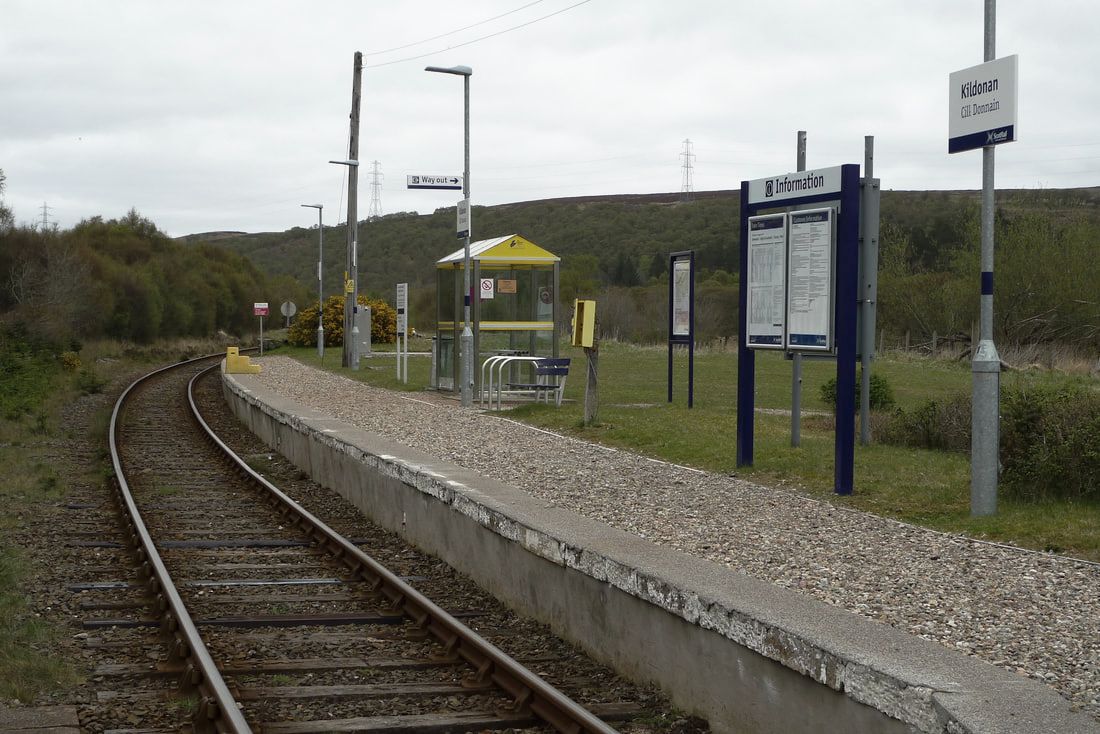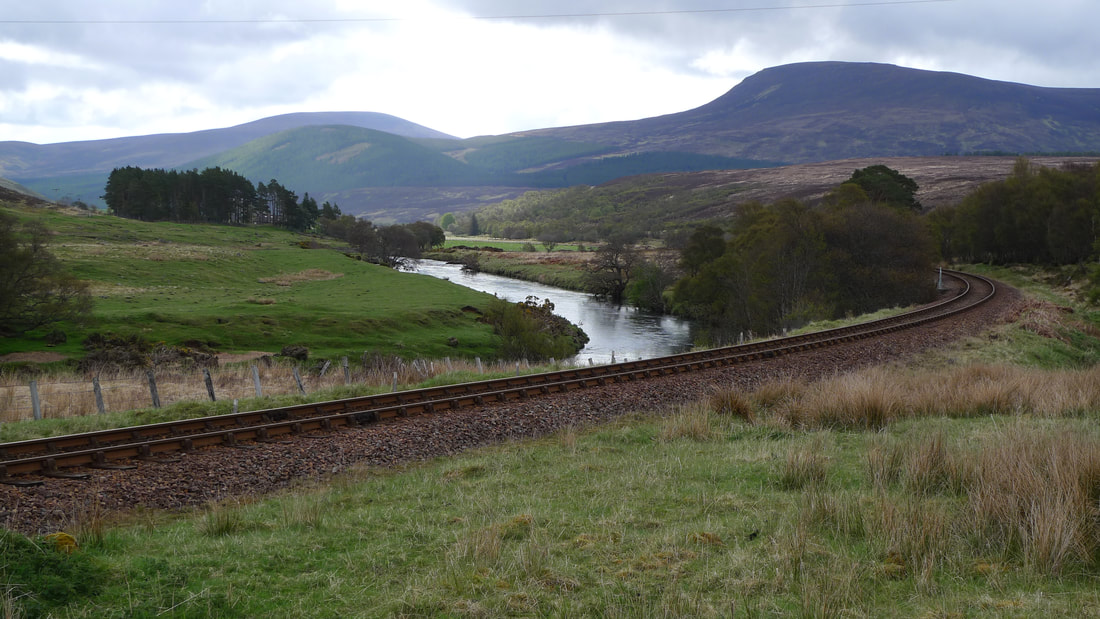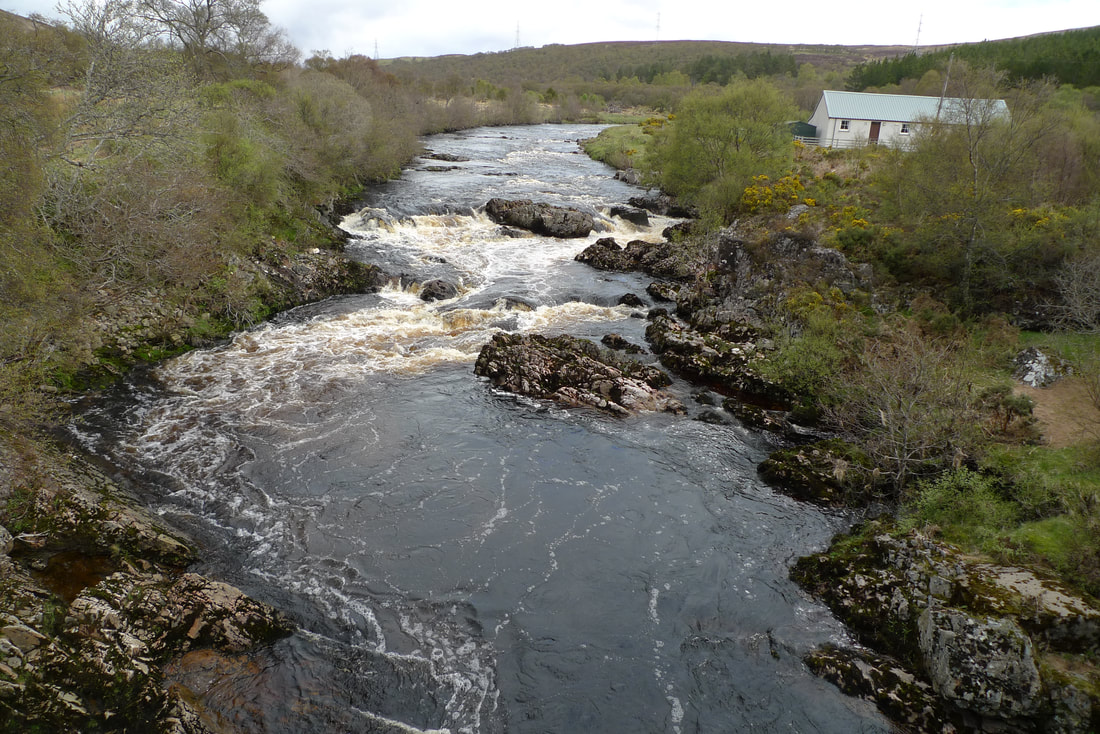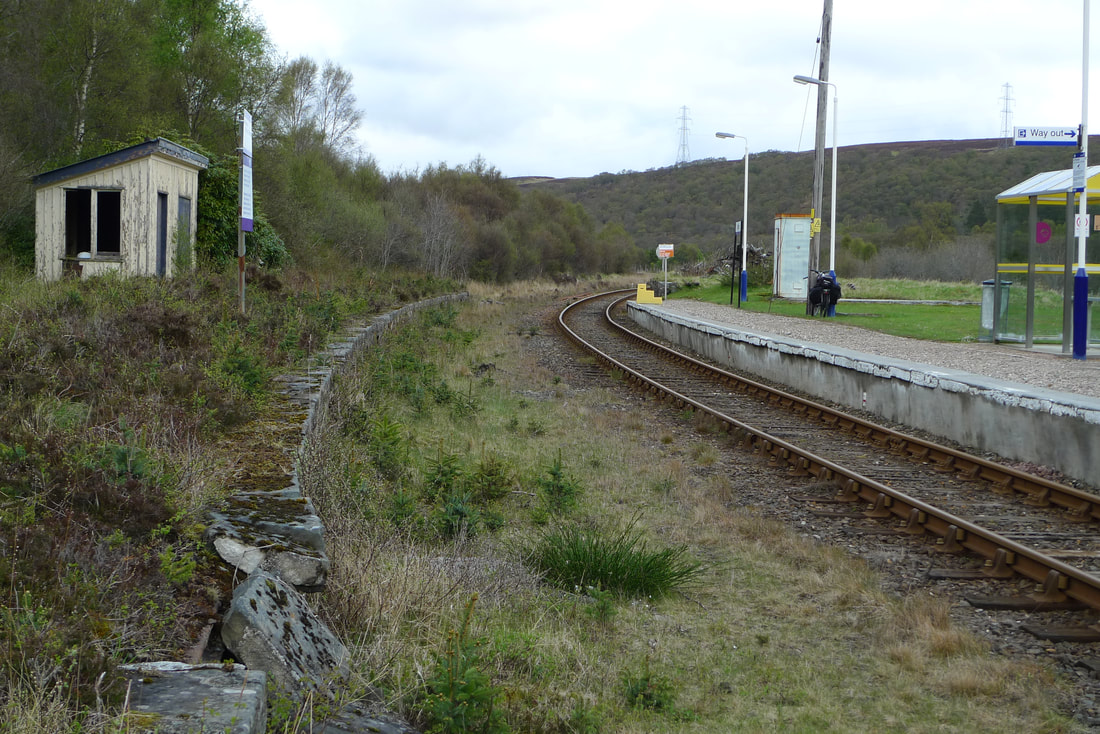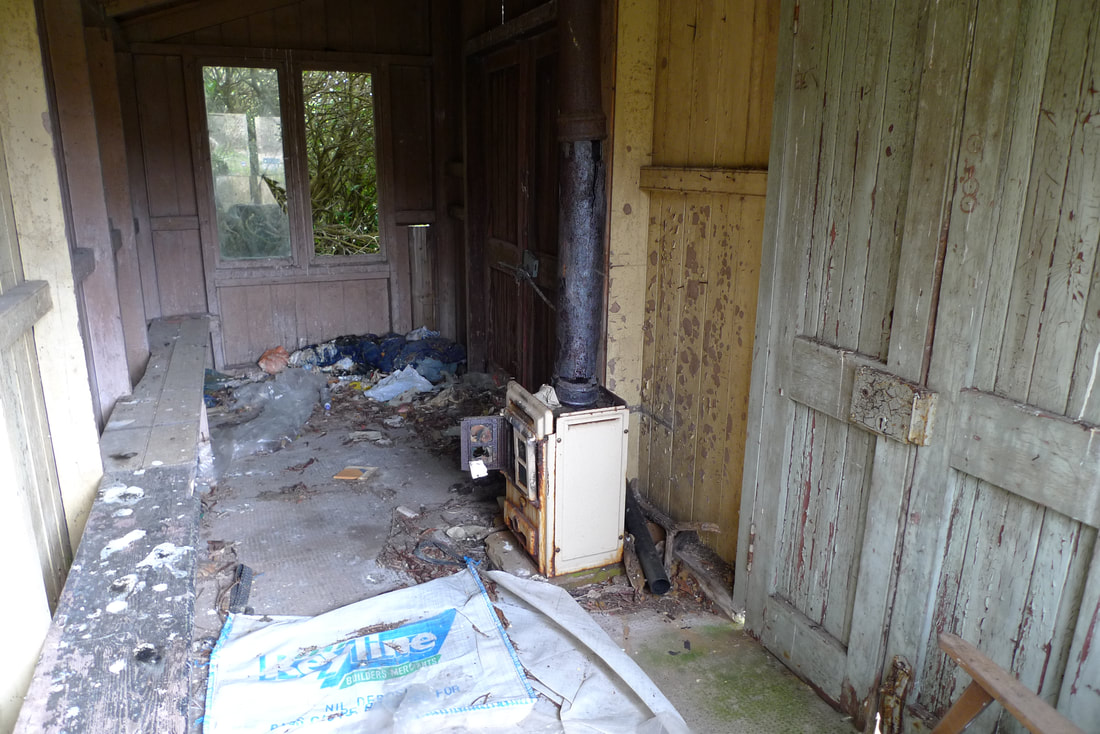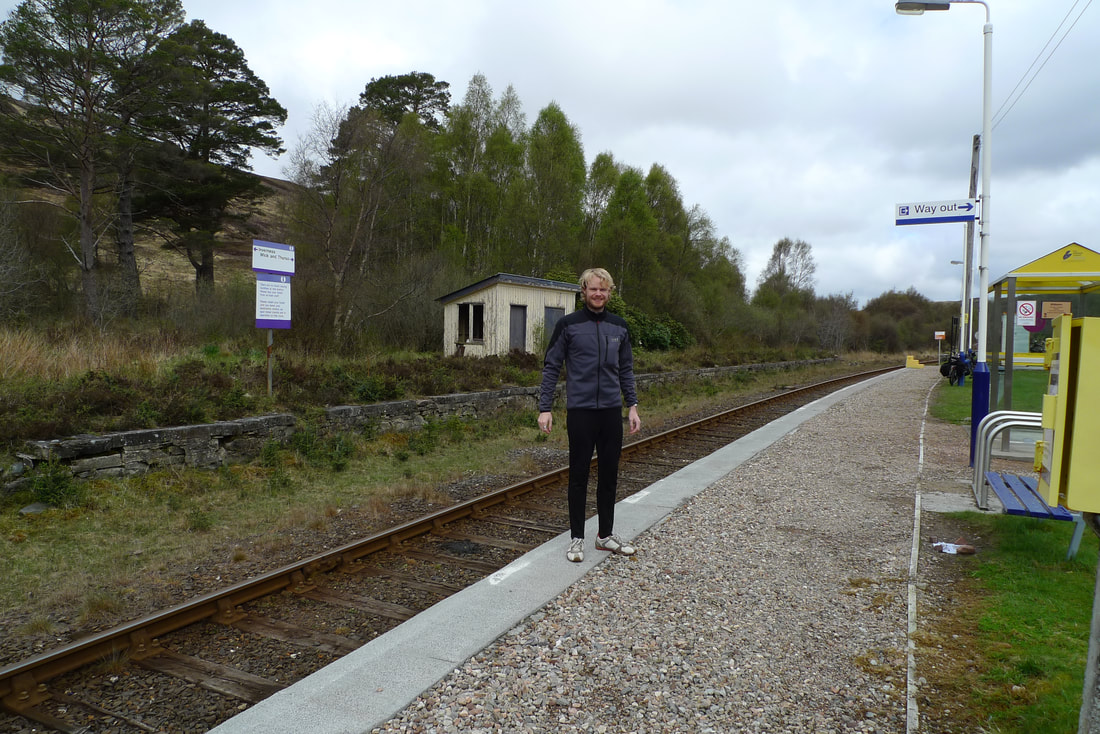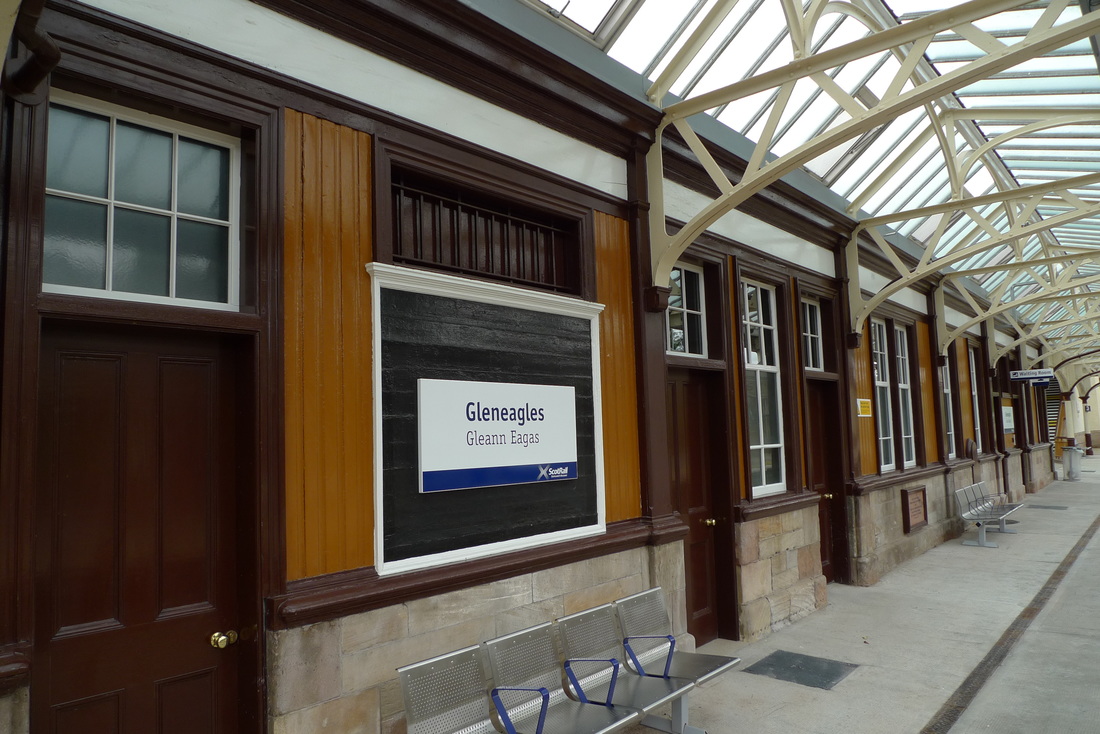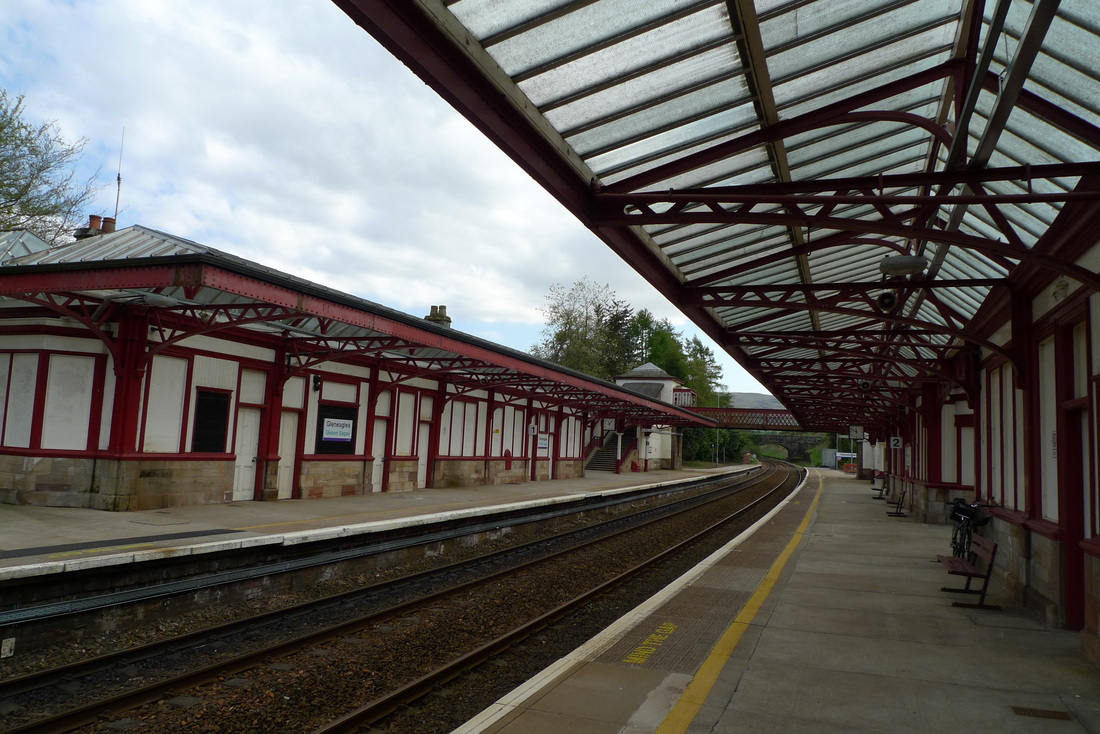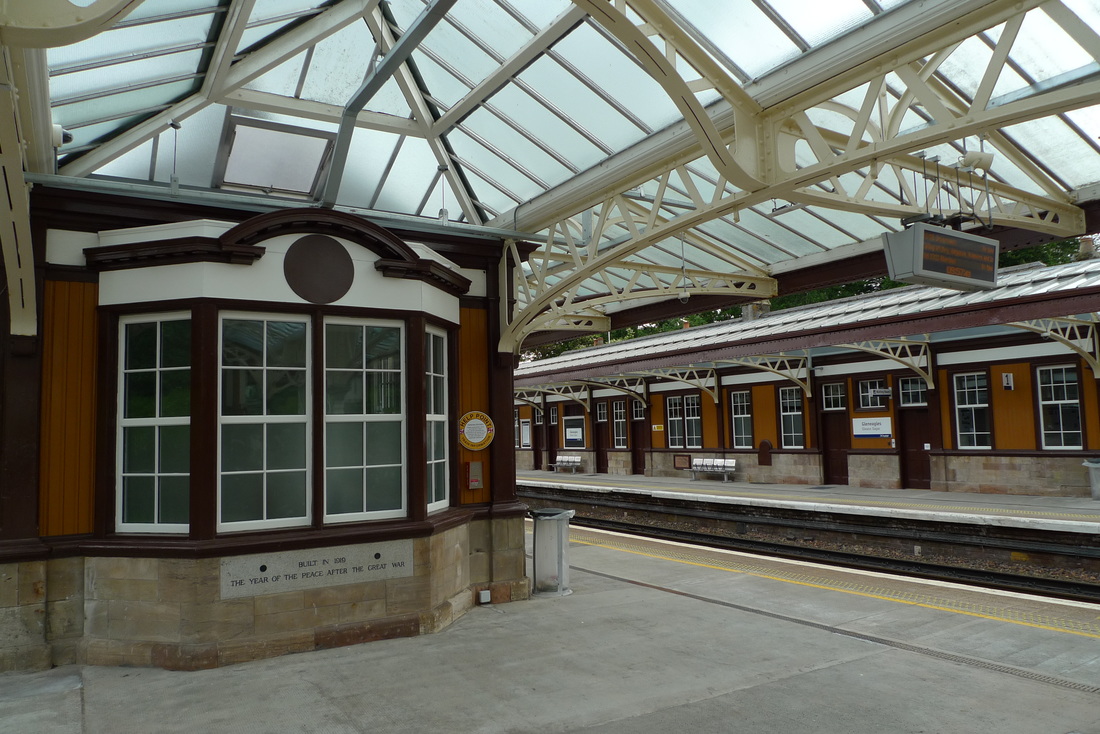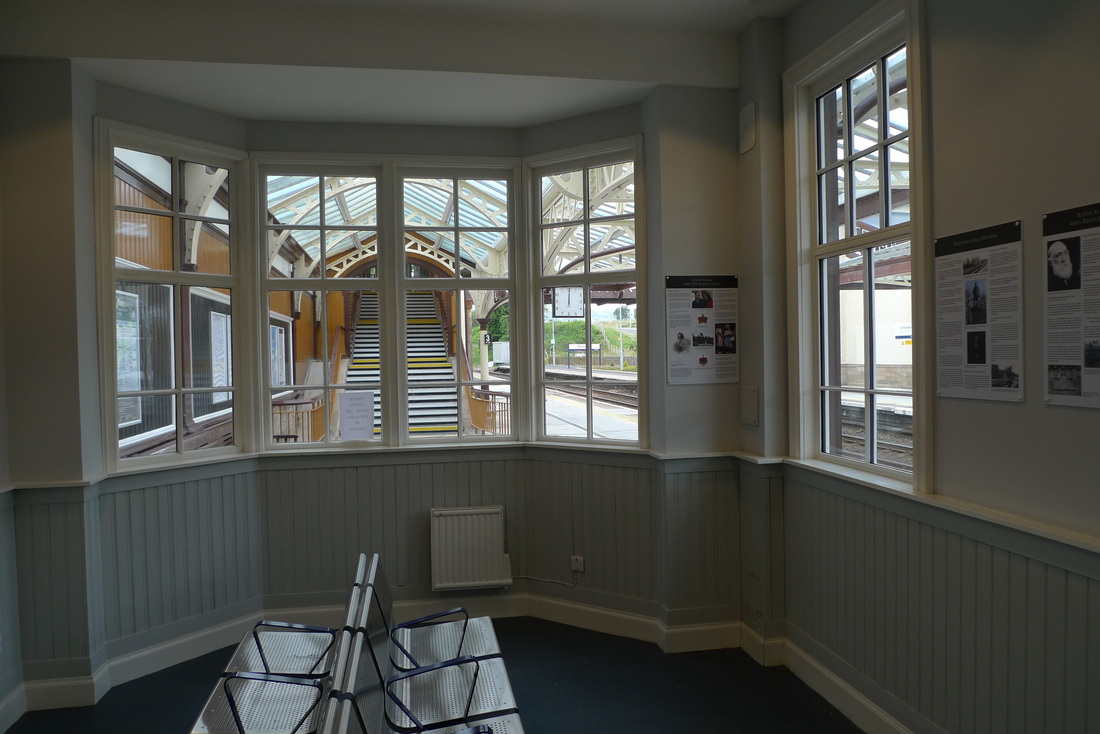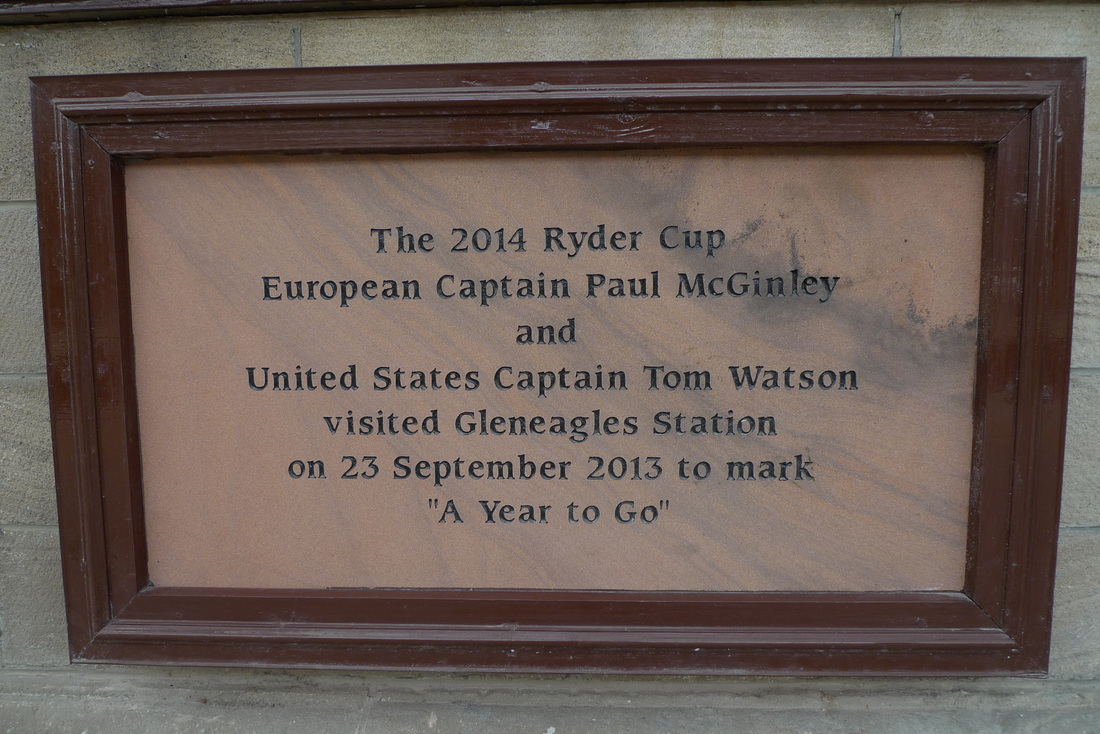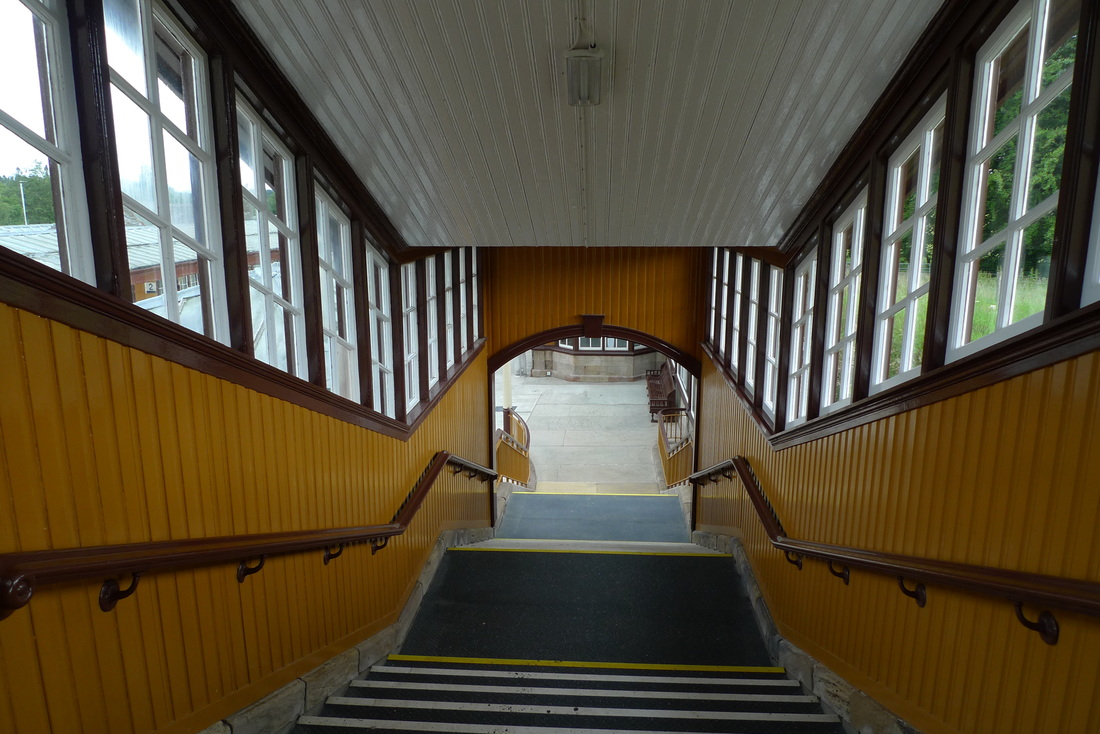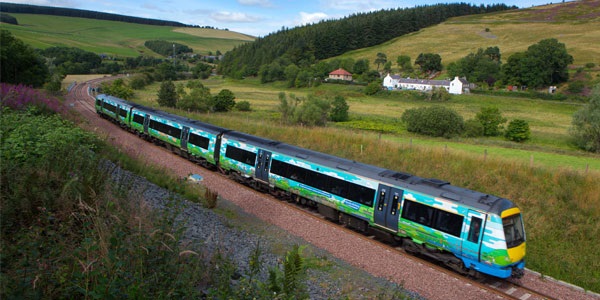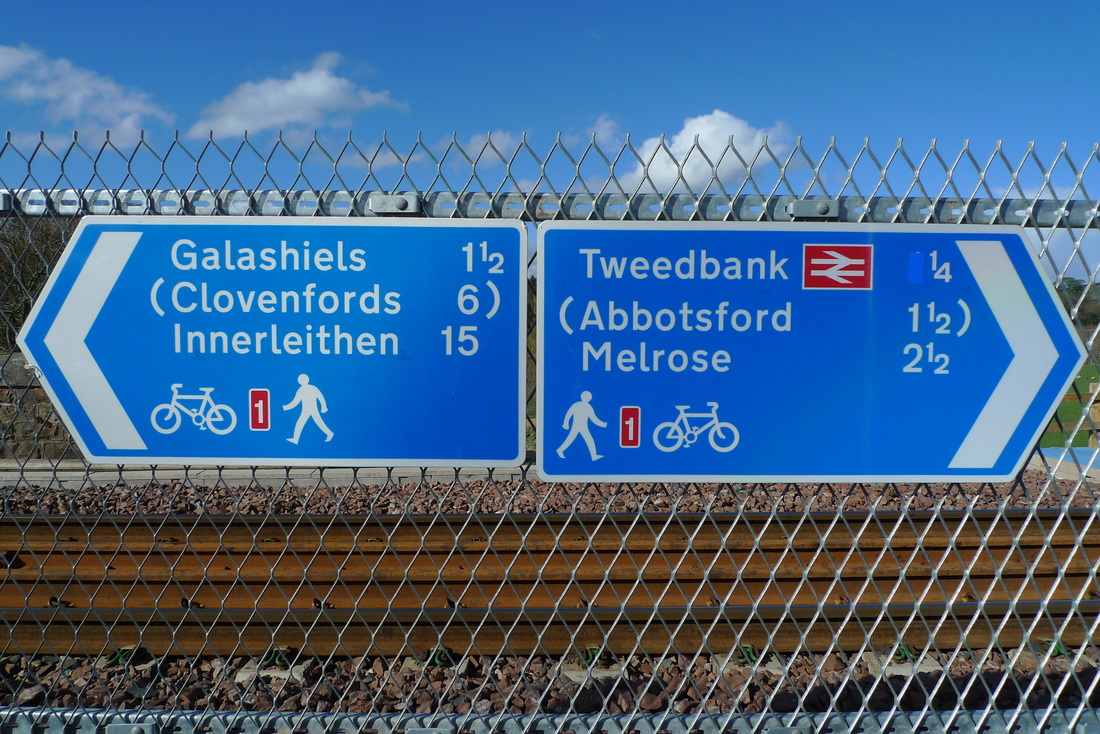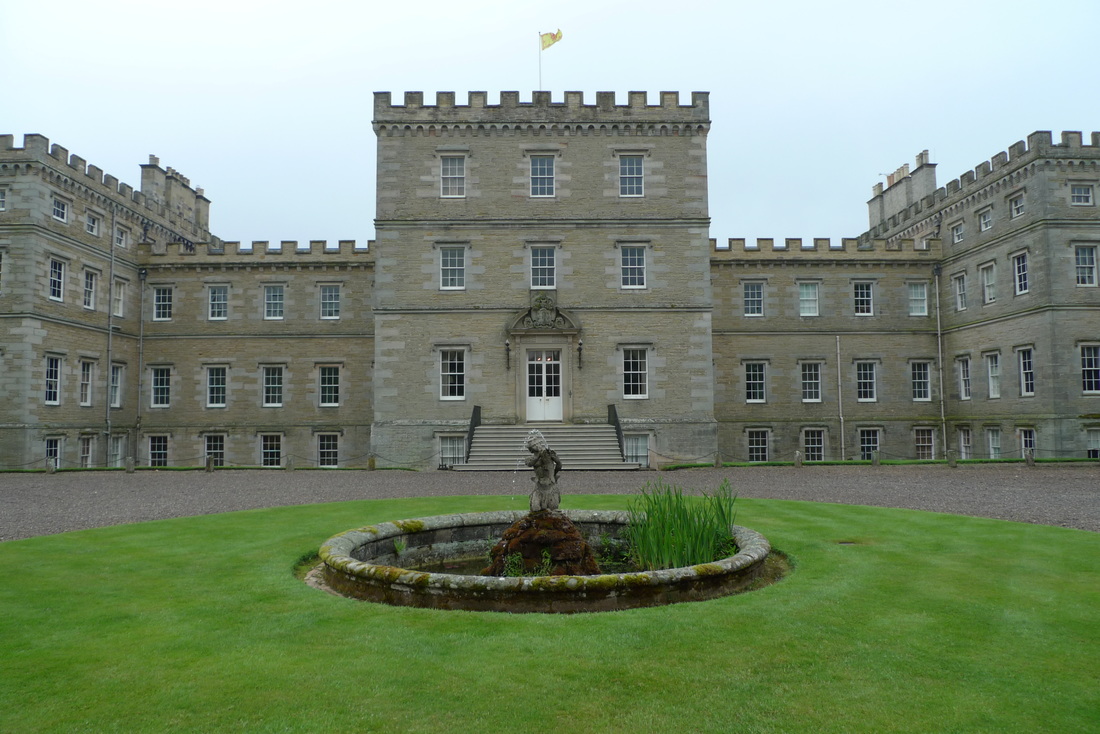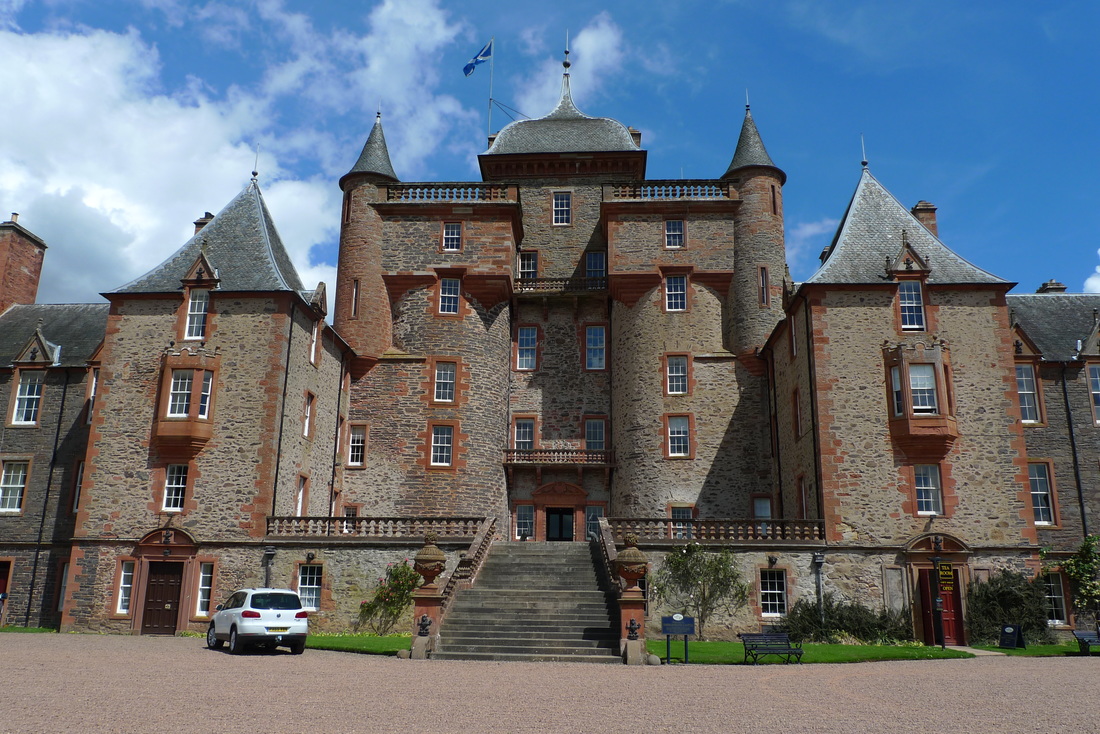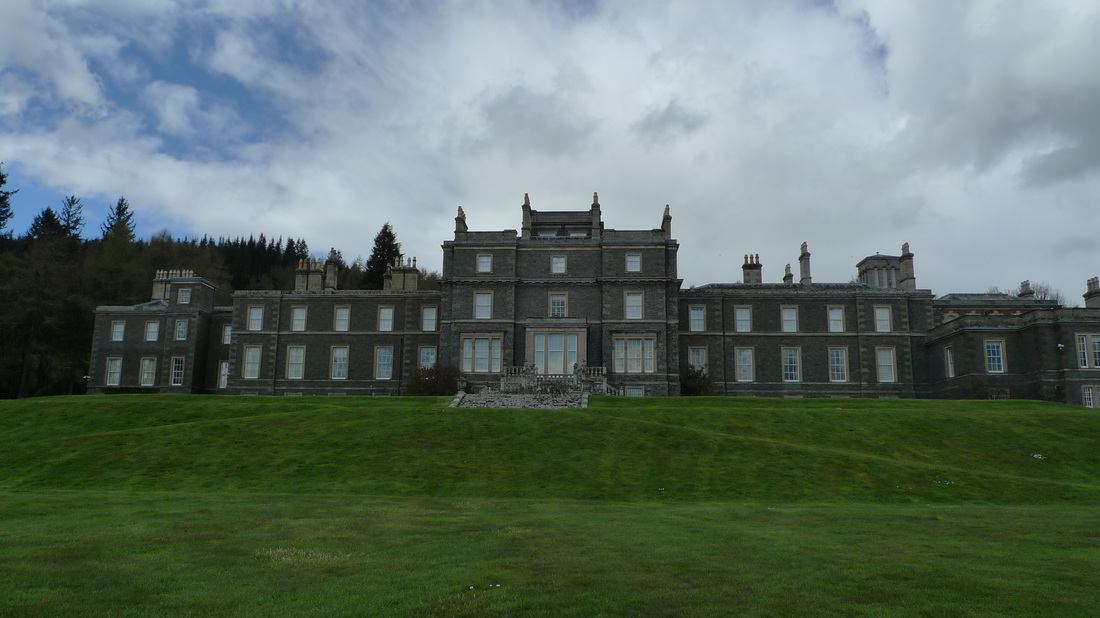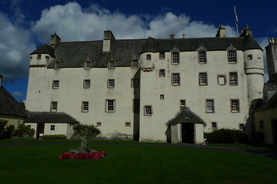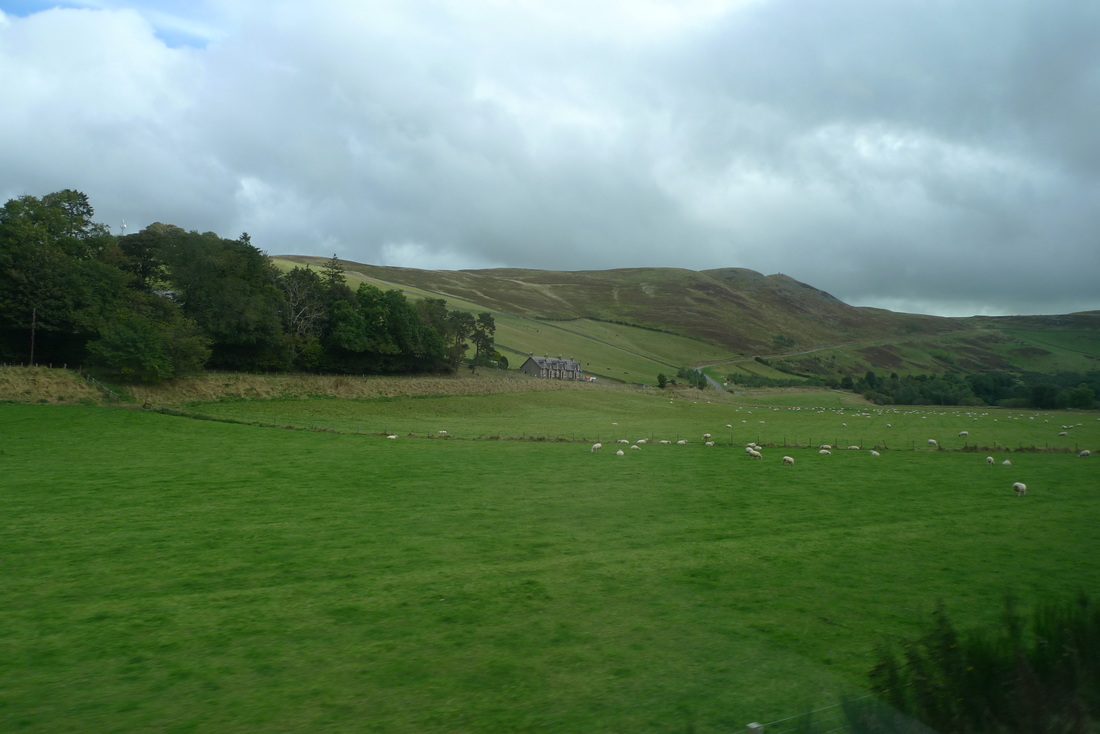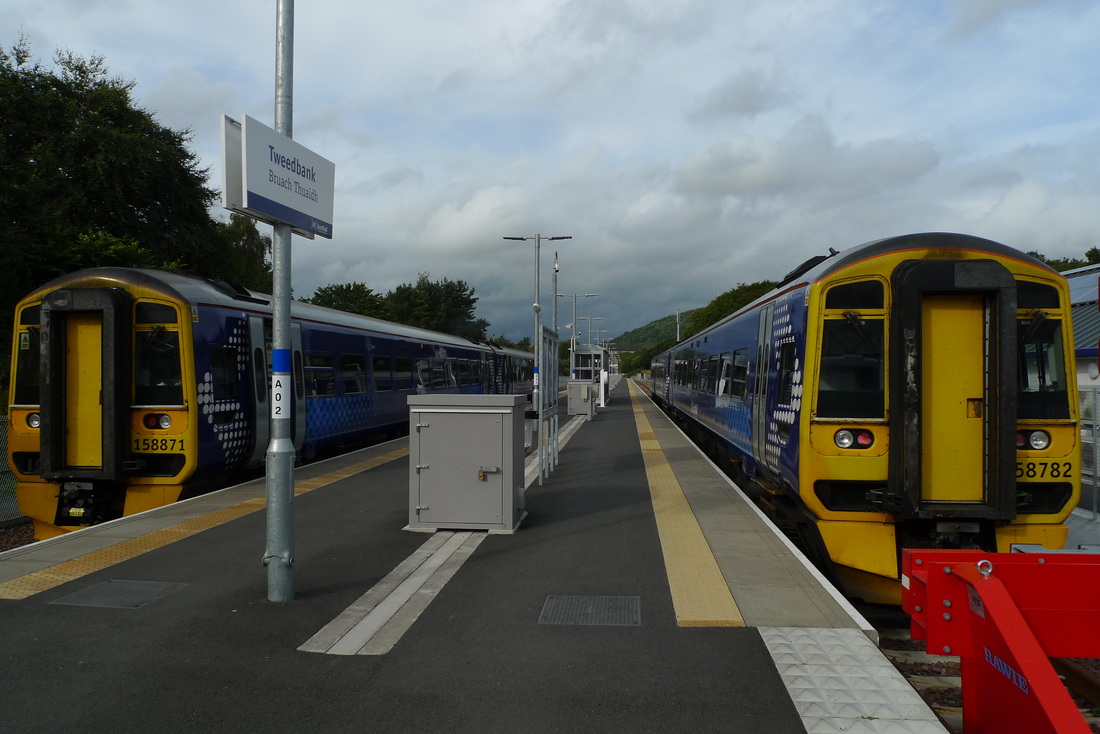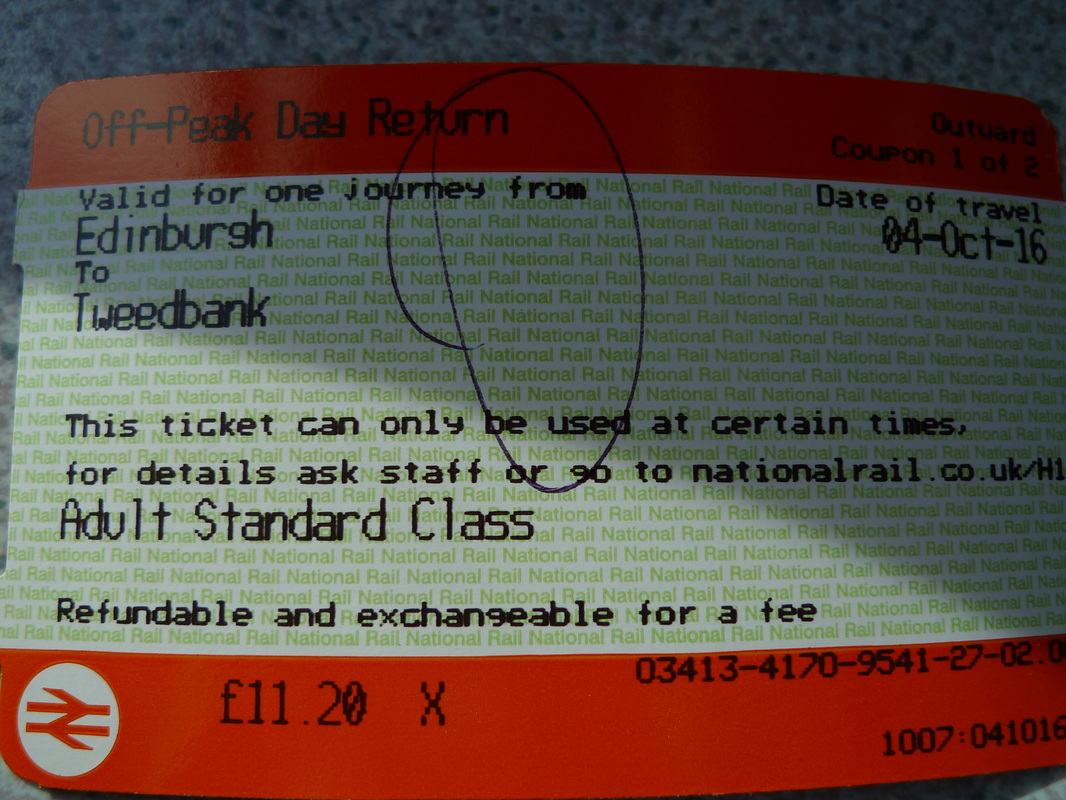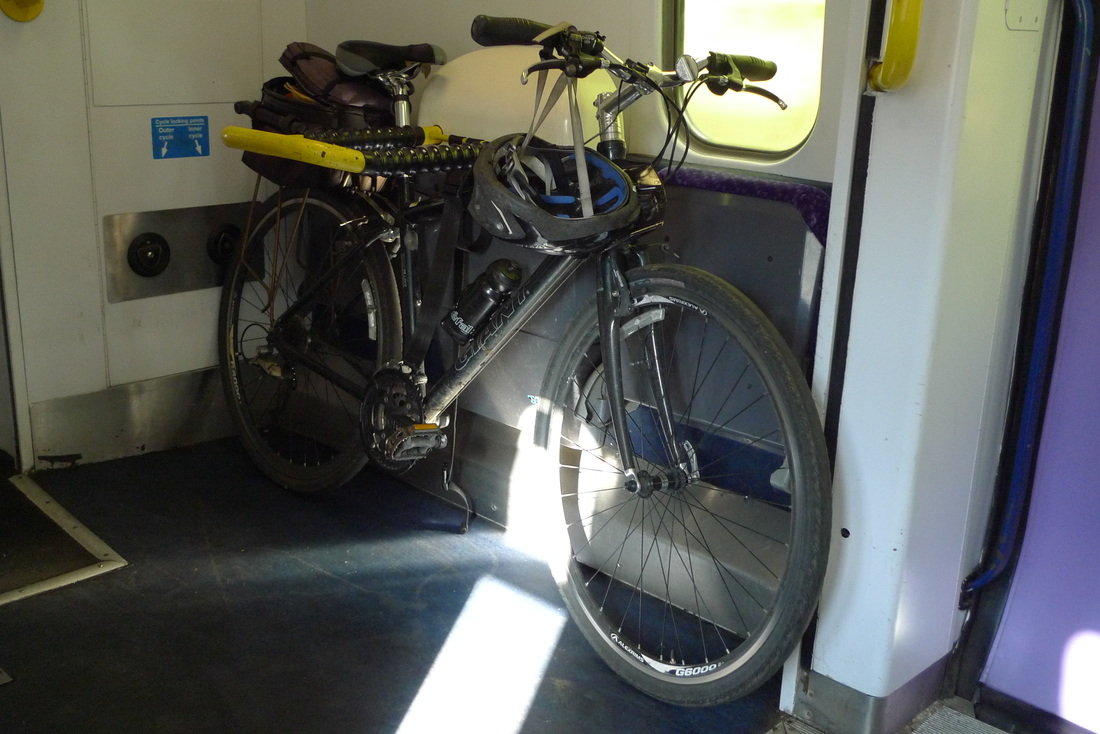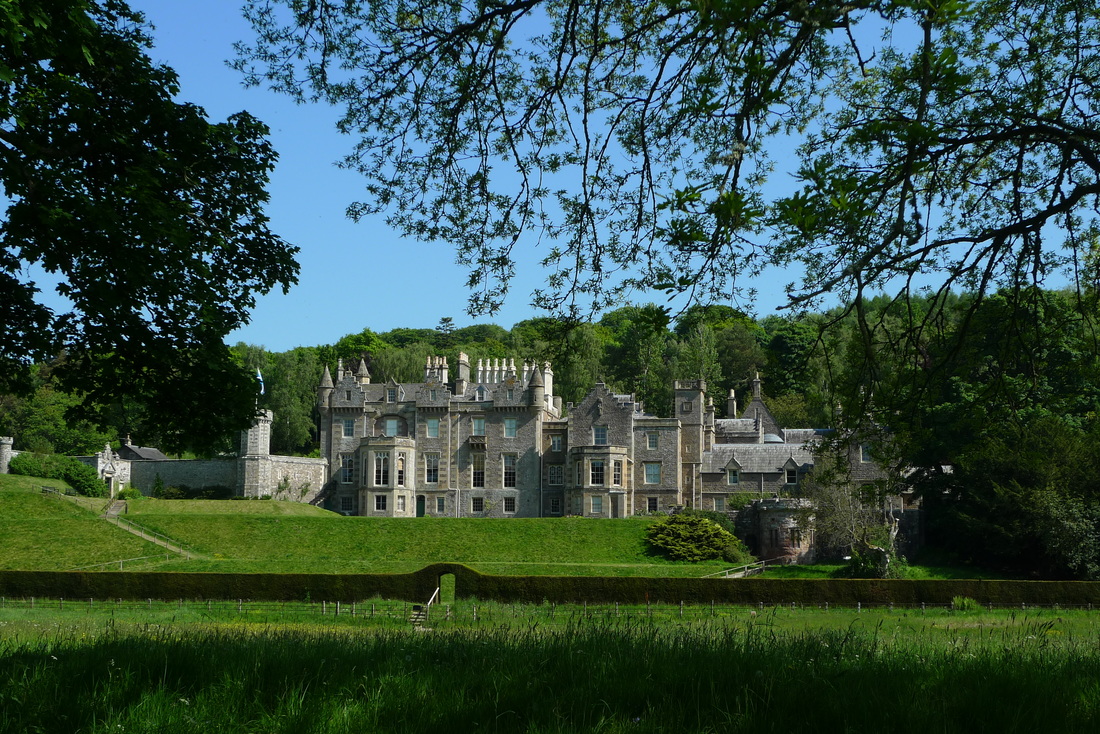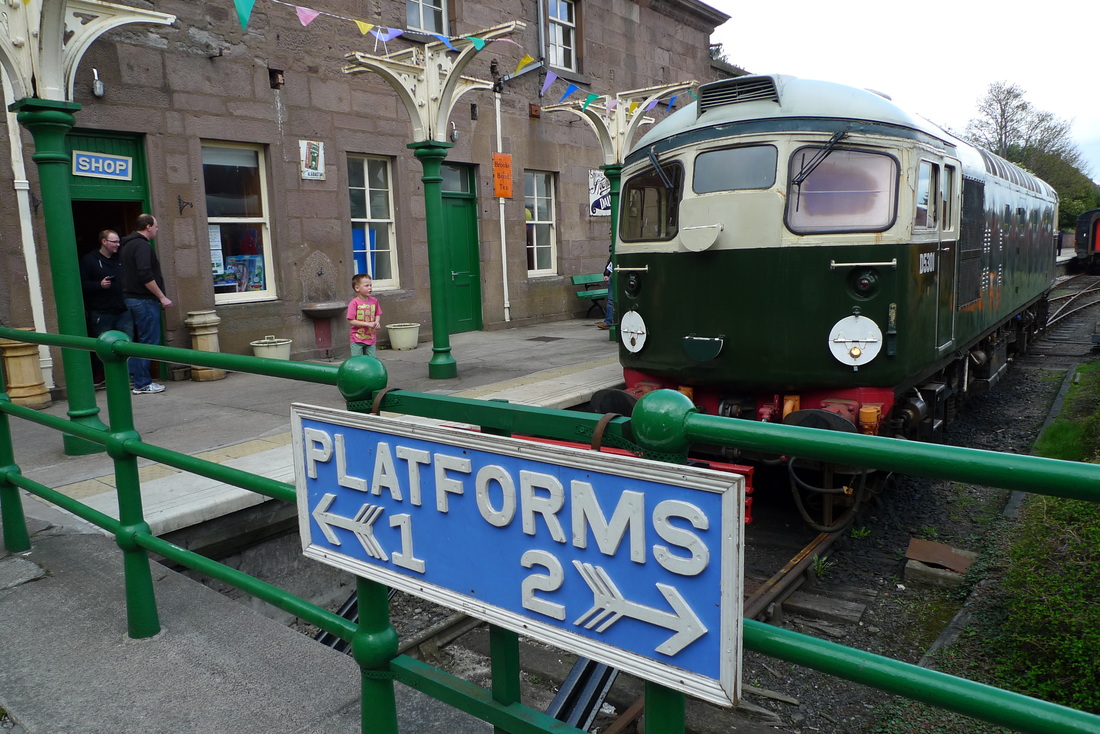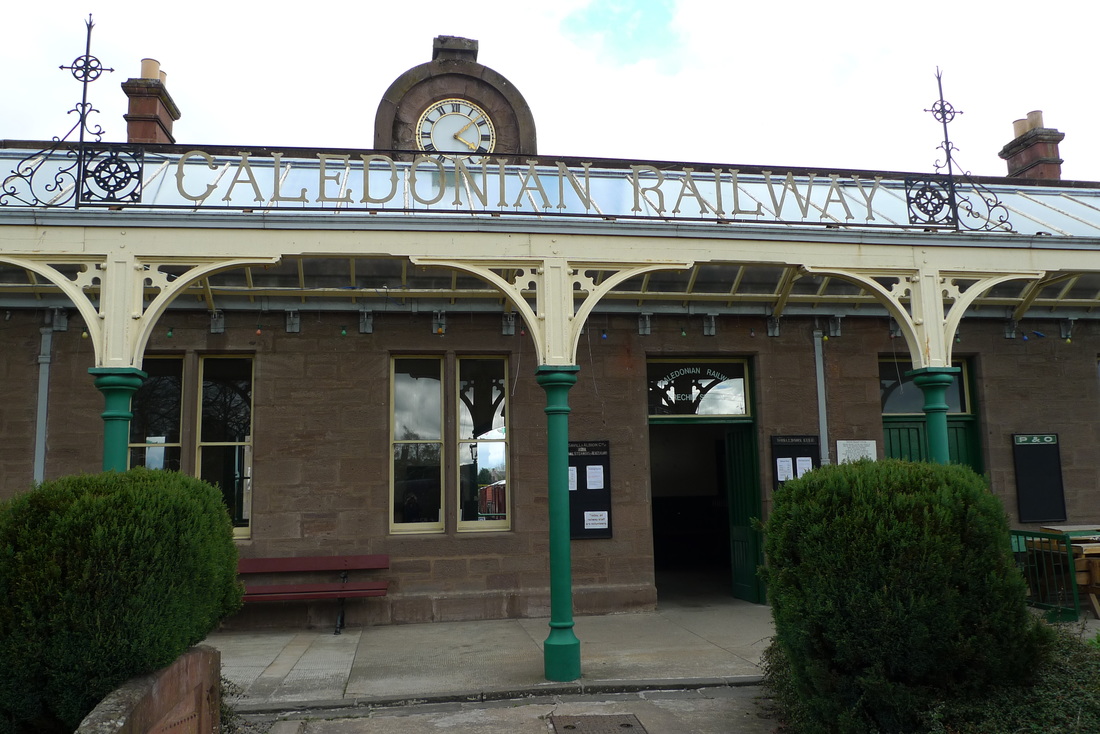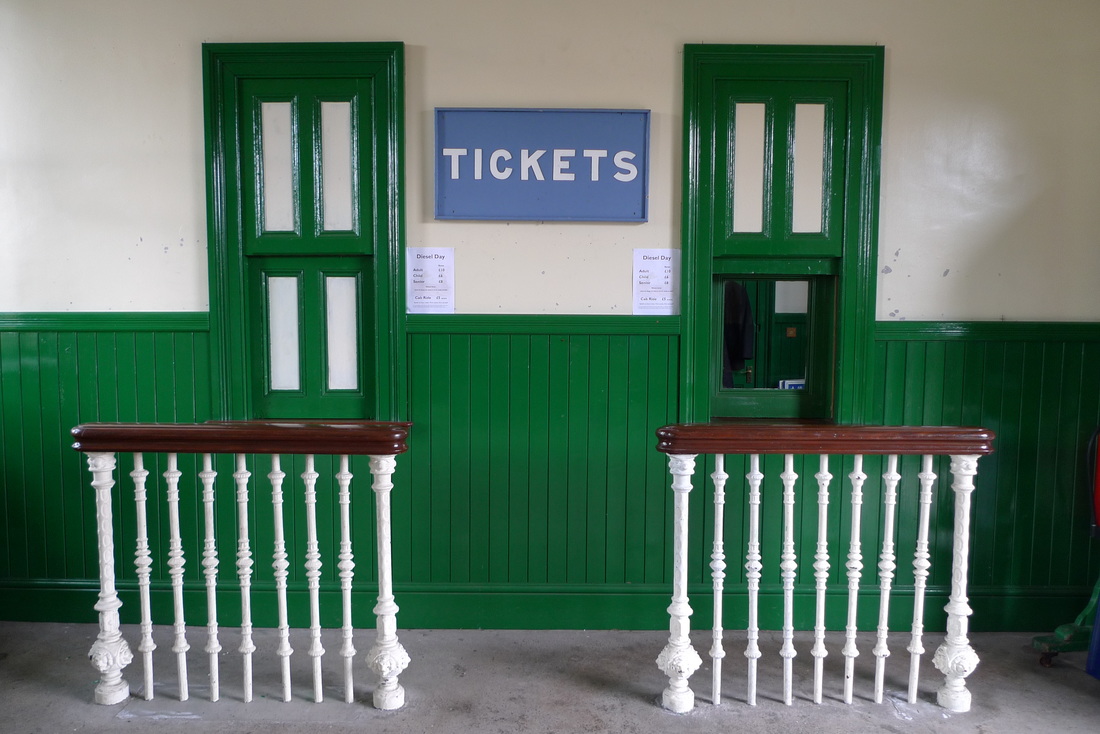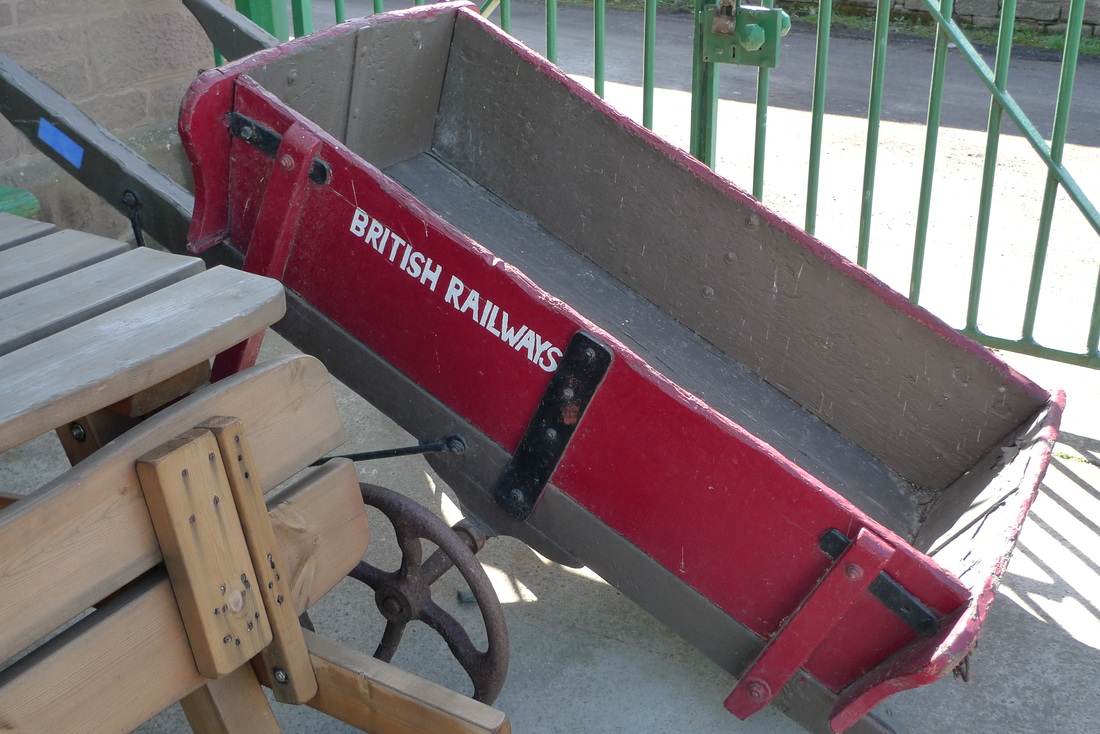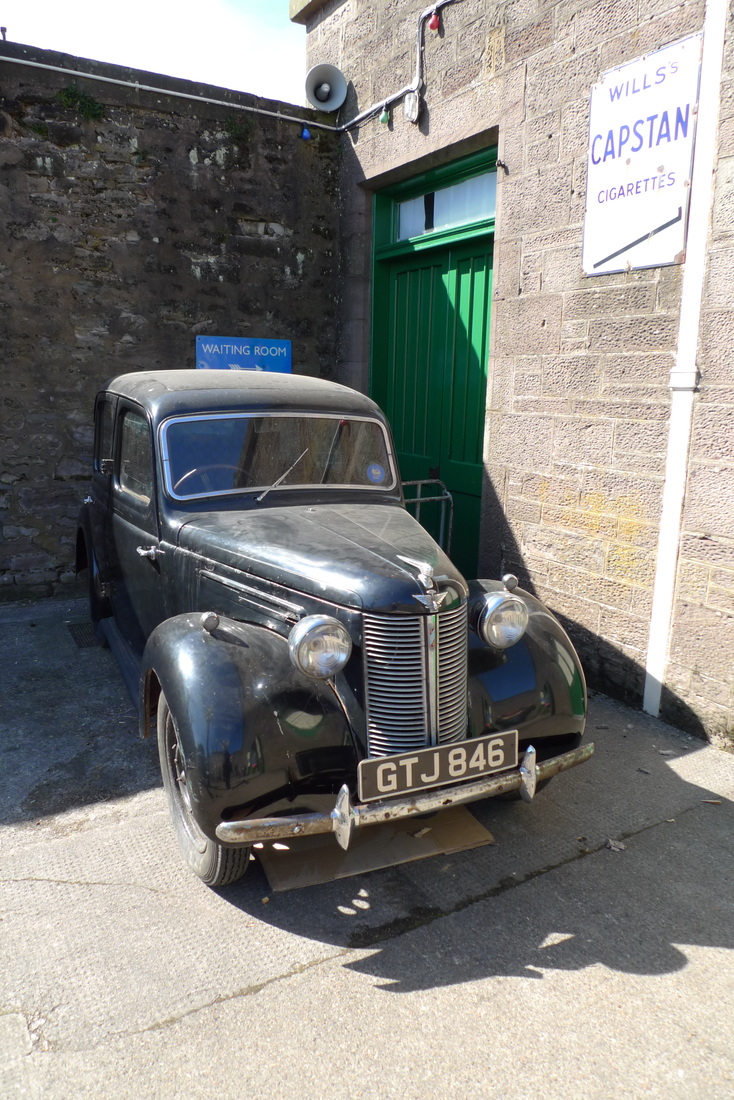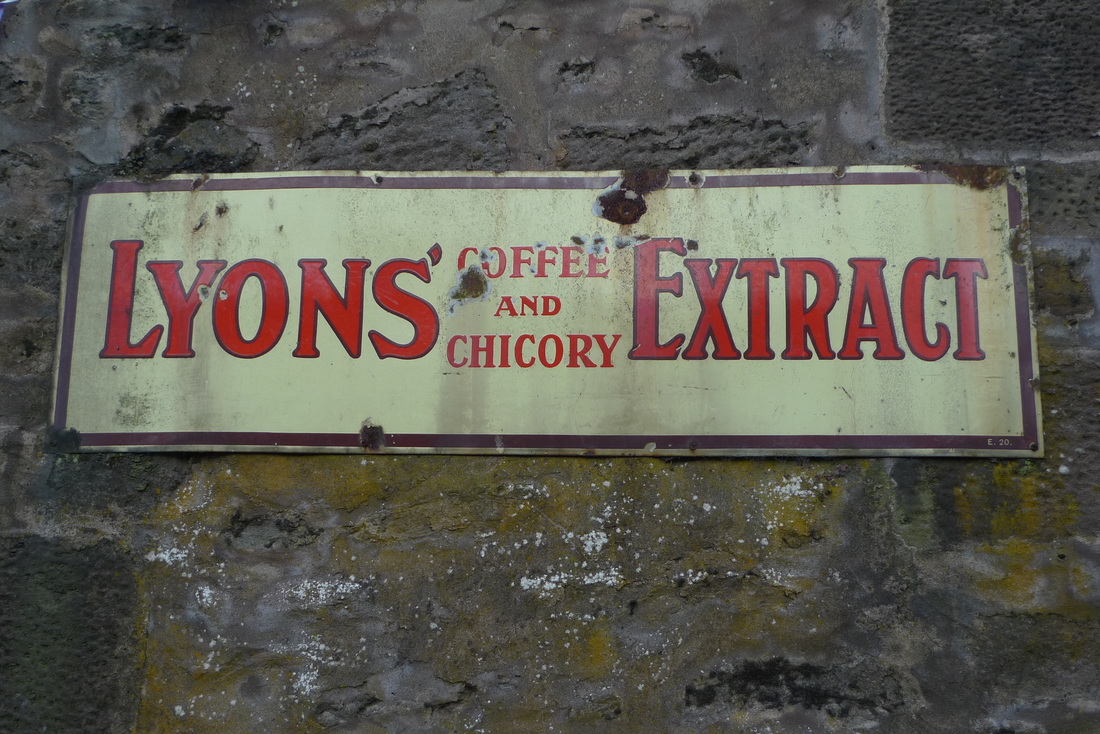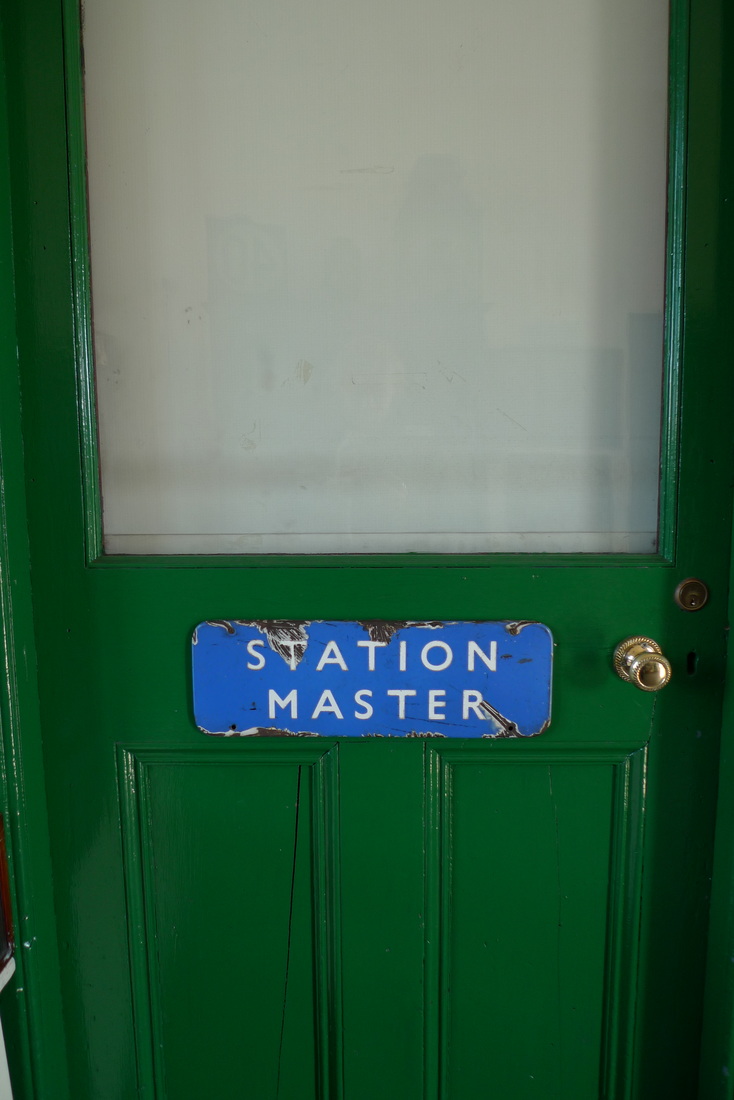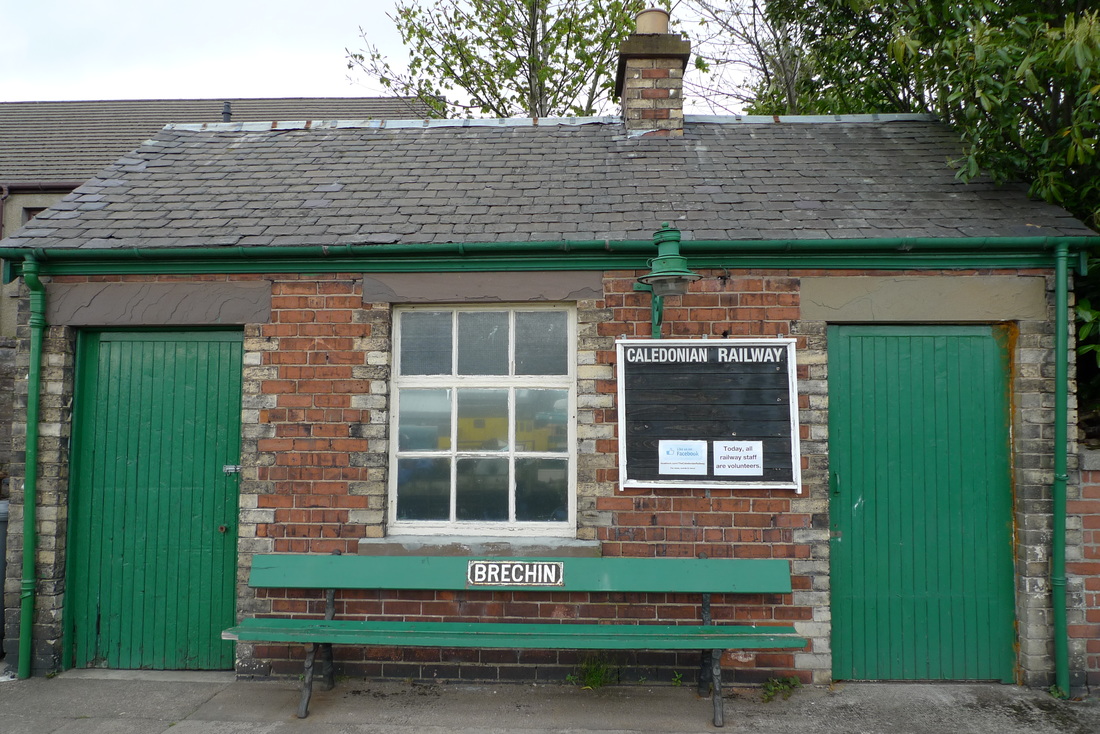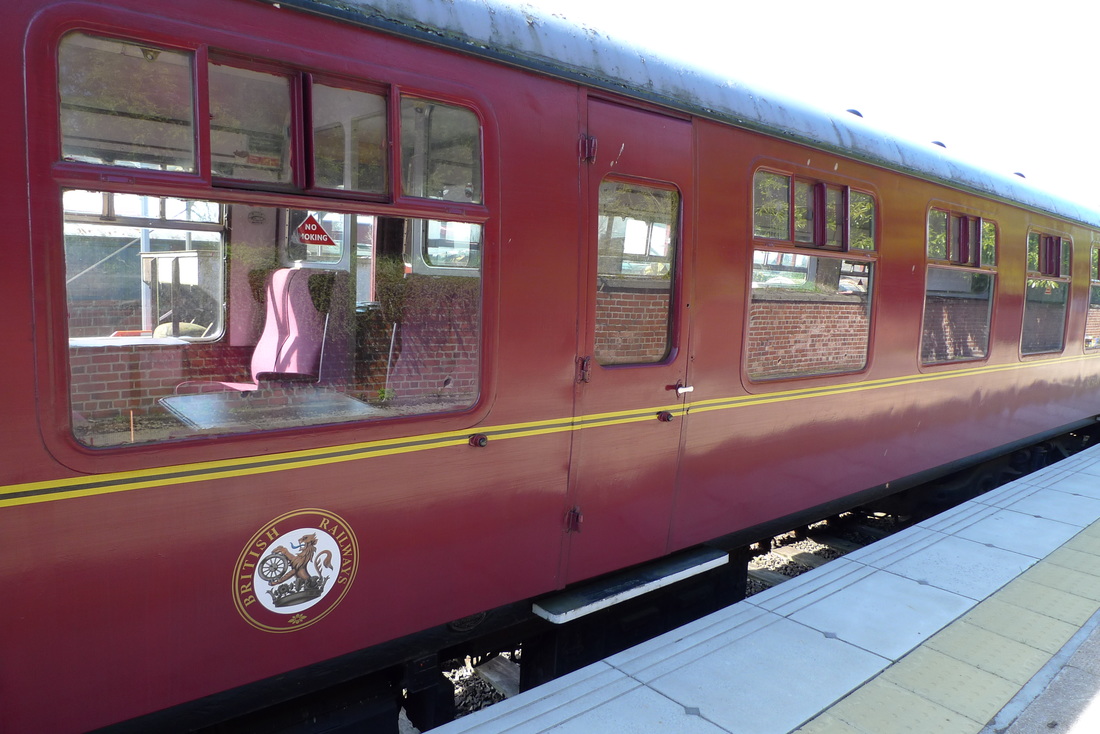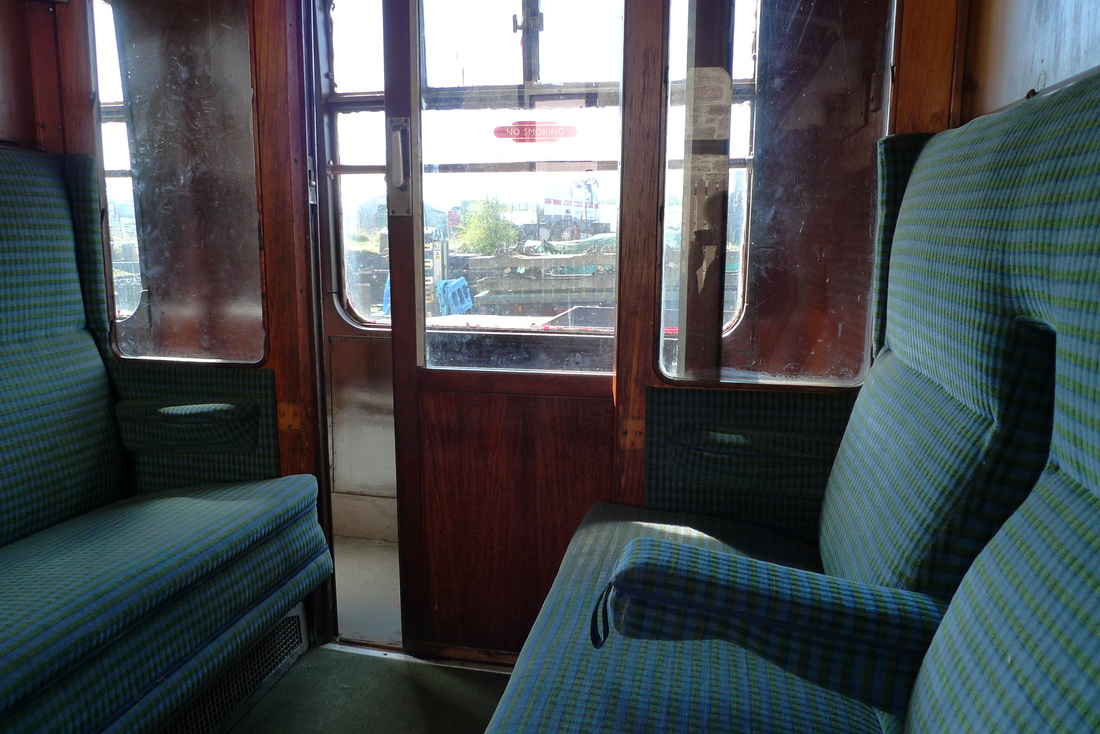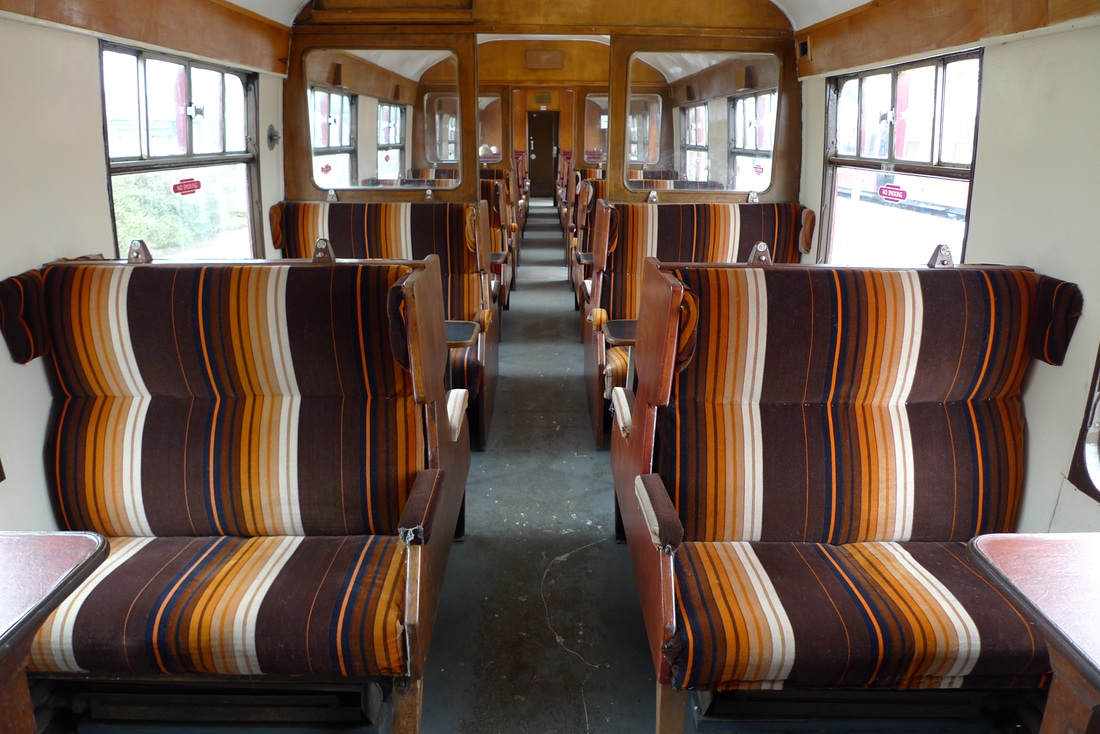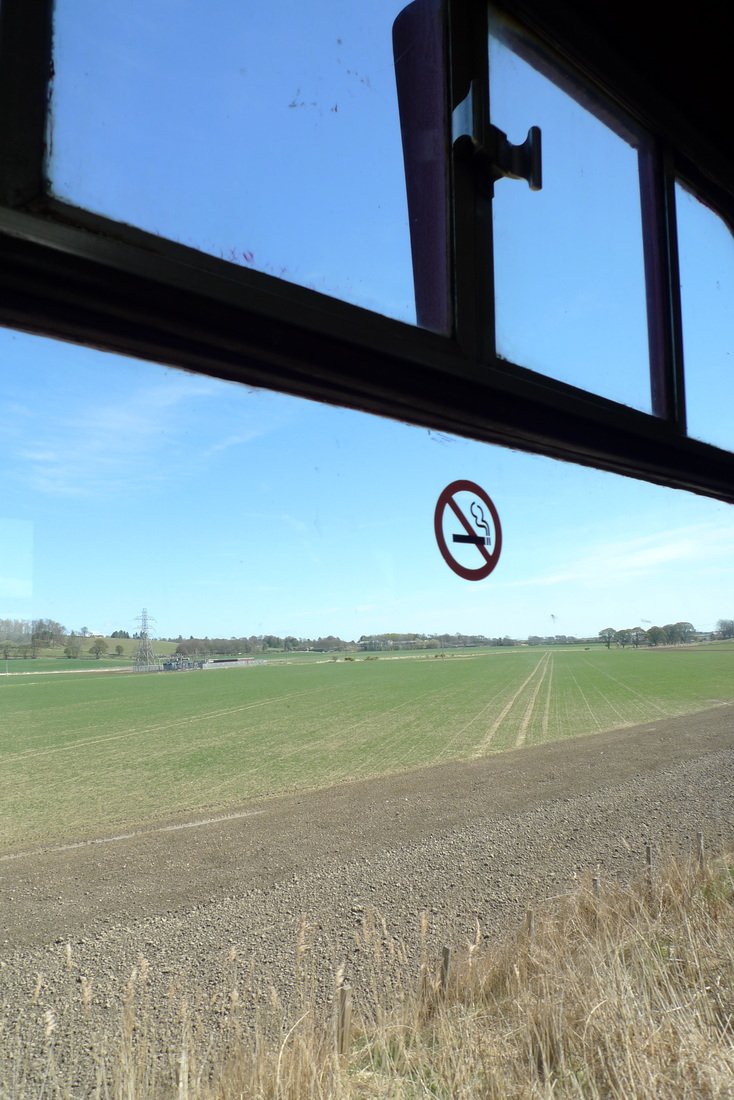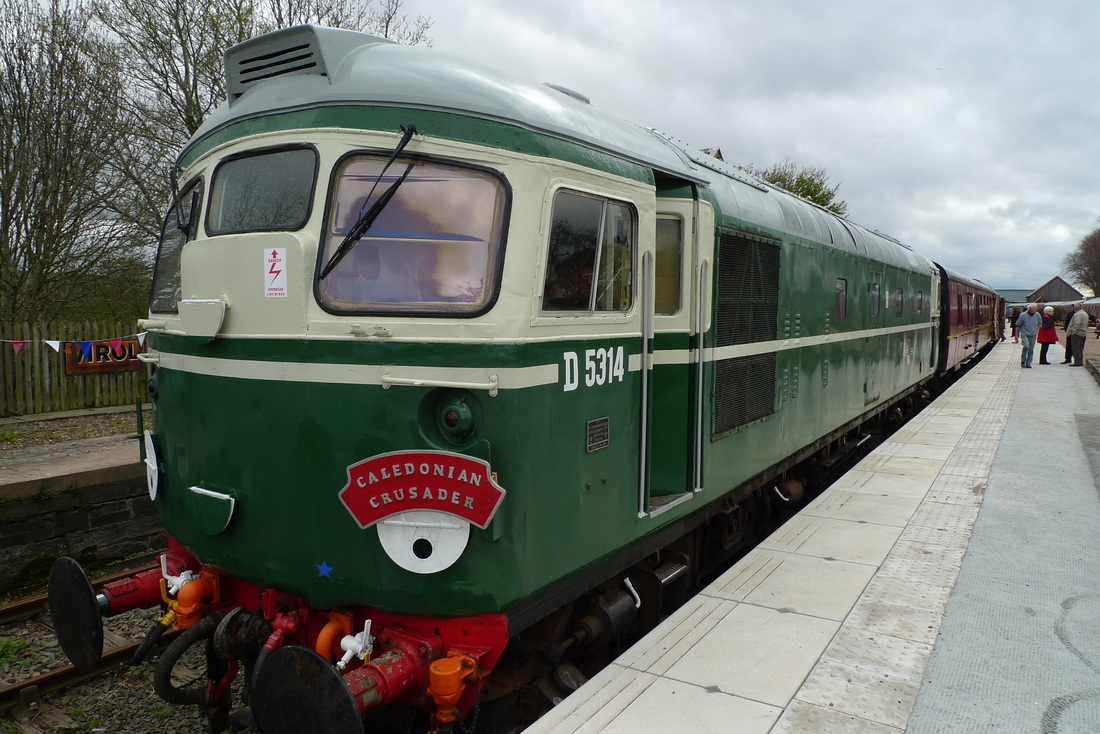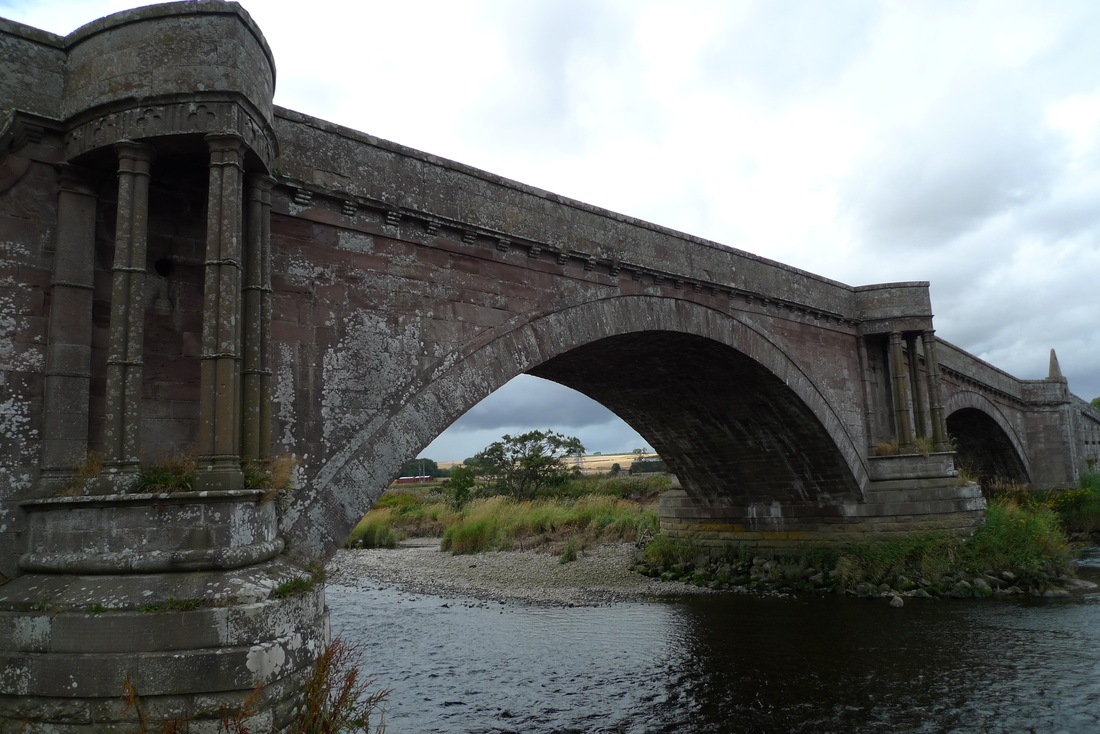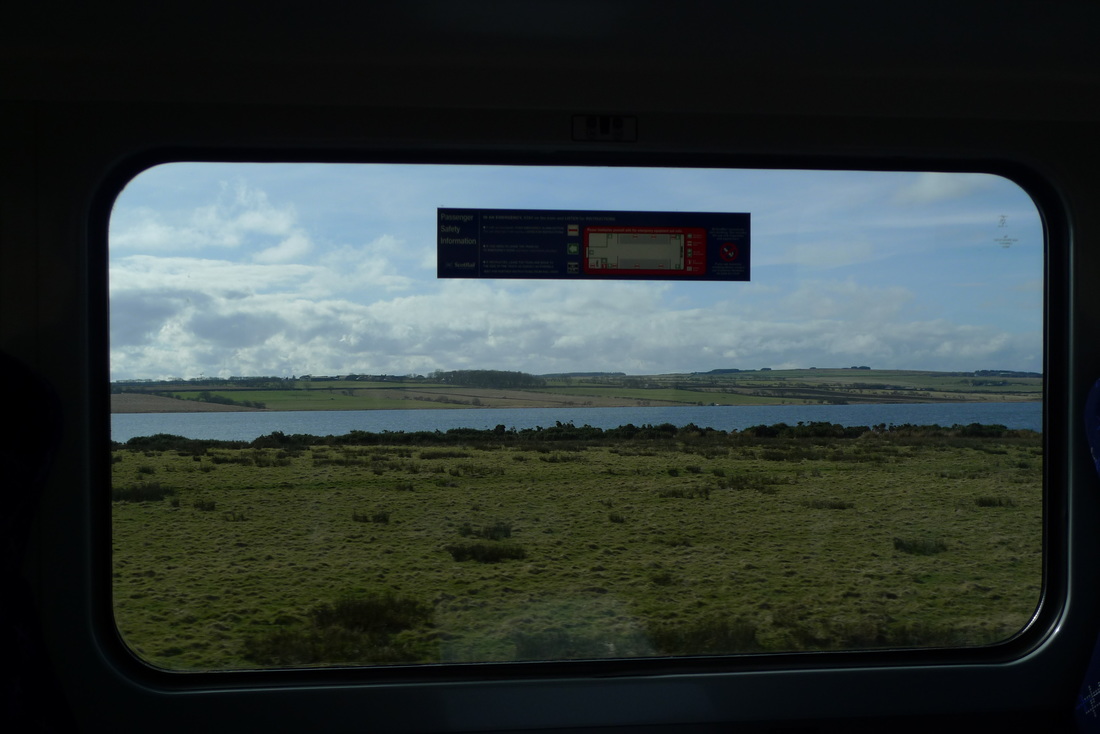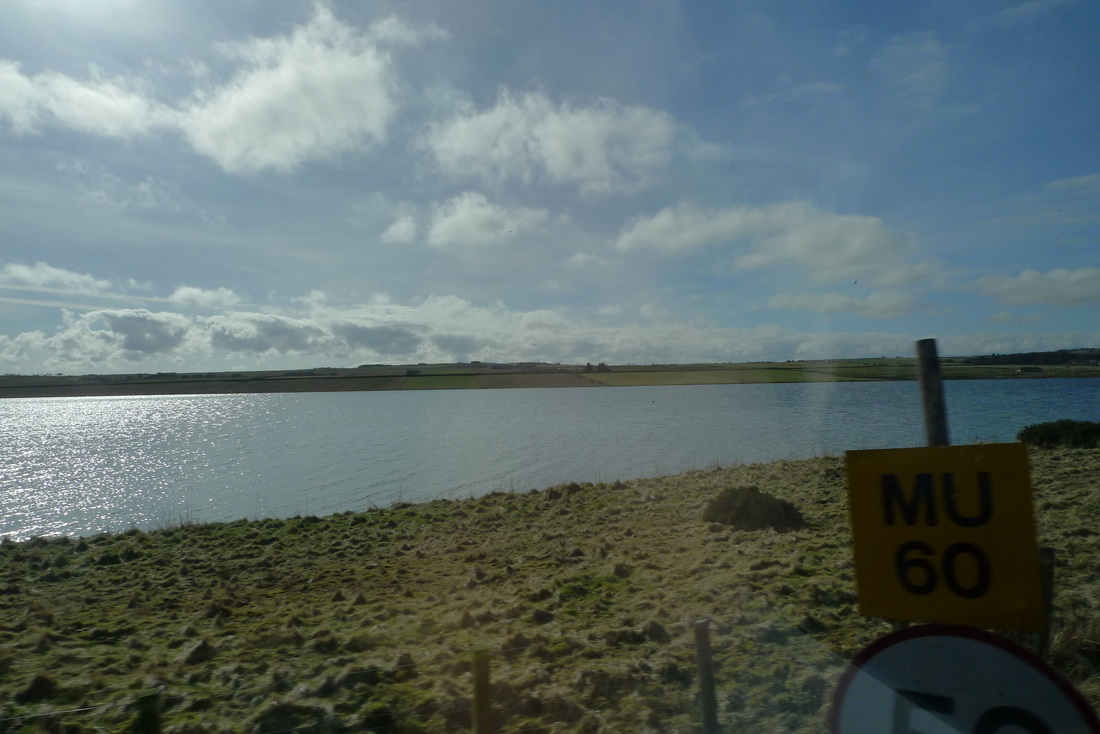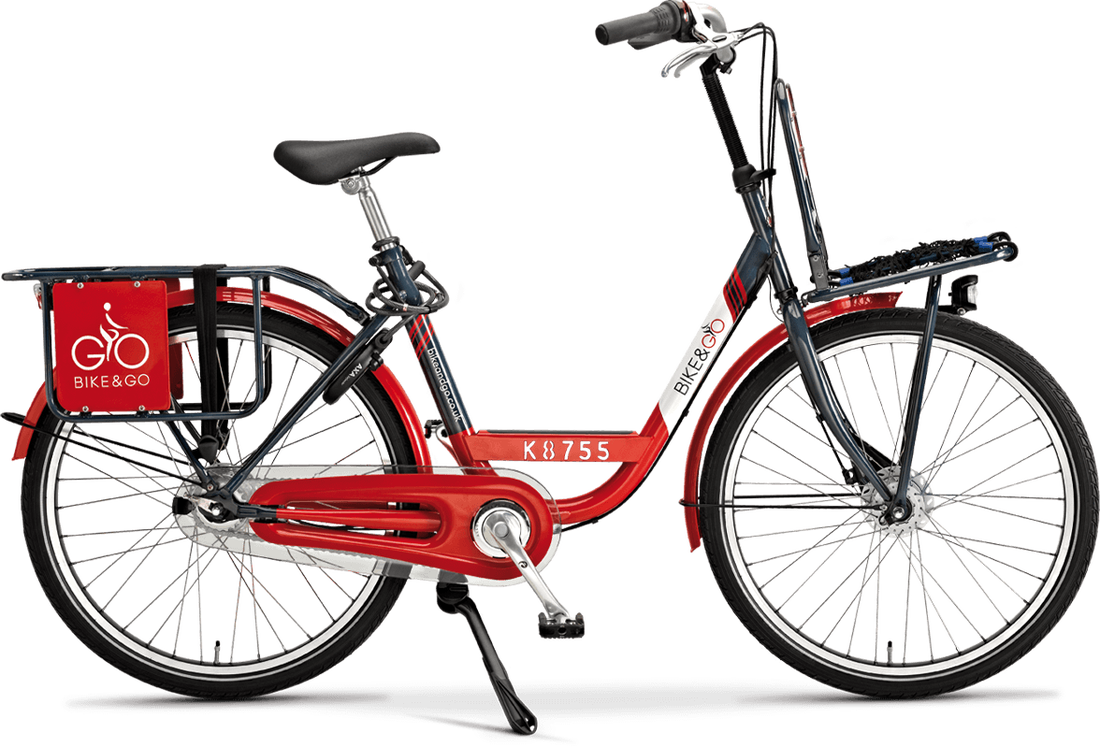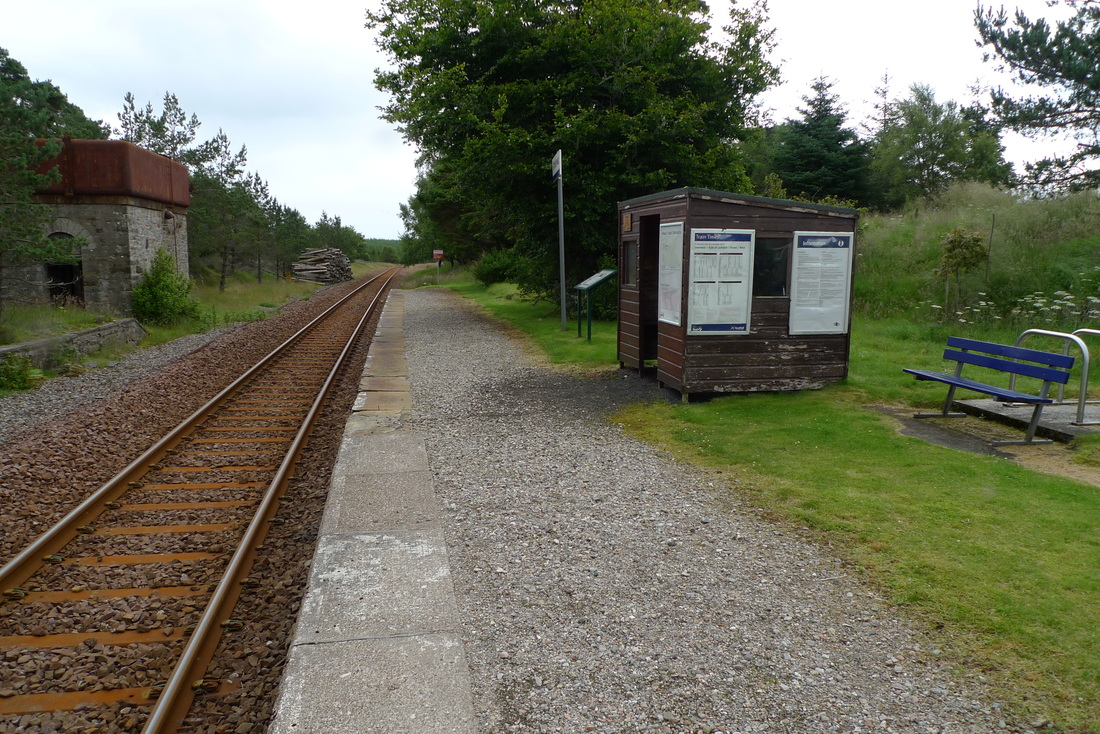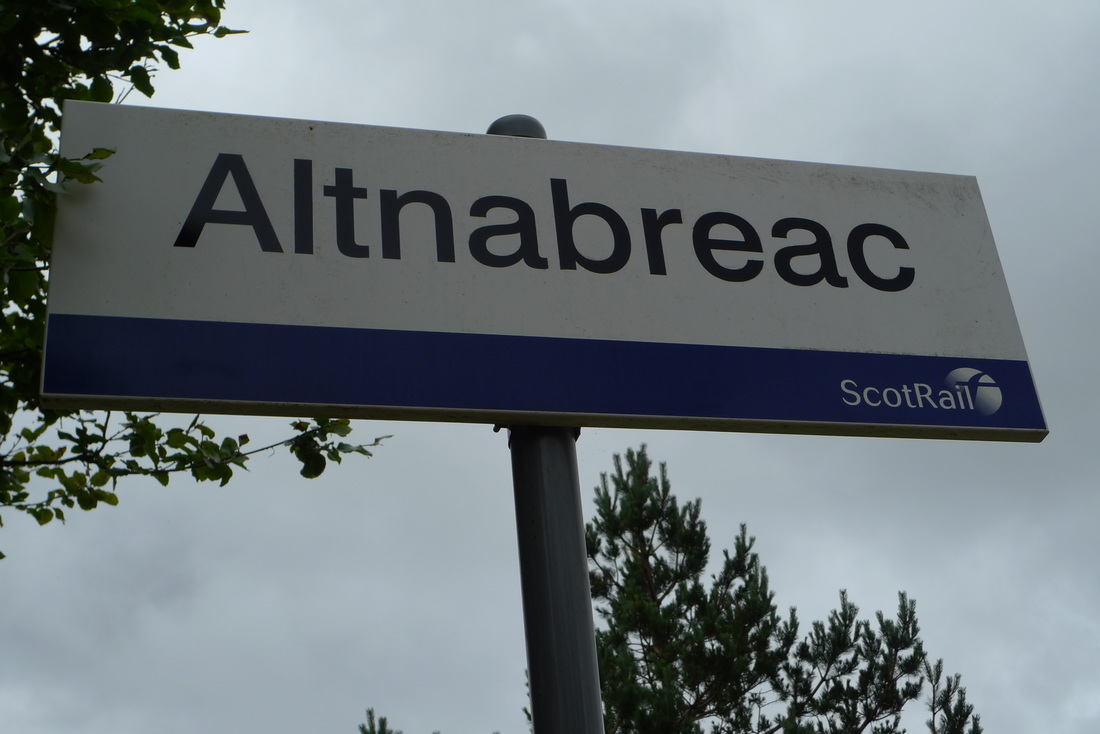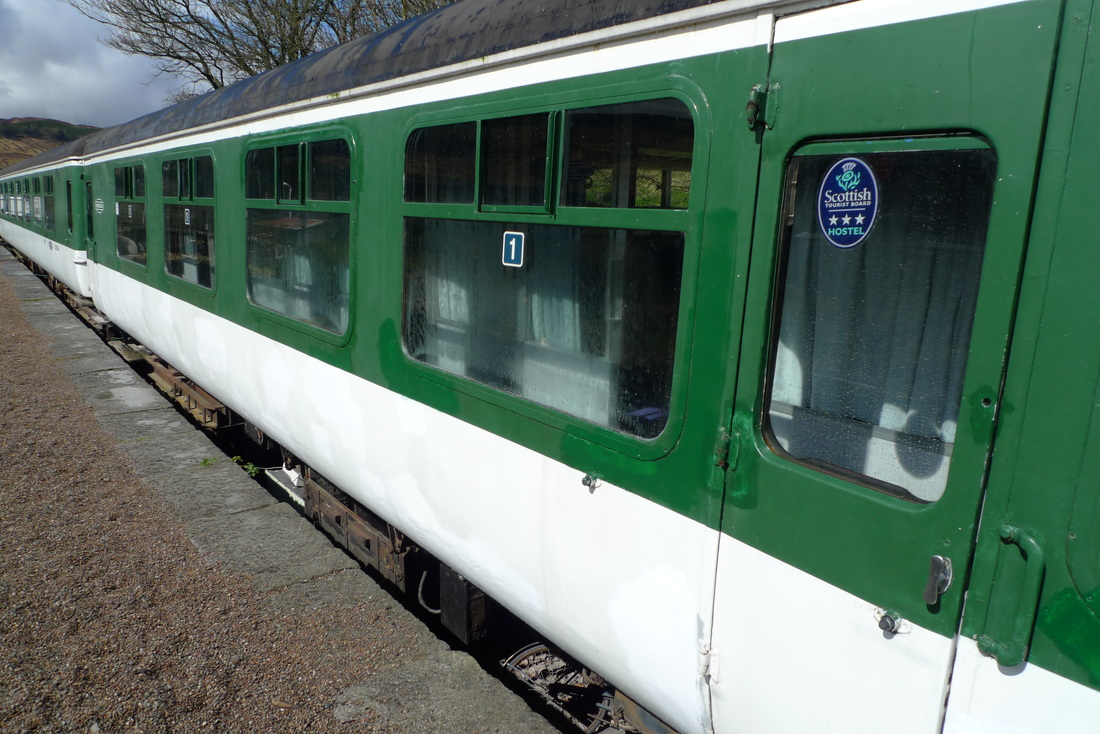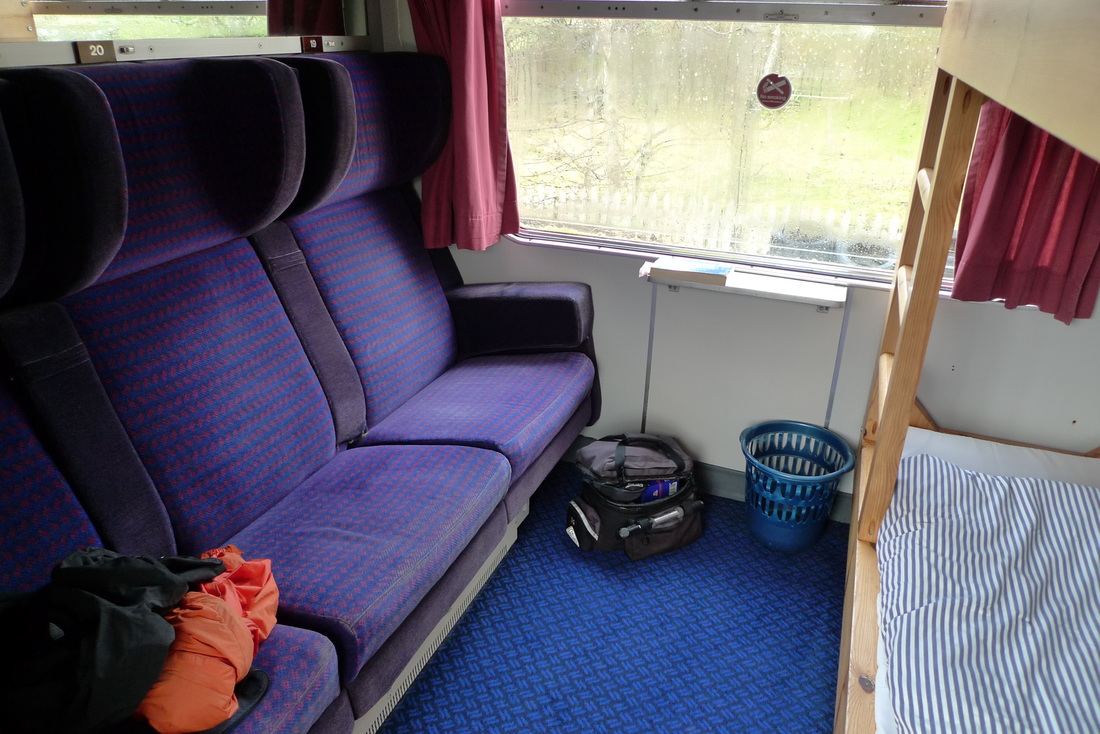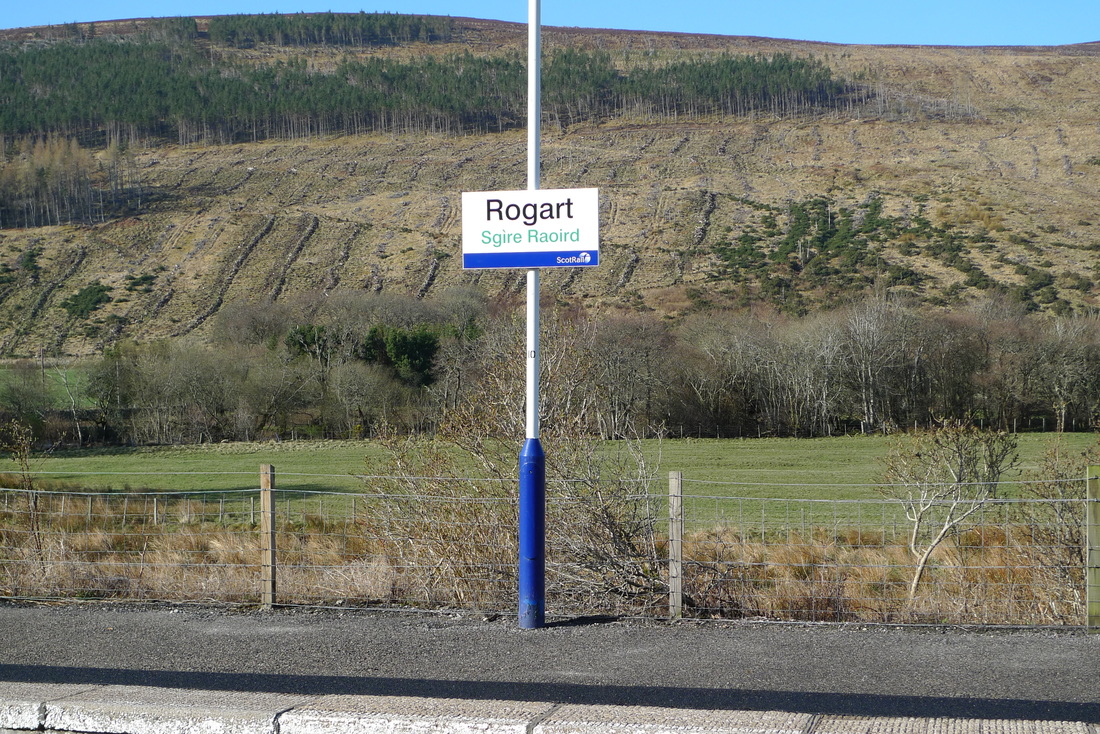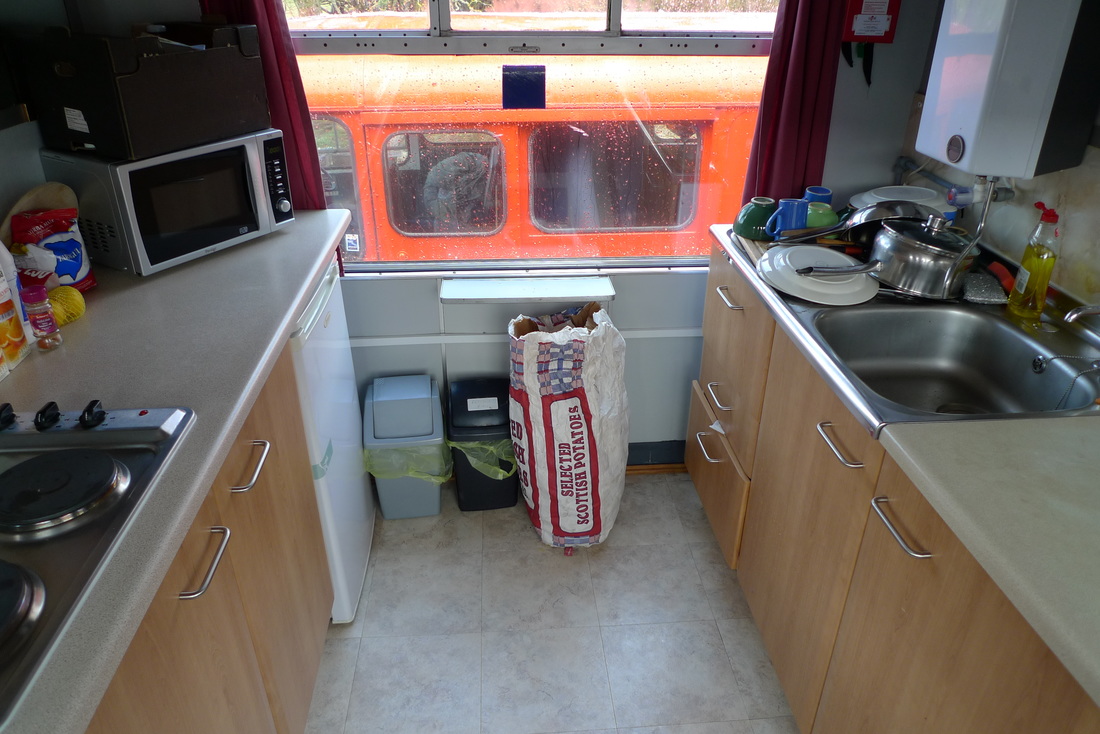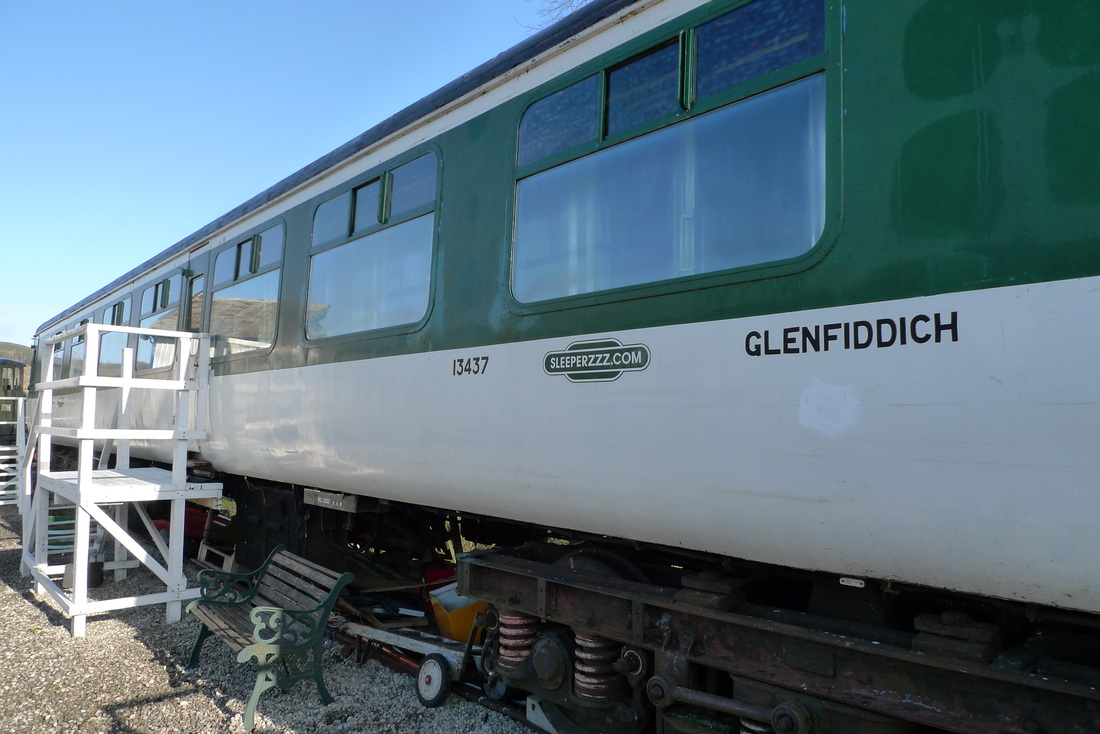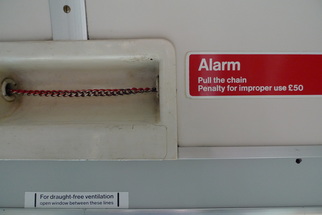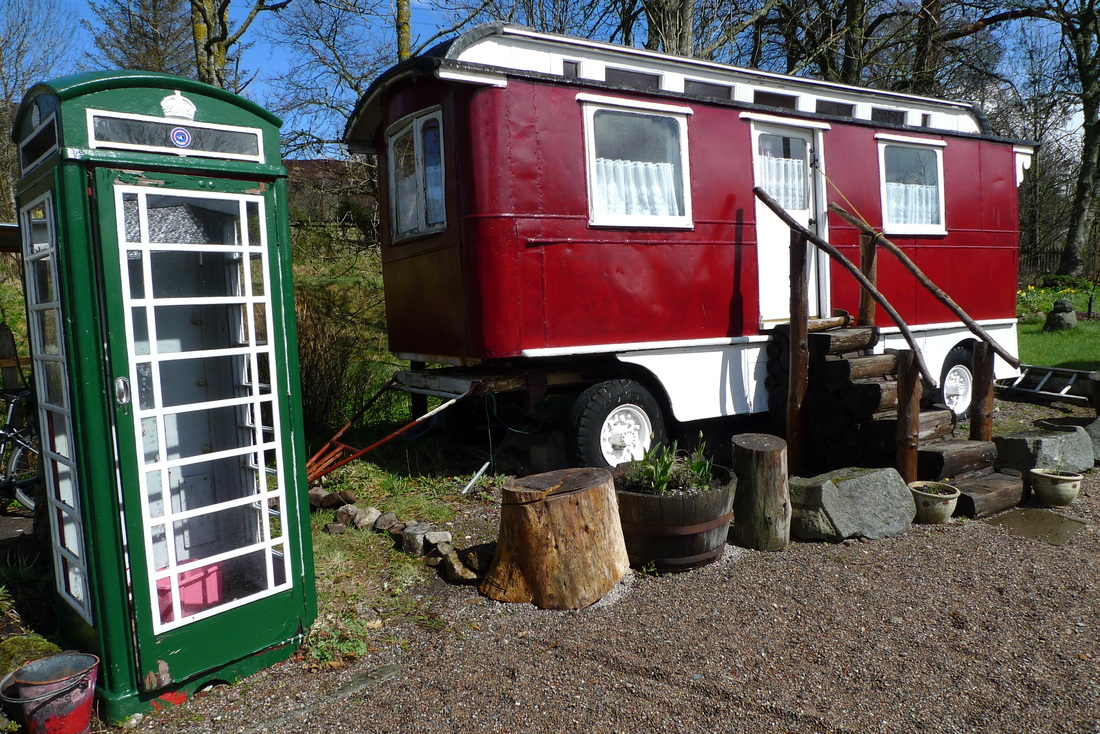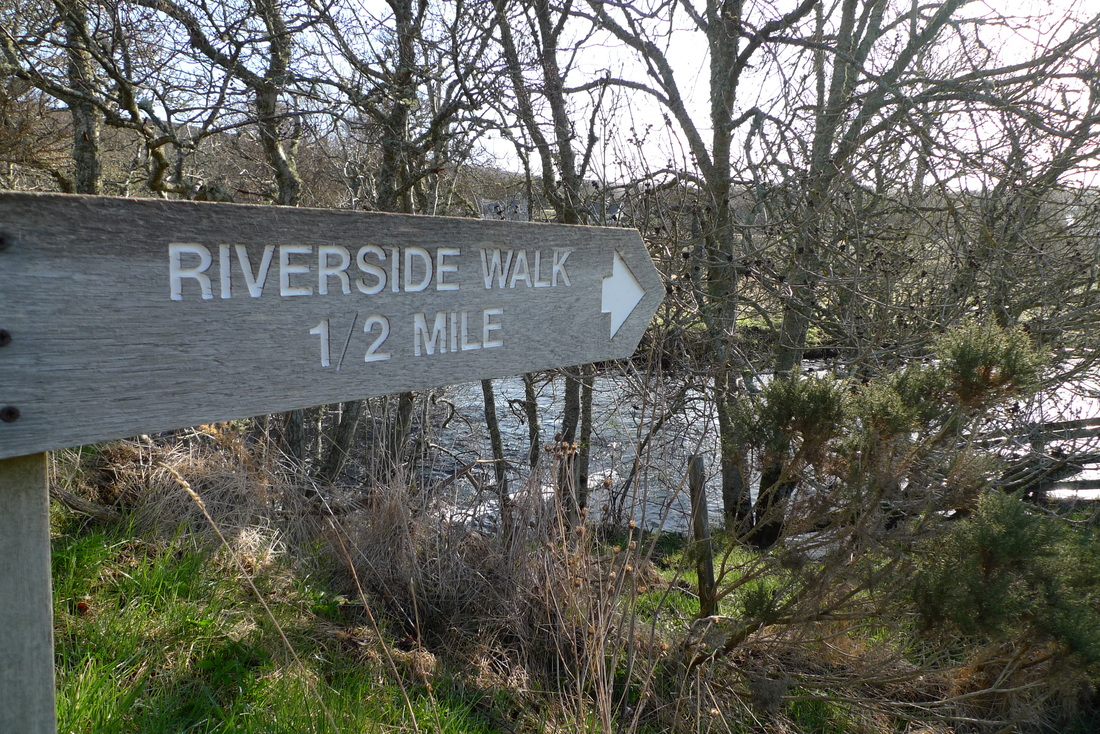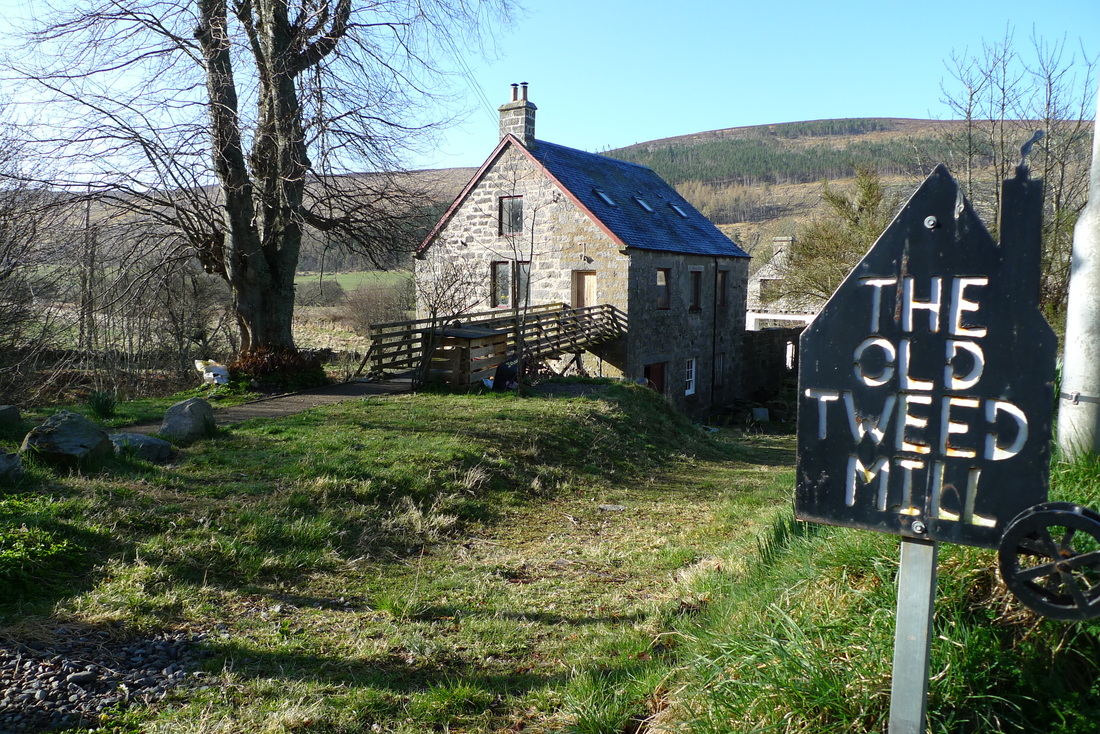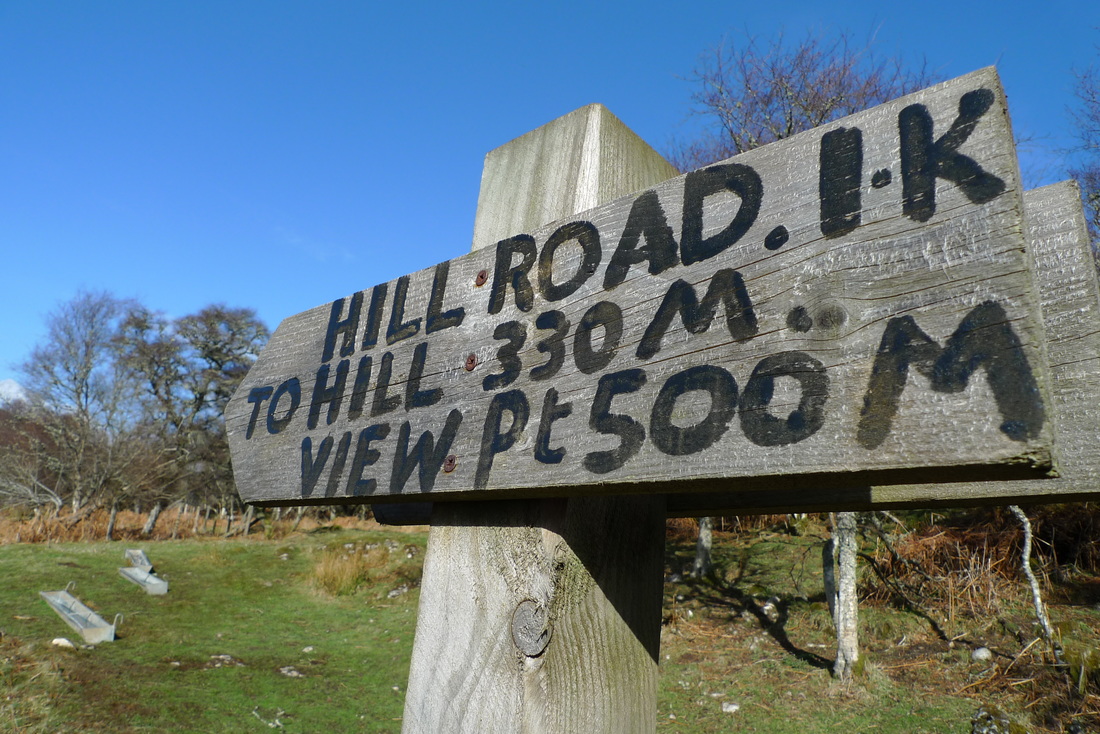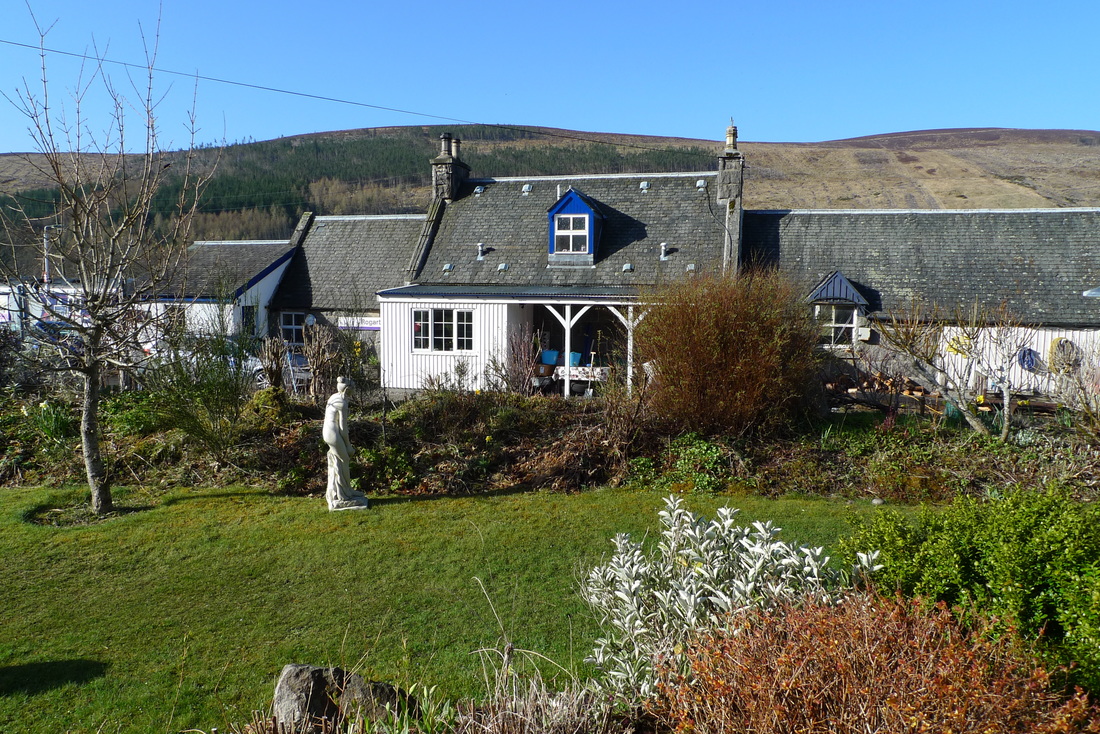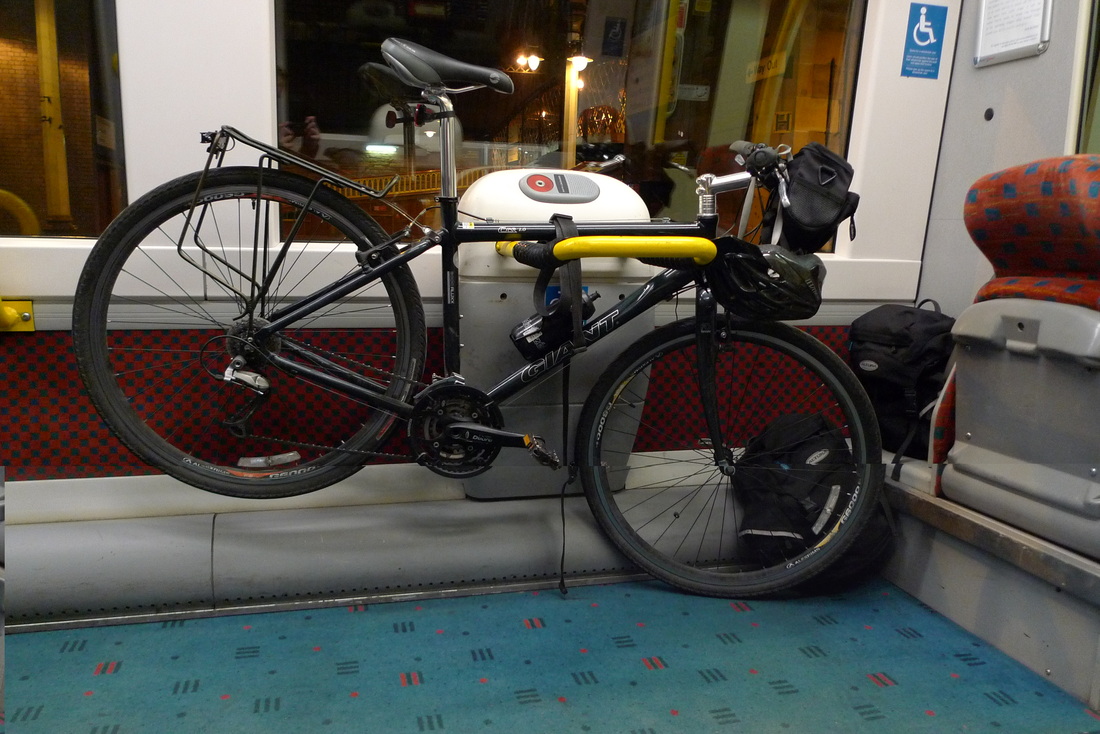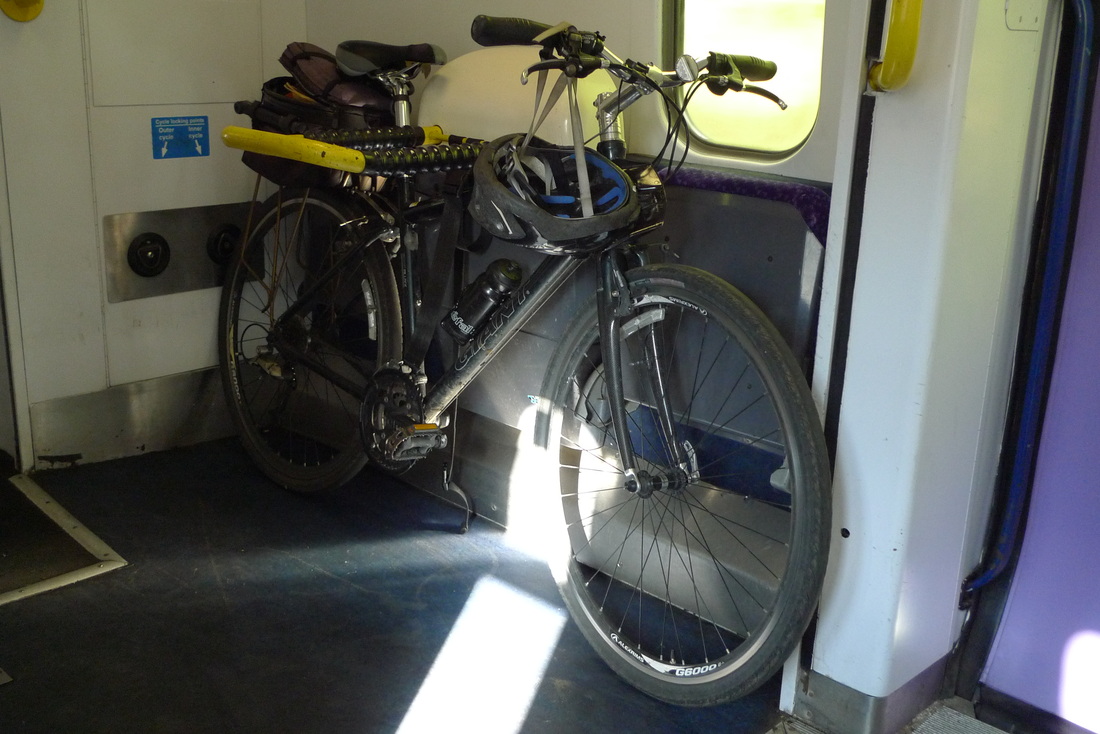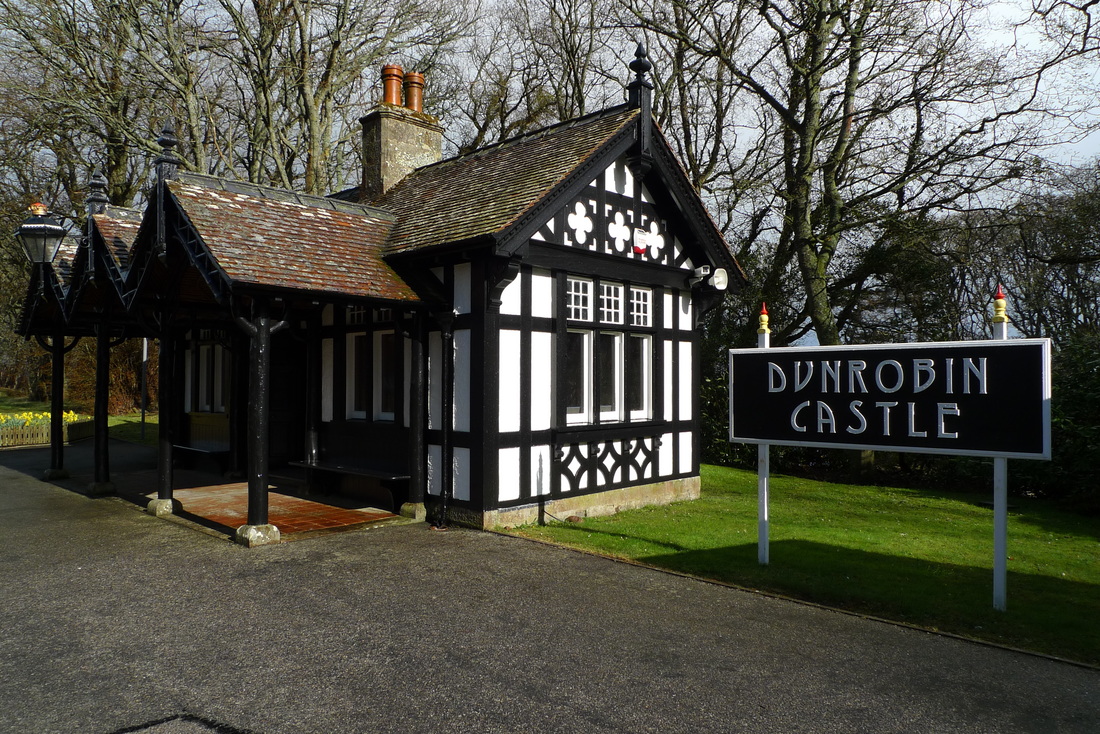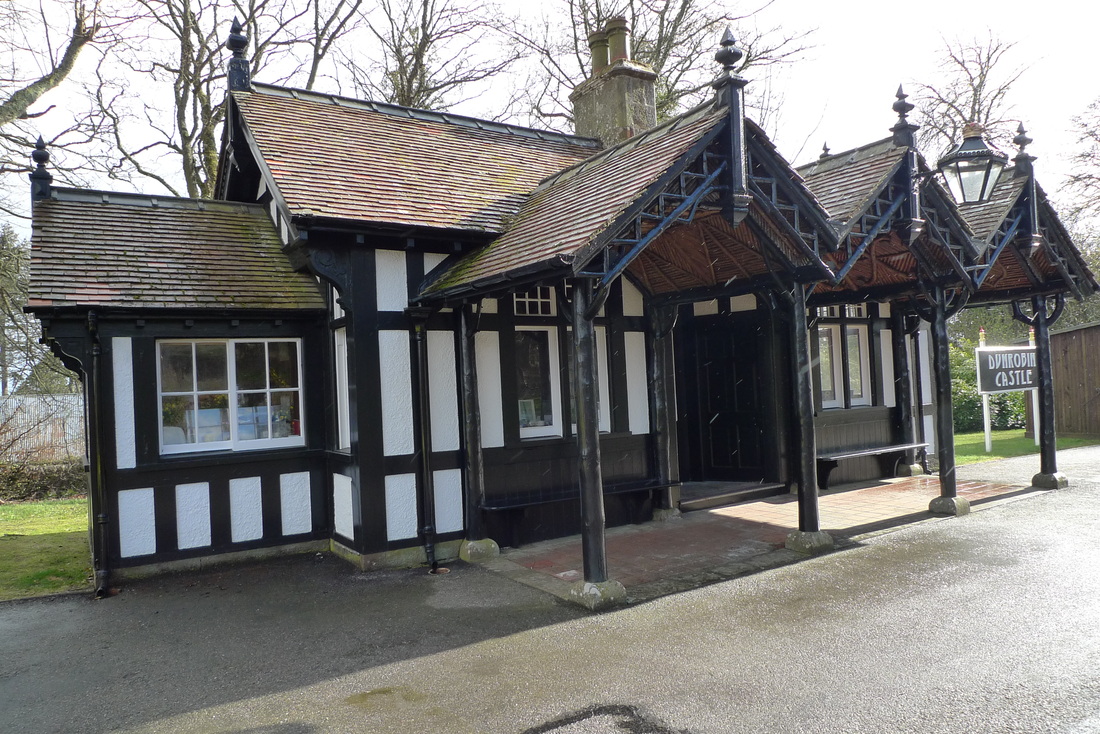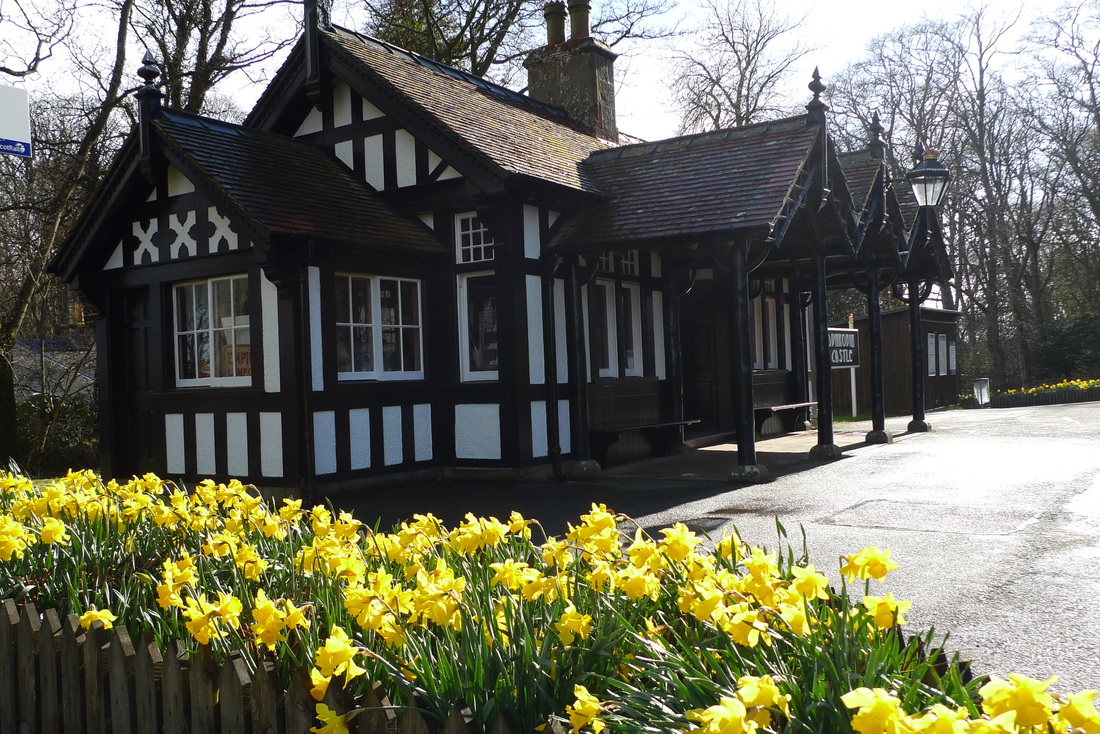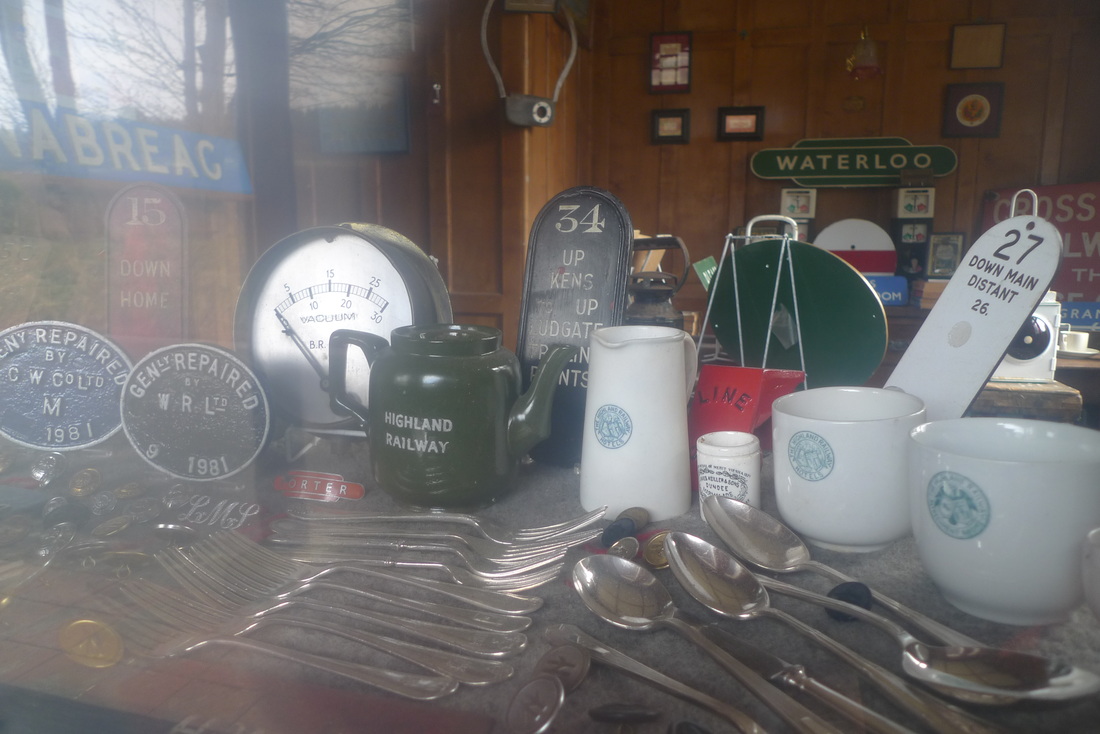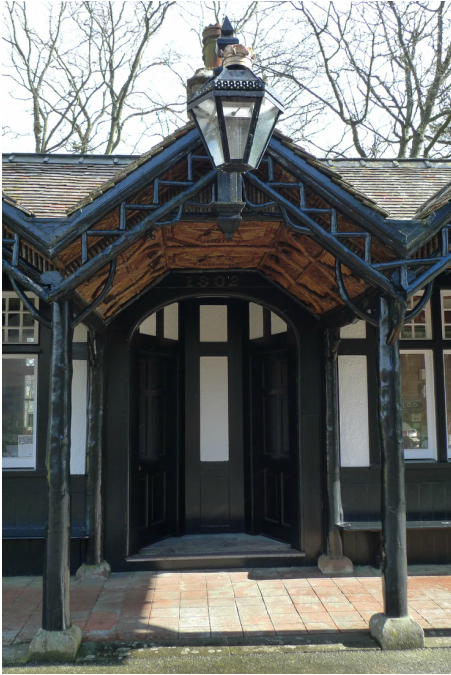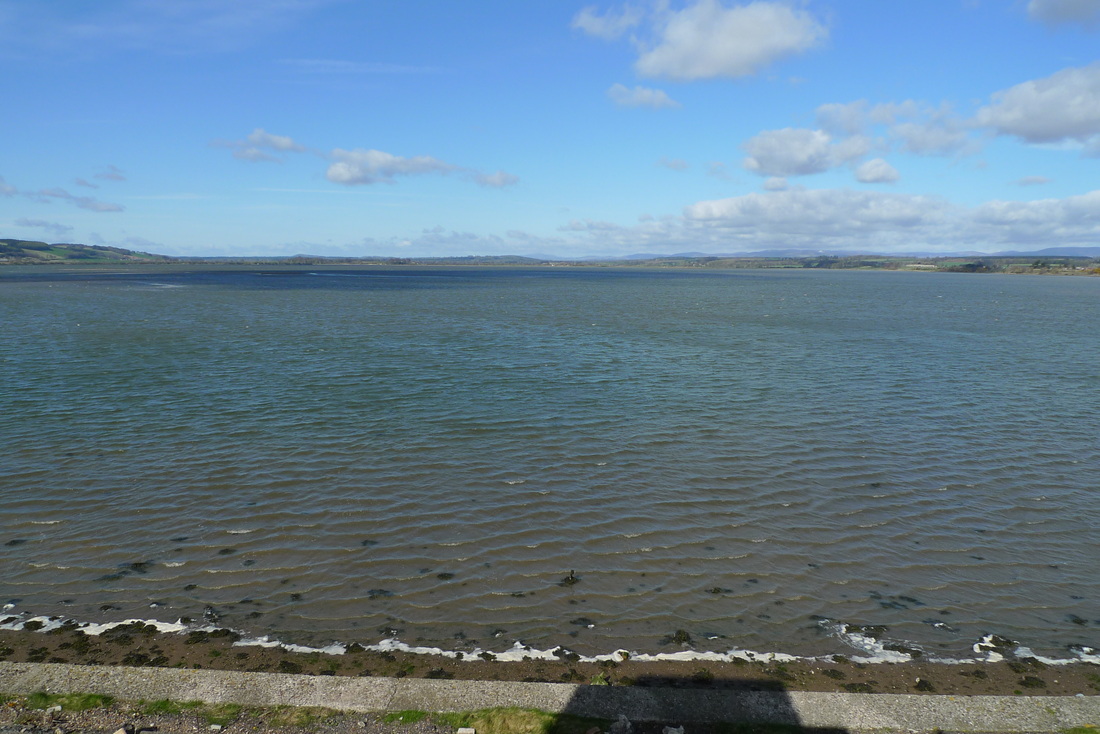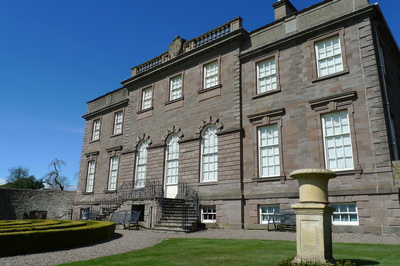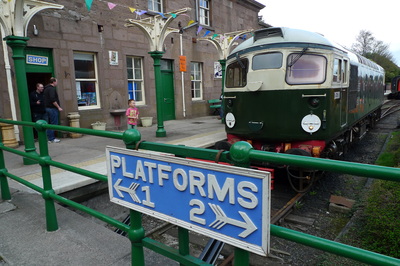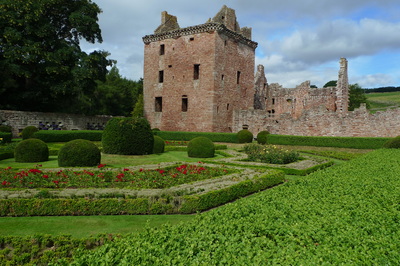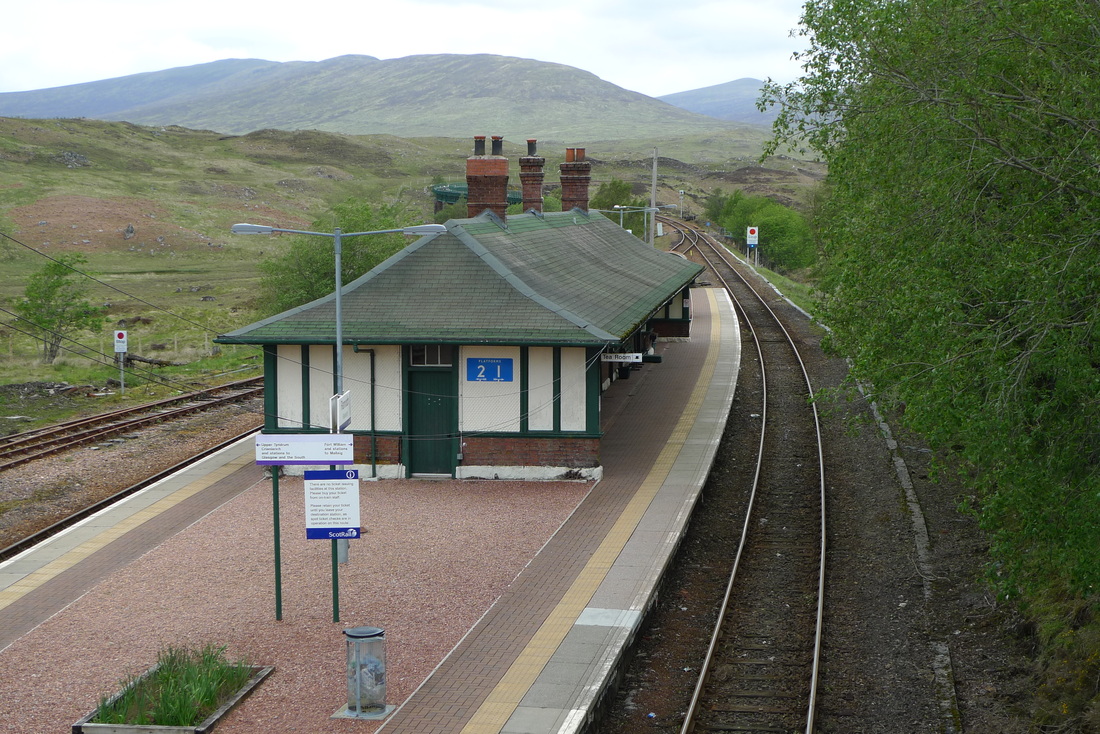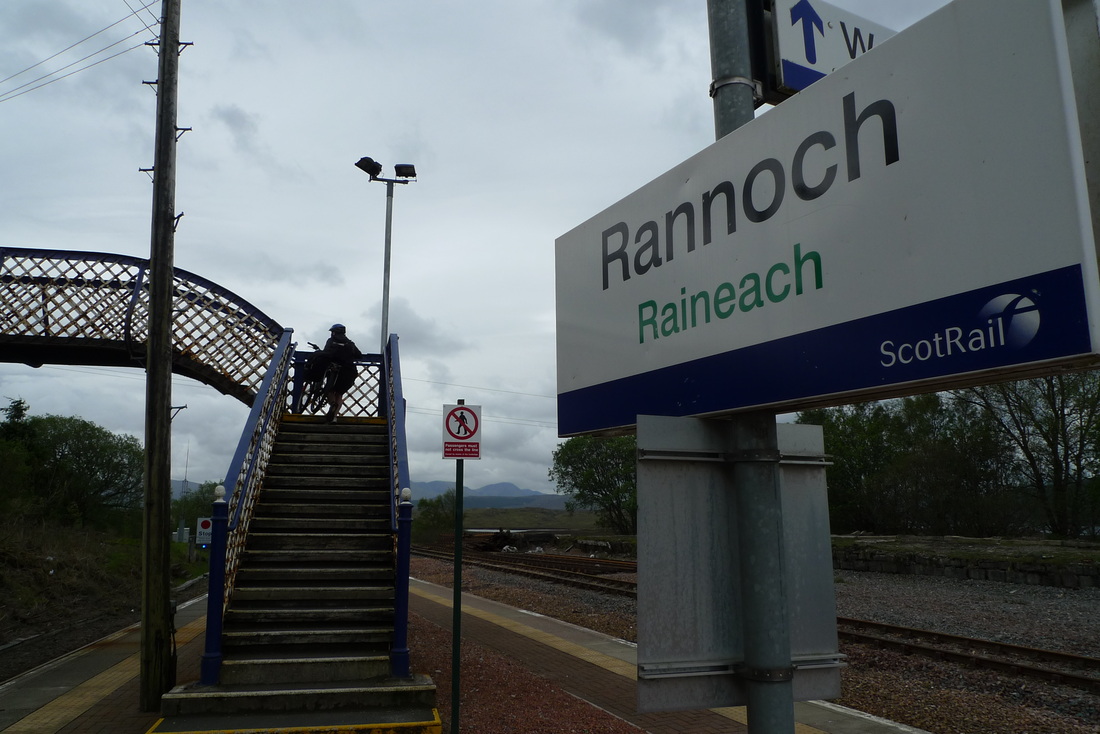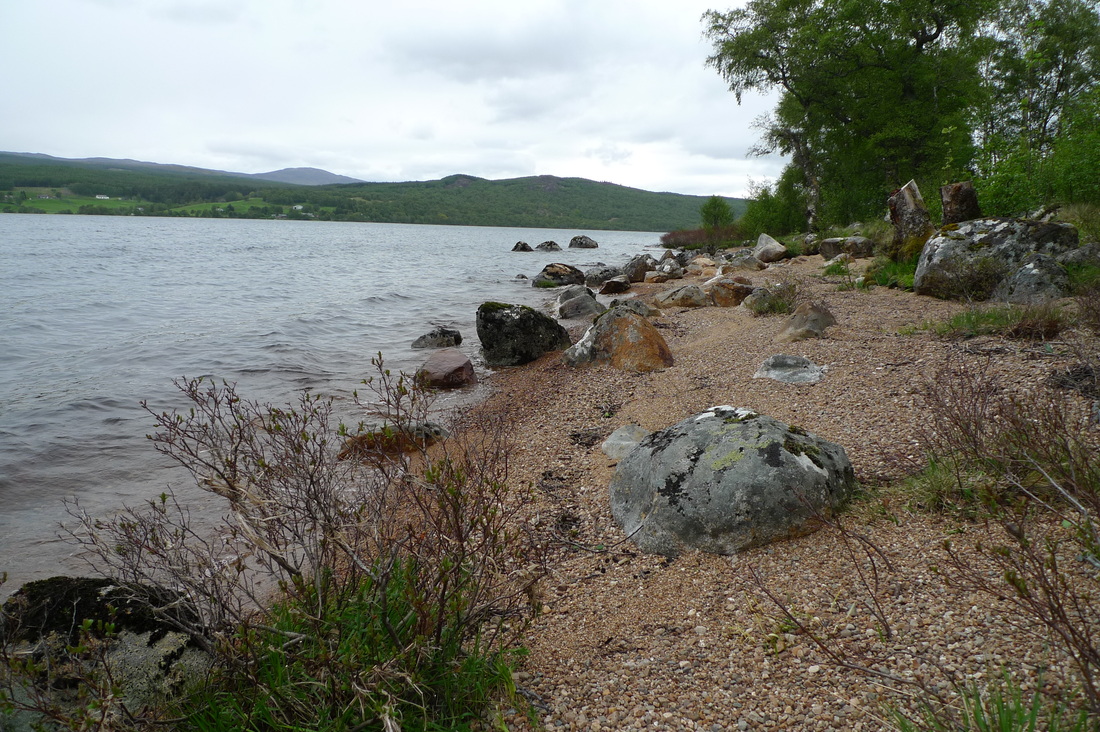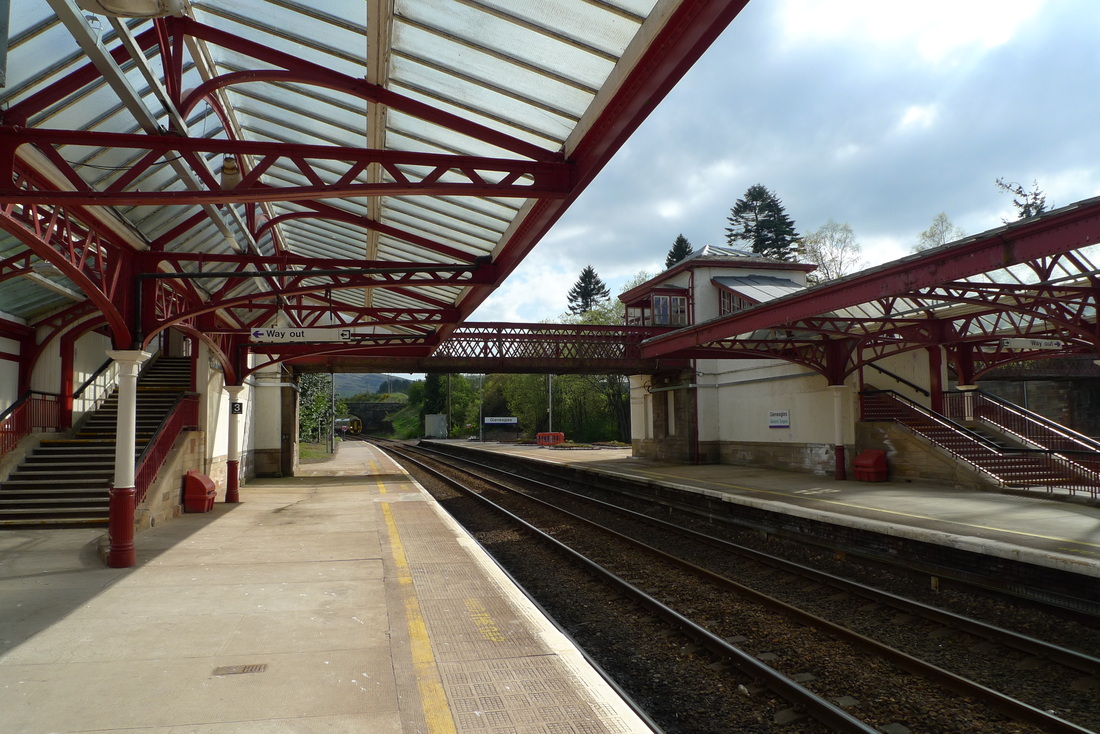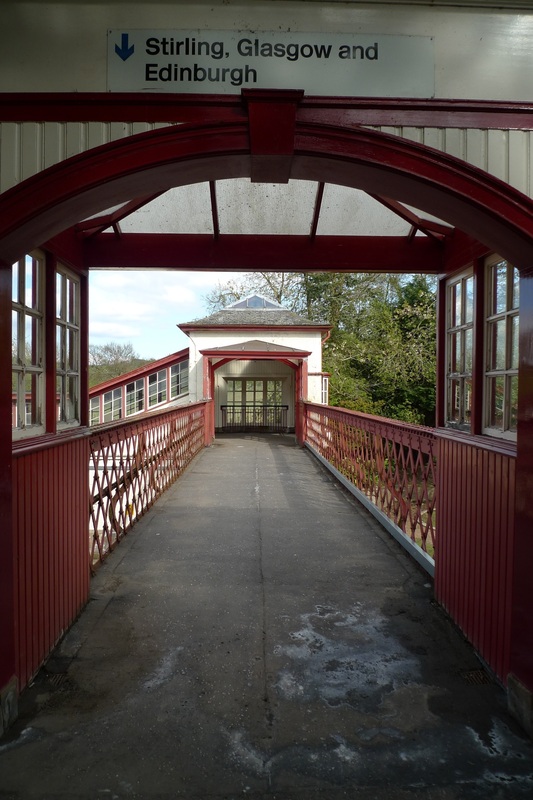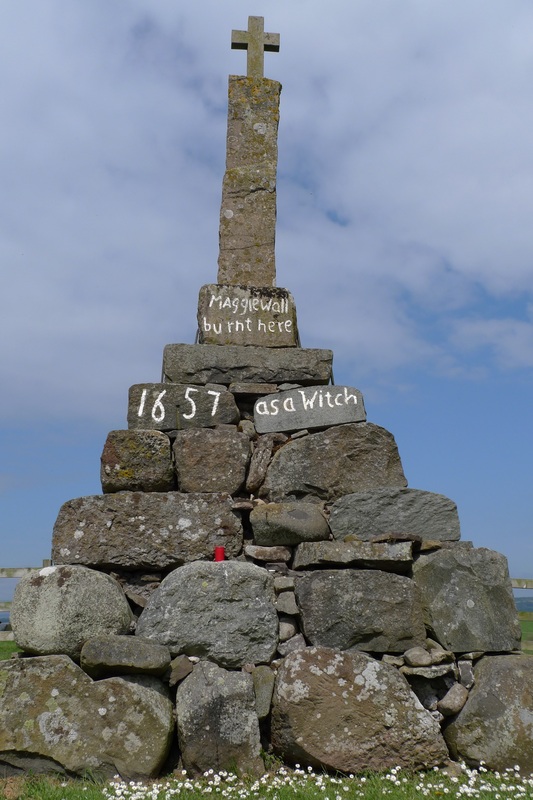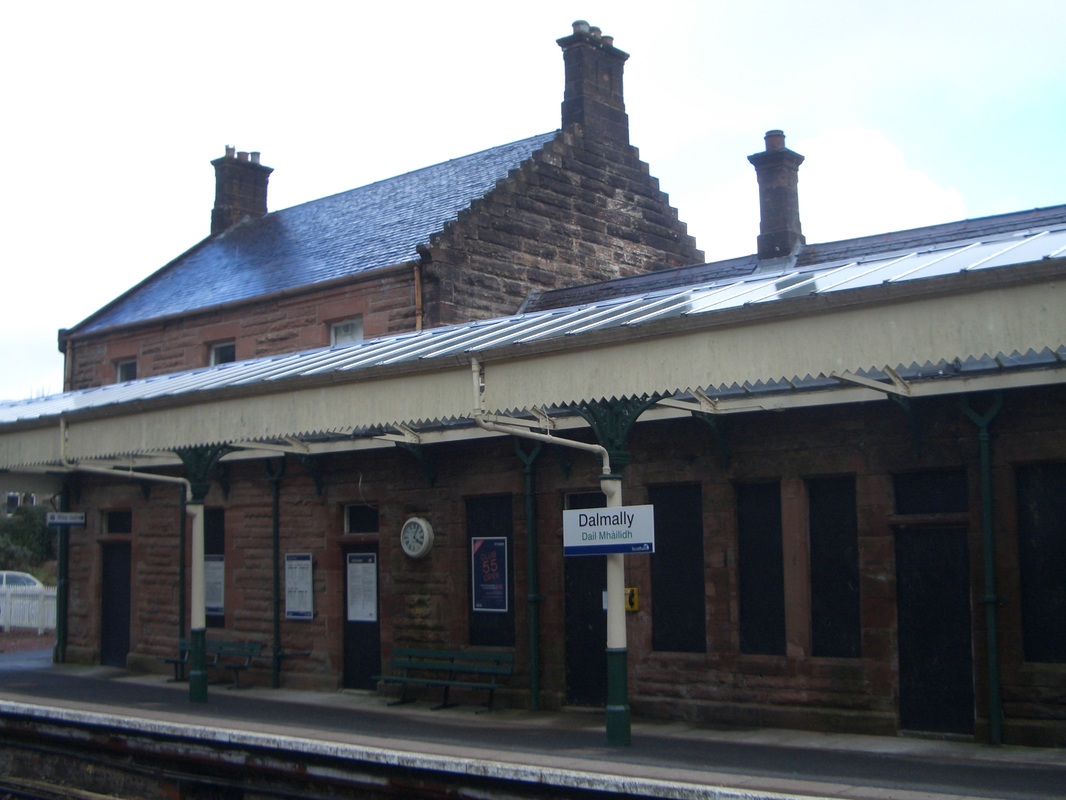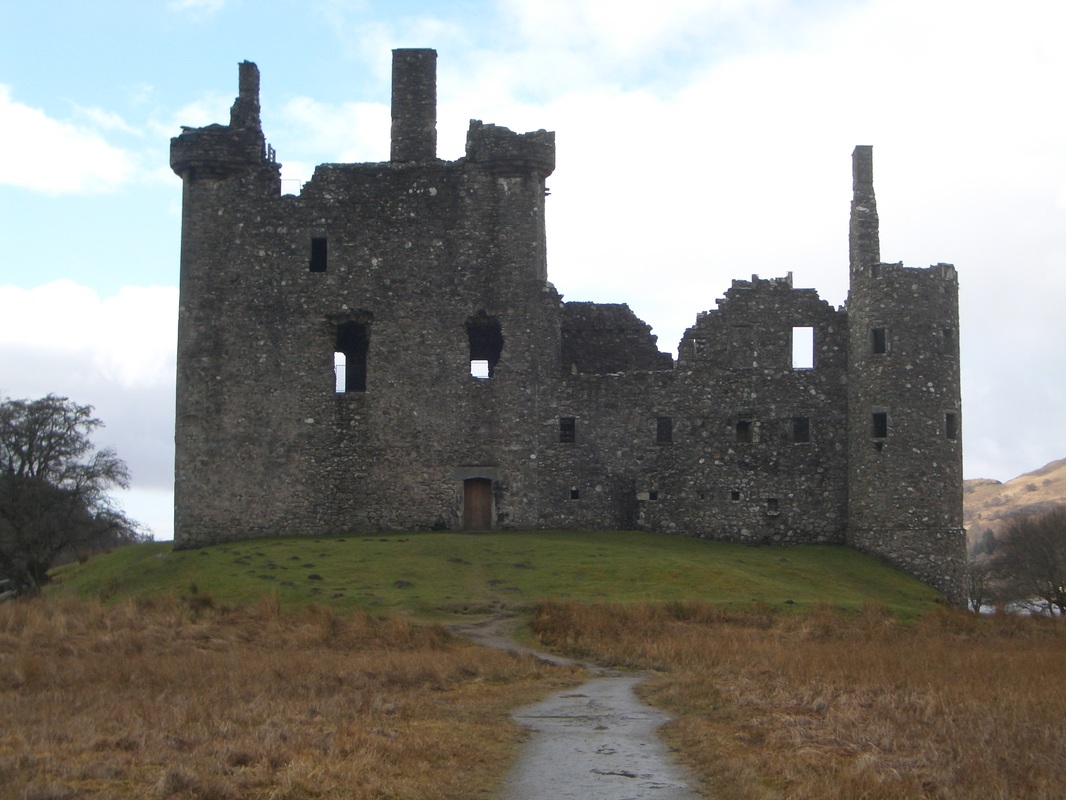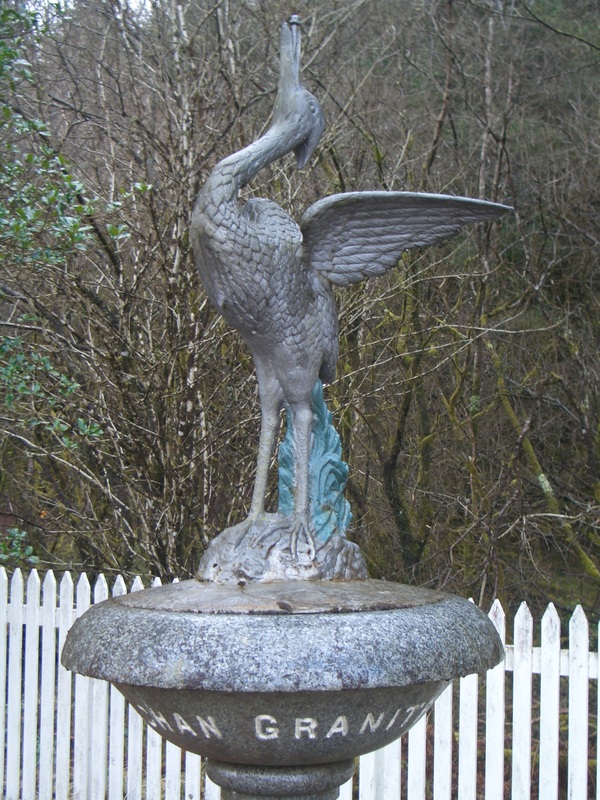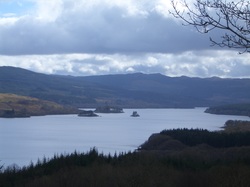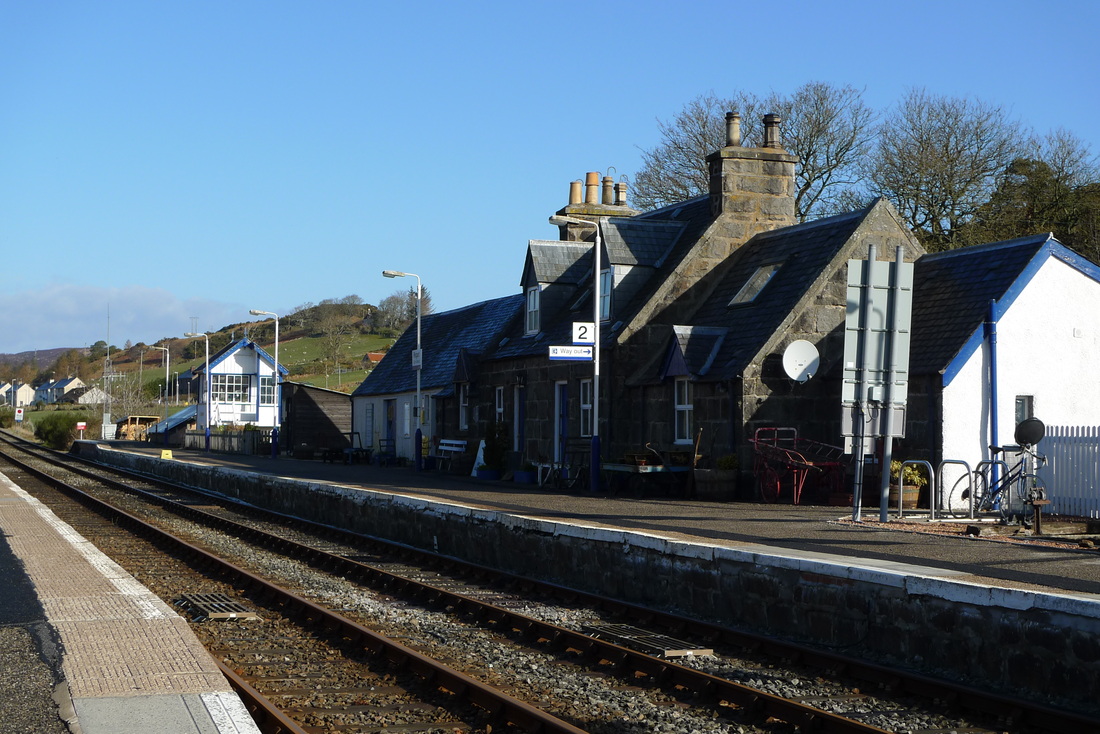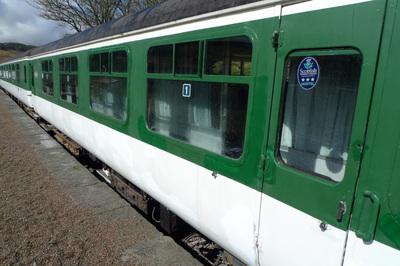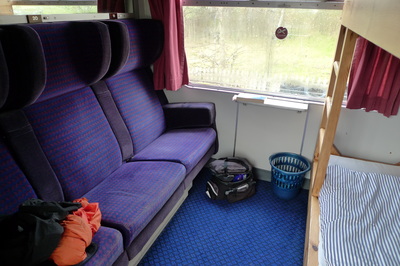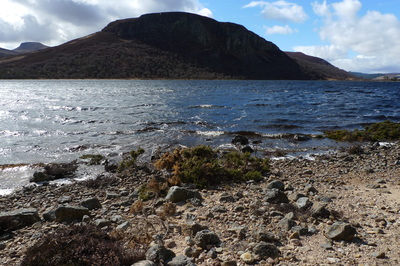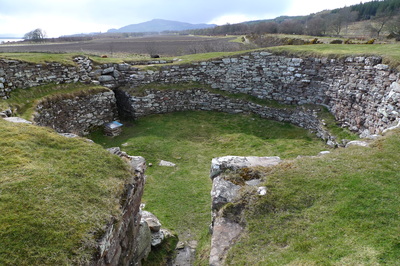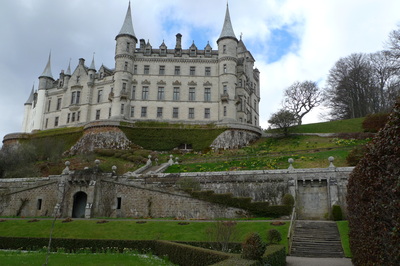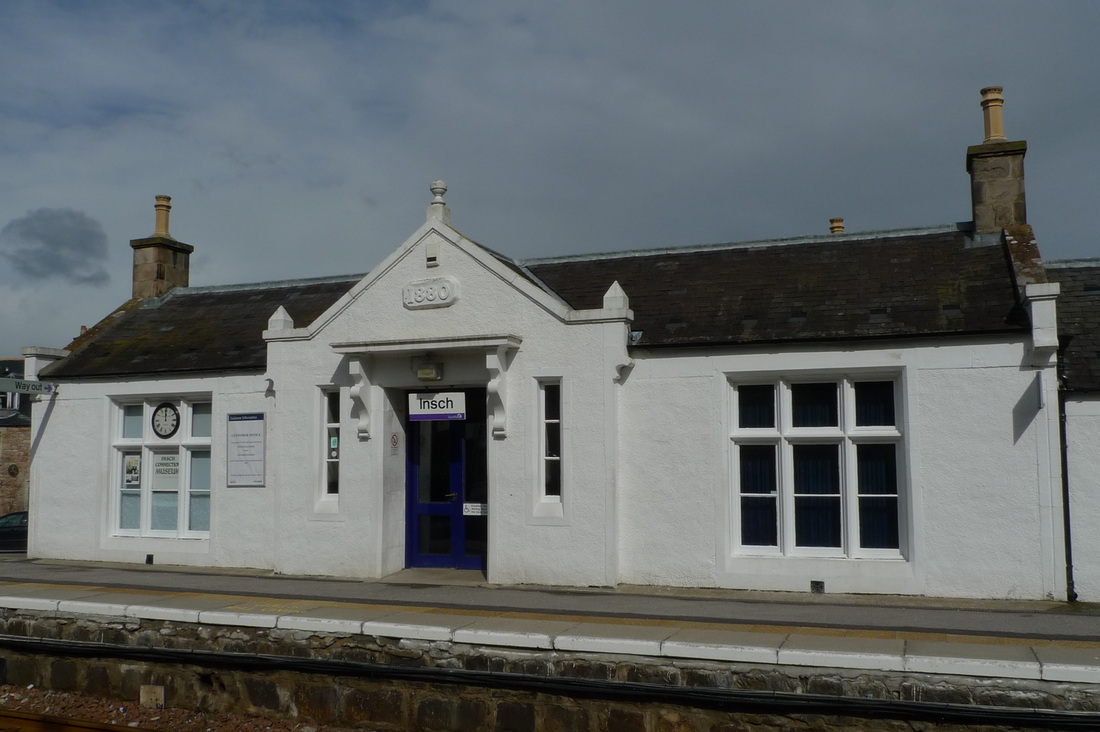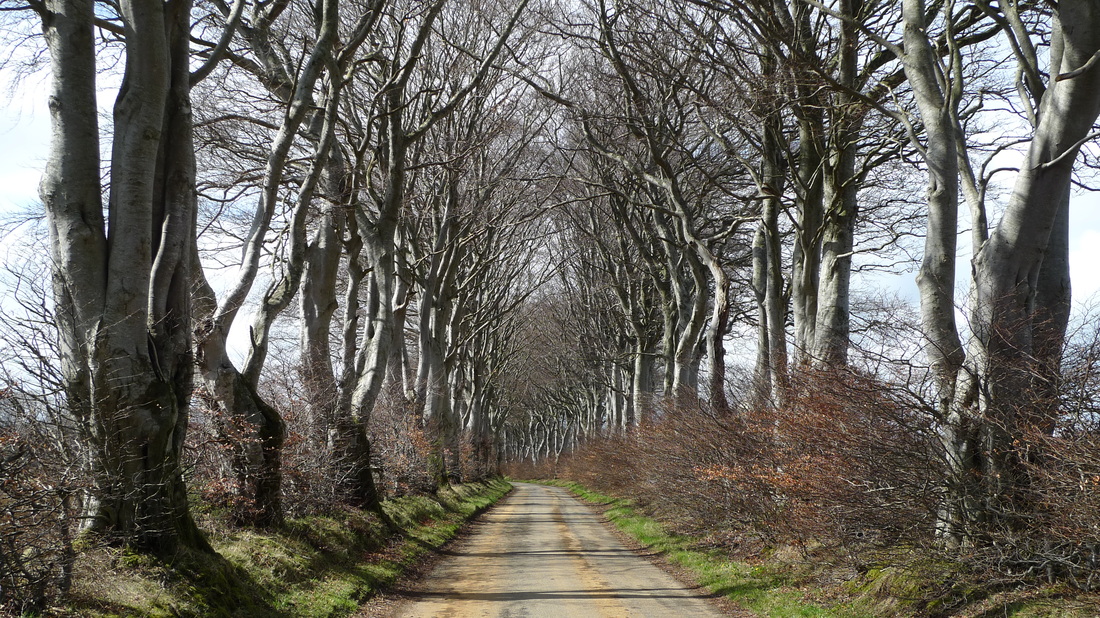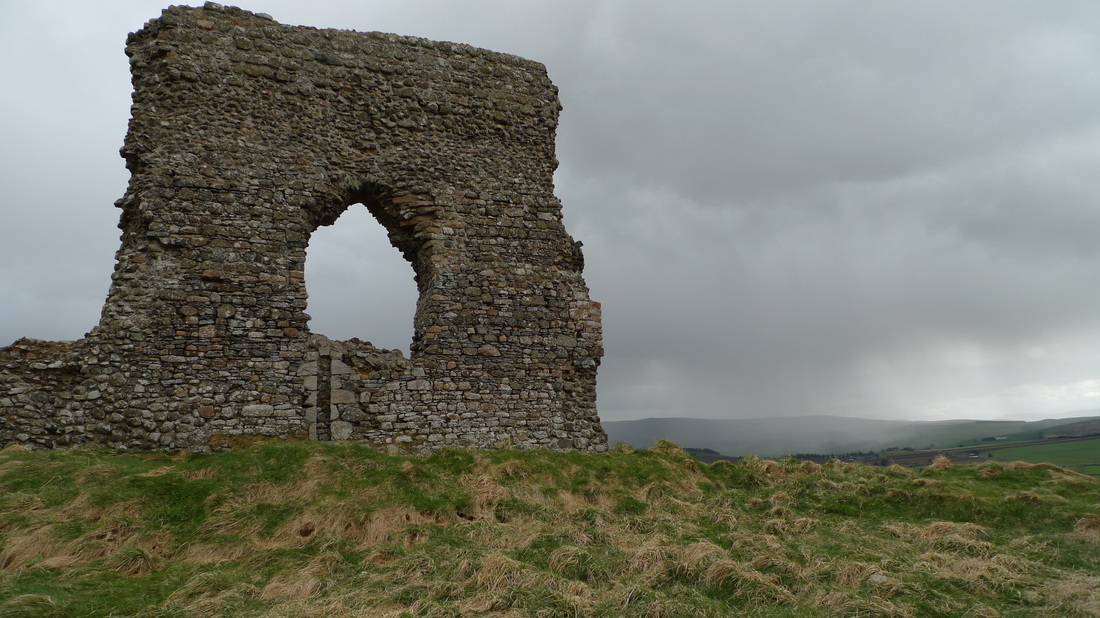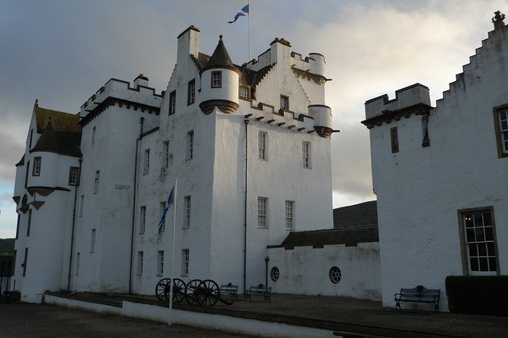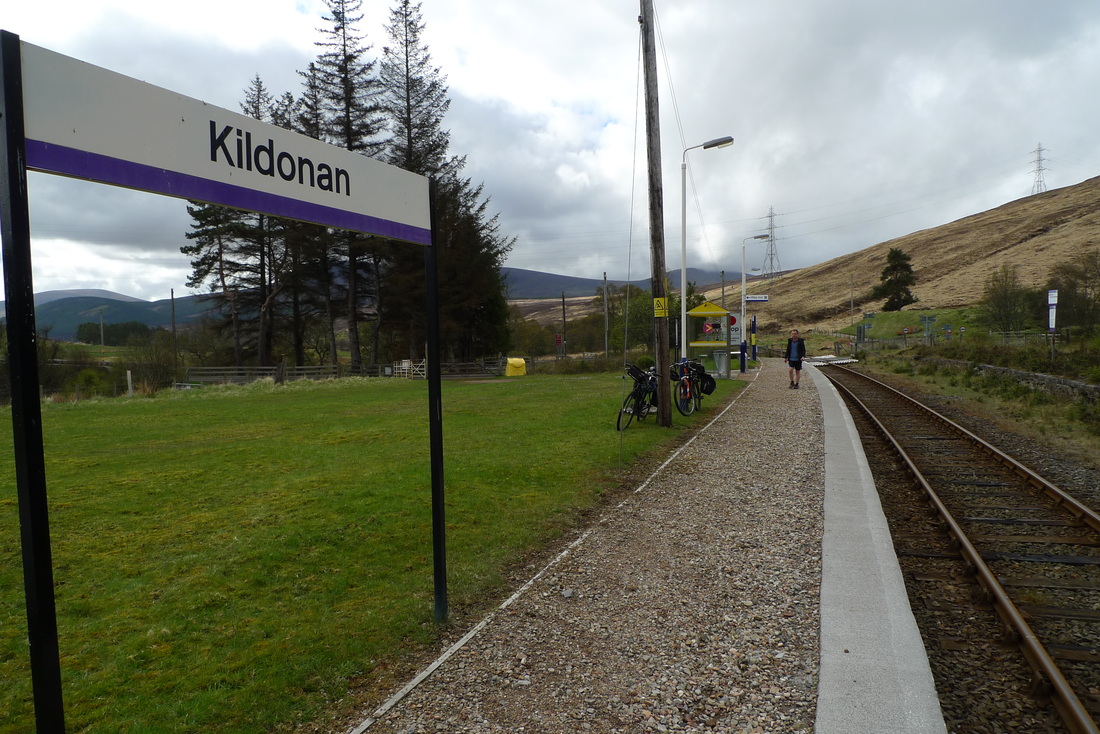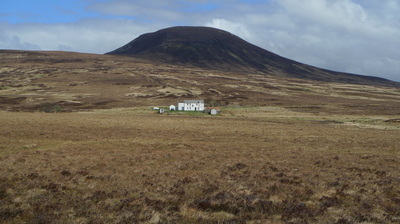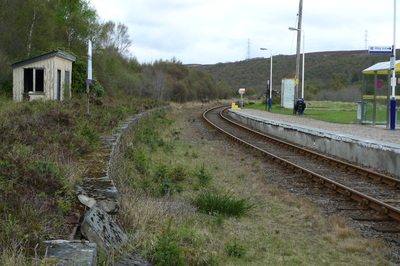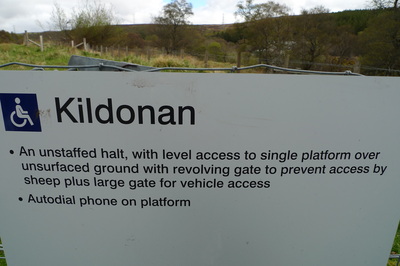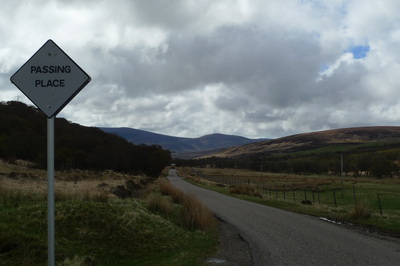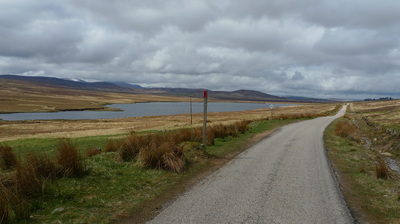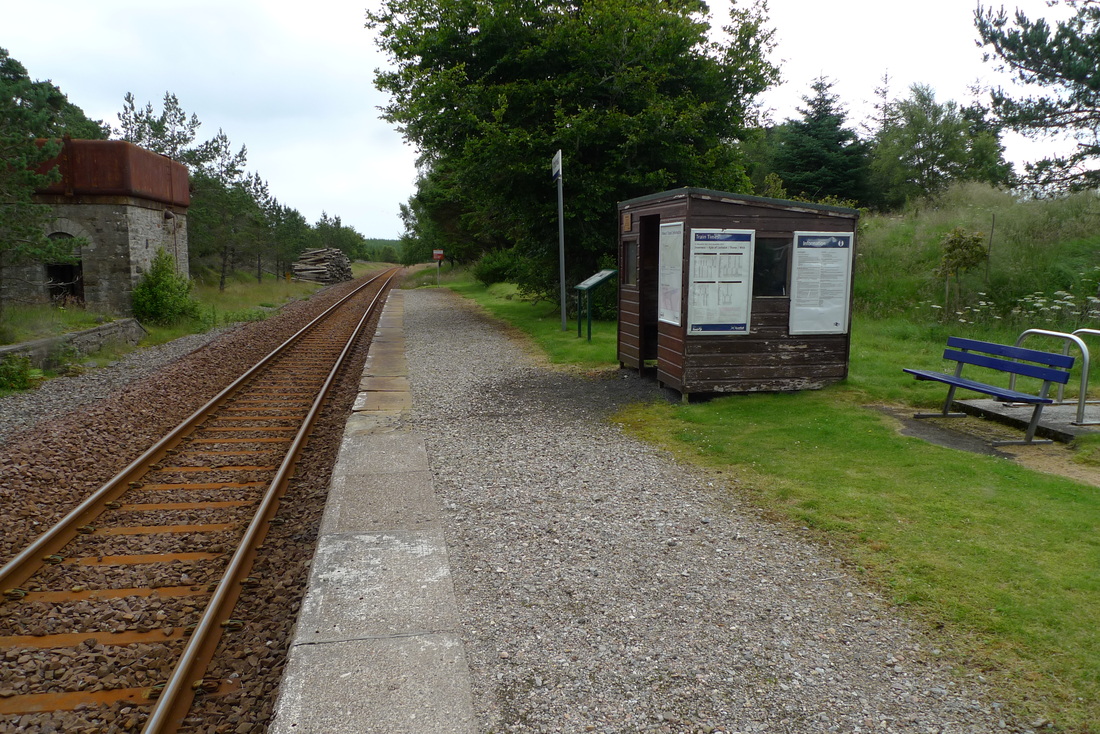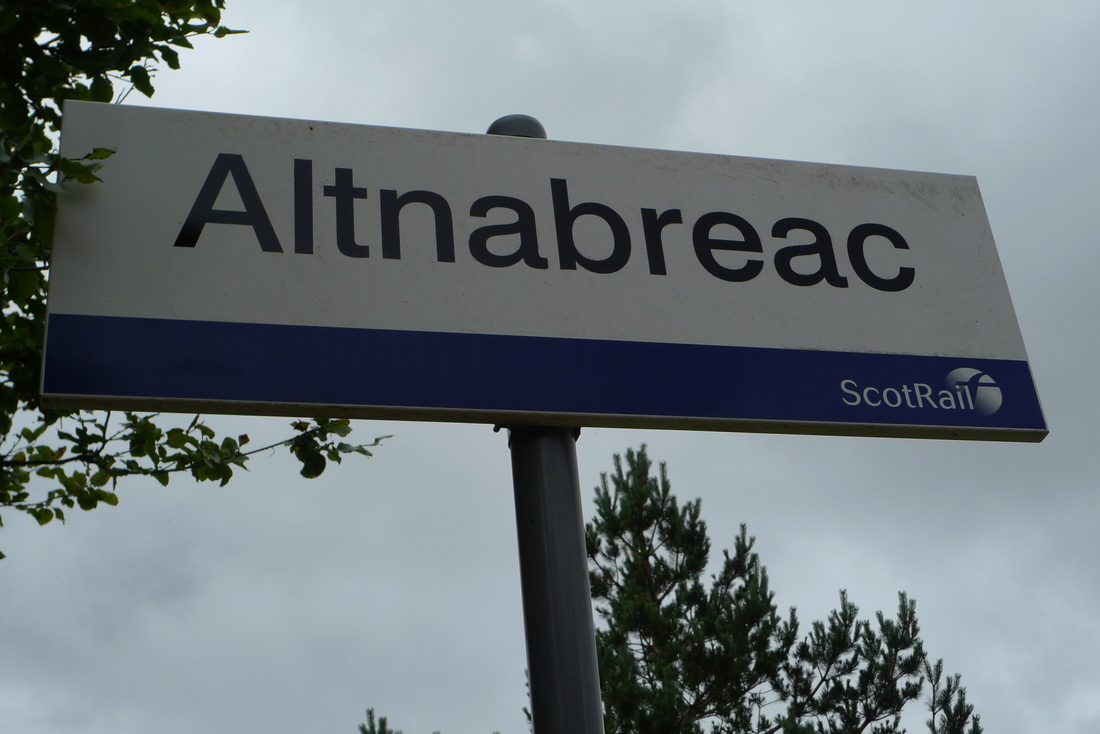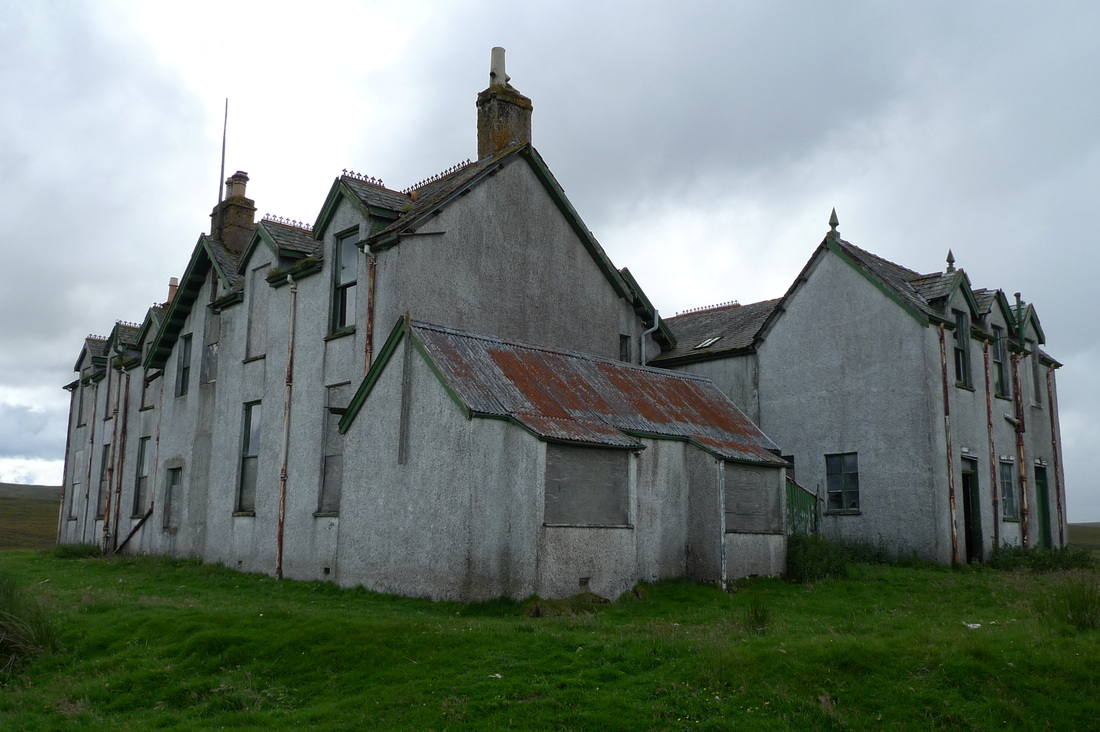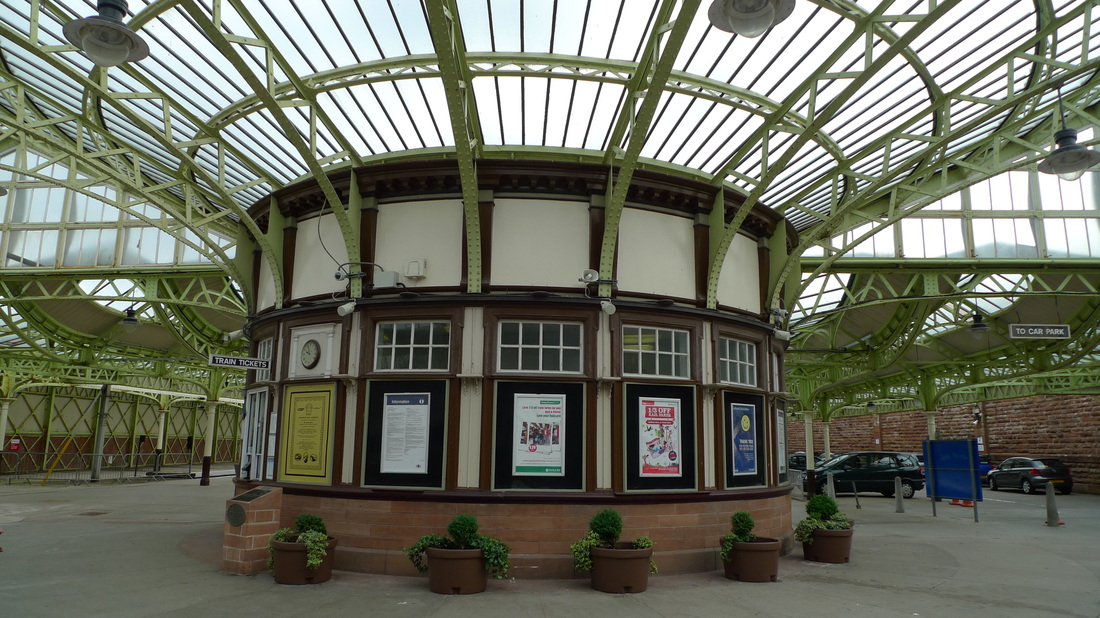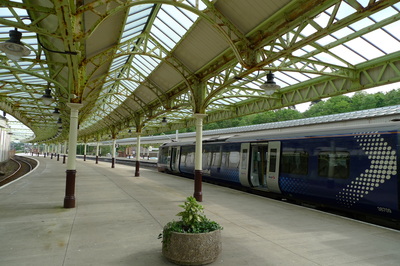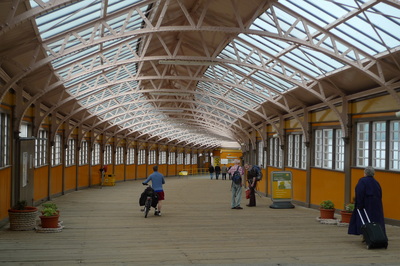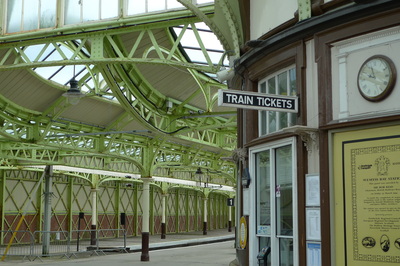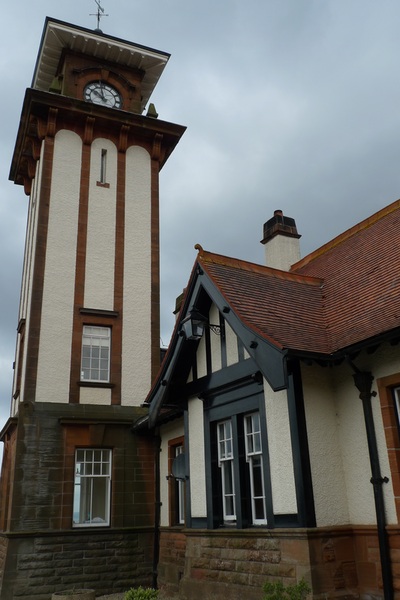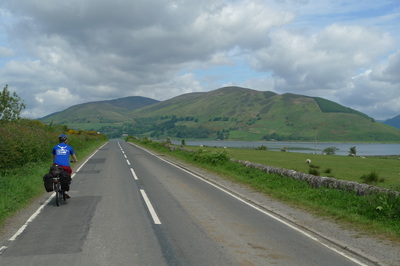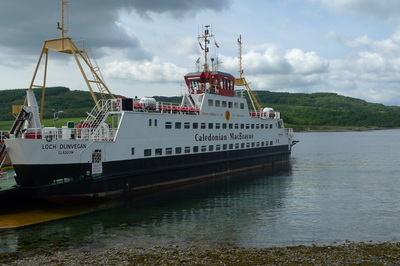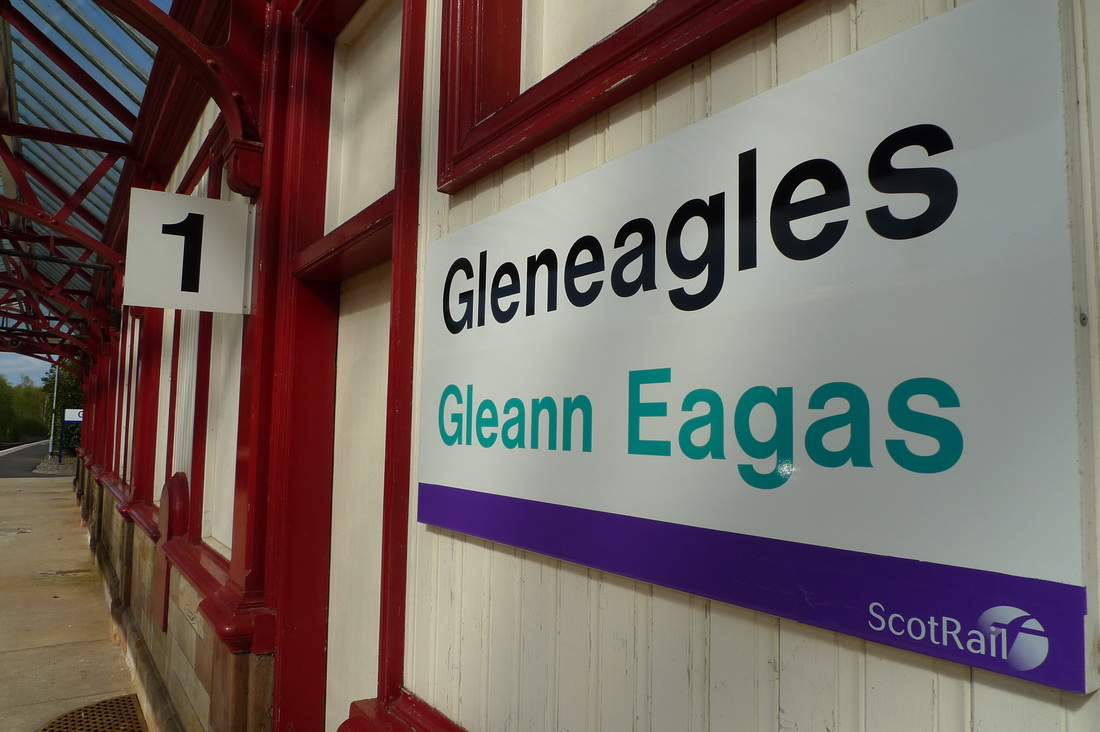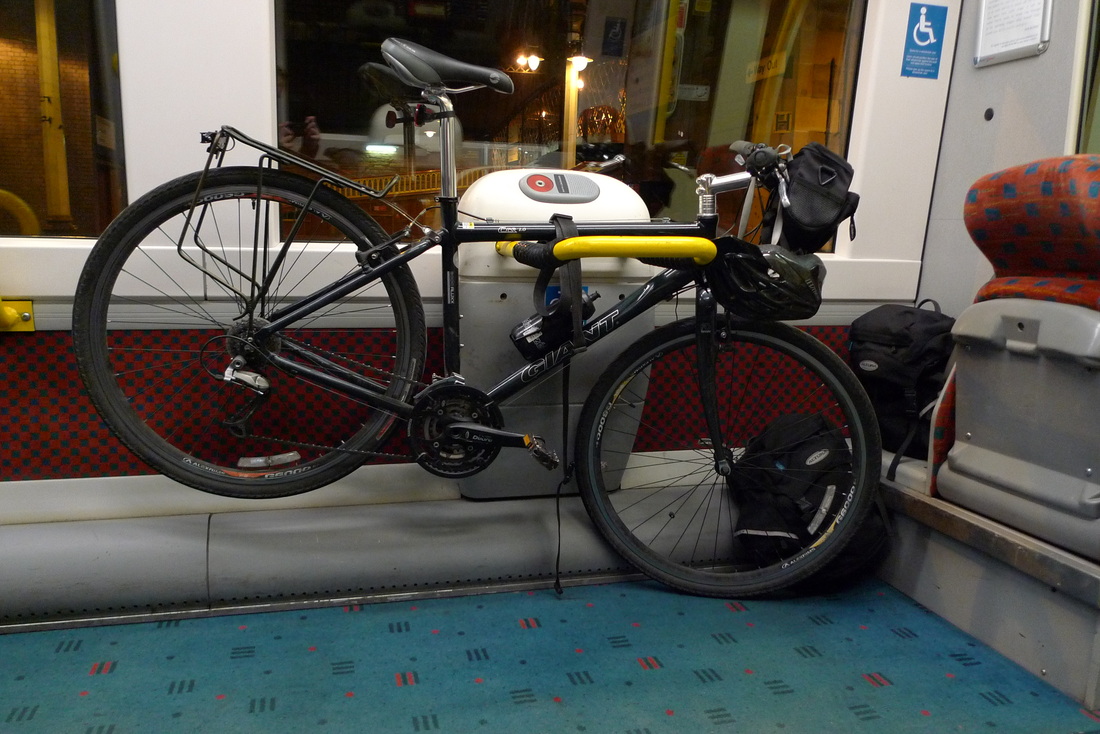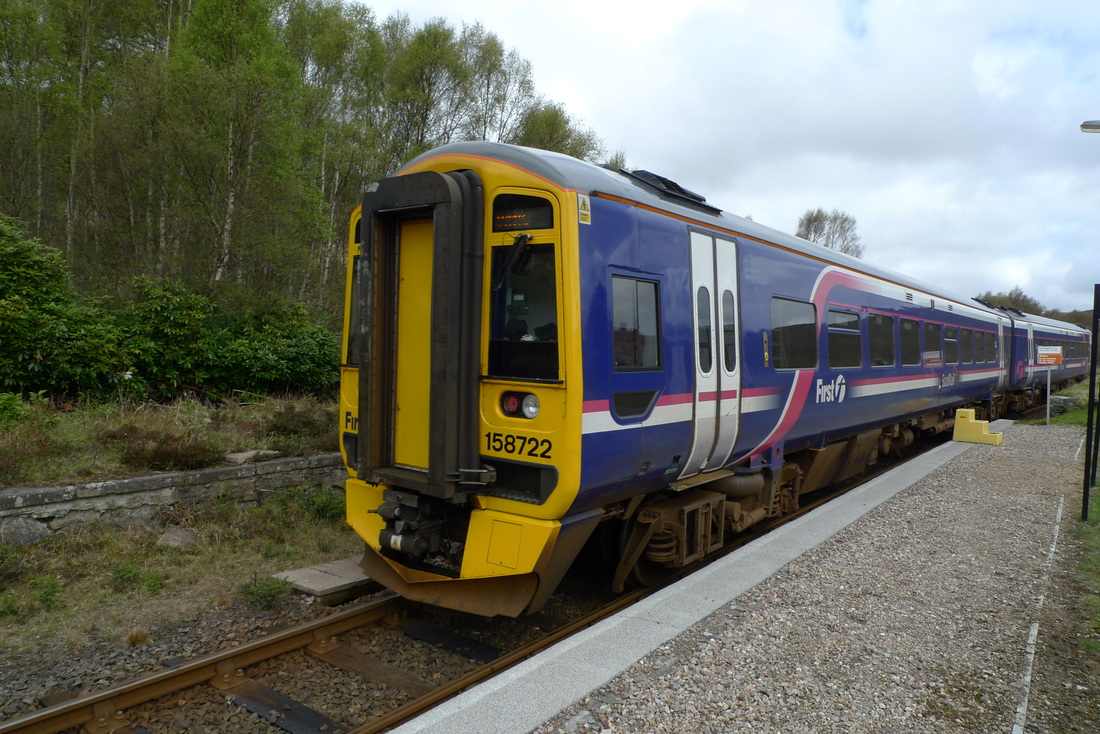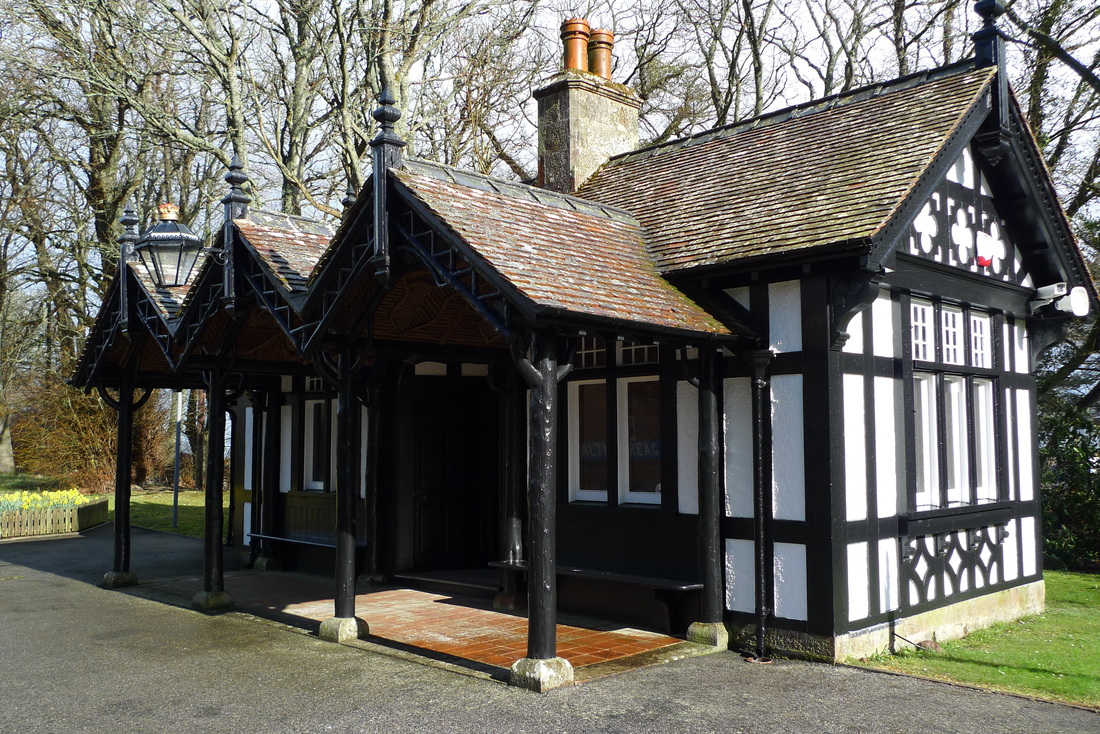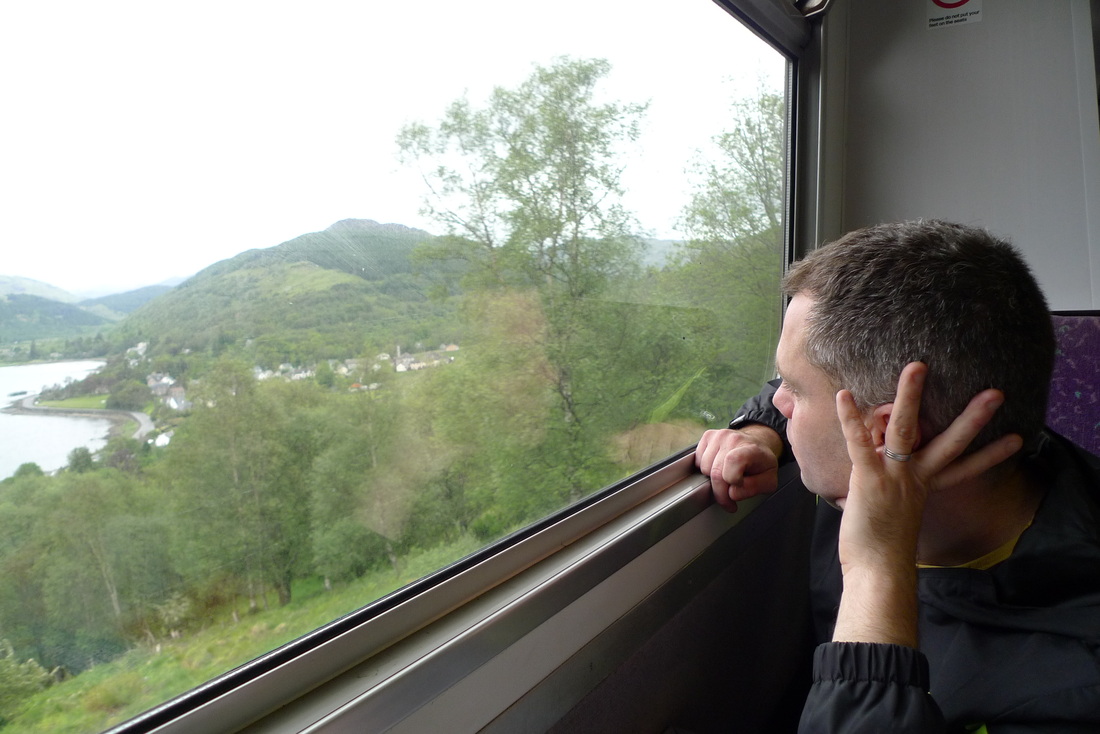Kildonan Station. Come here for peace, beauty and fantastic cycling or just sit for a while18/11/2023
If you need an escape from city life there is a place that is just the ticket. Kildonan is the third least used station in Scotland. This means that you are highly likely to be the only person to get off the train and there is nothing quite like the feeling of having a remote station all to yourself. Give it a try and you will experience a sense of calm mixed with adventure.
A long way
It takes around 7 to 8 hours to travel from Edinburgh to Kildonan, but you will be on some of the most scenic rail lines in the country. Going north for a large amount of time will make you feel like an explorer and just think how many of your fellow passengers will be making as exciting a journey as you? You have to ask for the train to stop at Kildonan Kildonan is a request stop meaning that the train will only stop if a passenger tells the conductor that they wish to get off. Request stops are marked on timetables with an 'x' next to the departure time.
When the conductor comes around to check tickets they will look out for passengers travelling to request stops and take a note to stop the train.
A breathtaking arrival The train follows the North Sea coast where there is a good chance of spotting seals on the beach. After Helmsdale the track heads inland and the final approach to Kildonan curves alongside the River Helmsdale with a backdrop of hills and forest.
Station tour
Let me take you on a tour of the station. It will not take long because there is very little here. And this is precisely what the attraction is. There are no shops, cafes, and loudspeaker announcements. The only sounds are birdsong and the River Helmsdale passing beneath the nearby stone bridge.
The station opened in 1874 and you get the feeling that very little has changed between then and now. The river makes the same sound, it passes the same rocks and the same types of birds are tweeting. I have been to this station twice with a three year gap between visits, but the second time felt like I had just been there yesterday, not years ago.
There is no station building at this location. There is a modern glass shelter, somewhat like a bus shelter. There is a litter bin, timetables and cycle racks.
The disused platform has a wooden shelter on it and this has been left to ruin, which is a shame as it is the only piece of distinctive heritage architecture at Kildonan. The last time I peaked through the window of this shelter I was delighted to find a wood burning stove that looked in good condition. The road to the station
The station is a half-mile detour off the A897. When you think of roads that go to train stations you probably picture traffic and lots of lanes. This is the complete opposite and if you travel down this road it is hard to believe that it will take you to a railway station. This video captures that feeling.
Why come here?
Kildonan station provides access to miles of single-track roads that are superb for cycling. You can read my travel feature about cycling in this area to find out more.
You don't have to bring your bike here. You can simply take a seat and enjoy a few hours of peace and quiet until the next train comes. Whatever you do at Kildonan you will not regret your decision to come here. Read more about Scotland's train stations
1 Comment
Gleneagles is world famous for its golf course and 5-star hotel. The train station that serves the hotel had been a shadow of its former grandeur for many years. Then came the Ryder Cup in 2014 and investment was ploughed into the station. It is a delight to arrive at this station and it is now one of the finest in Scotland. A stay at Gleneagles evokes the elegance of the 1920s. Back then the wow-factor began as soon as you stepped off the train. Gleneagles station was suitably spectacular, but when the glory days of rail travel passed by and more people took to the roads the station declined. Prior to 2014 I started one of my cycling trips from Gleneagles station. I was saddened to see the train station boarded up. There was still a hint of its former beauty, but it looked neglected and faded. All the windows were boarded up, the doors sealed shut and the paintwork was dull. Sporting events that attract global audiences always bring investment into the local area and this is exactly what happened to Gleneagles station for the 2014 Ryder Cup. A huge number of spectators were expected to arrive by train, so the station had to be up to the job. 3.5 million was spent on lifts, toilets and infrastructure improvements. But the best thing was the reopening of the waiting room, which meant the beautiful bay windows seeing light for the first time in years. Inside the waiting room the walls are wood paneled and there are information boards that tell the story of the area, including the history of the hotel and the railway. The station has also been painted in the colour scheme of the Caledonian Railway, the company that originally built the station in 1919. This reinforces the important heritage of this building. It makes it stand out among other stations in Scotland for not having the Scotrail corporate colours and branding. It is great to see Gleneagles restored to such a high standard after years of neglect. With the hotel and golf course attracting visitors from all over the world I feel proud that they will be seeing this beautiful building at its best. The station is in a supberb location for heading off on cycling trips into the area, so it makes for an enjoyable start to days out in the Perthshire countryside.
Make sure to stop by at Gleneagles station and let me know if you love it as much as I do.
Scotland’s newest railway and the longest railway to be built in the UK in 100 years is the Borders Railway. It travels from Edinburgh to Tweedbank in the area of Scotland called the Borders. The line has opened up an entire region to bicycle day trips.
In 1969 this railway line was closed as part of the cuts recommended by Doctor Richard Beeching. This left the Scottish Borders as the only region of Britain without trains. The original line went to Carlisle in England and in 2015 it reopened as far as Tweedbank. The line was officially opened by The Queen on the same day that she became Britain's longest serving monarch. The railway has been a huge success with passenger numbers 22% greater than the forecast. 8 Reasons to Love the Borders Railway: 1. Instant Access to Superb Cycling Routes
As soon as you get off the train at Tweedbank there is a cycle path right in front of you. This is National Cycle Route One and it takes you to many of the attractions of The Scottish Borders. Melrose, with its historic abbey, is only 2.5 miles away.
The railway now makes it easy to take a bike to a region of Scotland that was challenging to get to by public transport. In the past you would have to take a train to Berwick-upon-Tweed in England in order to cycle into the Scottish Borders. This necessitated overnight trips, but the new railway makes day trips easy. 2.. Stately Home Day Trips
There are some magnificent houses in the Borders, all within reasonable cycling distance from the railway. Fine art, antique furniture, stunning plaster ceilings, tea rooms and walks in the gardens are the reasons to come to these houses. Mellerstain (top left photo) is 11 miles from Tweedbank, Thirlestane Castle (top right) is 6 miles from Stow station, Bowhill (bottom left) is 9 miles from Tweedbank and Traquair (bottom right) is 16 miles from Tweedbank.
3. One of The Great Scenic Railway Journeys of Scotland
Scotrail promotes this line as one of six Great Scenic rail journeys in Scotland. Once you leave Gorebridge station (4 stops after Edinburgh) the urban areas fade from view and what you see out of the train window starts to become spectacular. There are forests, rivers and rolling hills populated with grazing sheep. A tunnel, viaducts and lots of curves give the line character and a touch of excitement.
4. Short Journey Time
Edinburgh to Tweedbank takes just less than one hour. It is incredible that this close to the capital city there are open spaces and miles of quiet cycle routes. For the ultimate rural experience get off at Stow station. It is only 45 minutes from Edinburgh, but feels far, far away and provides access to quiet country roads.
5. Cheaper Tickets
A competitive fare structure was deliberately introduced to encourage travel on the Borders Railway. This means that you can travel to the end of the line for £10.10 single or £11.20 off-peak return (correct as of October 2016).
6. No Bicycle Reservations
Borders Railway does not require bicycle reservations. This makes it a good option for impulsive, last-minute trips as you do not need to book your bicycle in advance. Some other rail routes have mandatory reservations for bicycles that can become fully booked, so you need to plan these journeys in advance. With the Borders Railway you just turn up and go.
7. The Brewery Next to the Station
Take home a taste of the Borders. Tempest Brewing is located in the industrial estate next to Tweedbank station. You will notice signs, near the station, directing you to the brewery where the shop is open on weekdays. Tempest was voted Scottish brewery of the year in 2016. They even produce a beer specifically for cyclists, which I previously reviewed.
8. Visit the Home of one of Scotland's Greatest Writers
Less than 1 mile from Tweedbank is Abbotsford, the home of Sir Walter Scott. In the nineteenth century Scott was one of Scotland's most prolific writers, producing 23 bestsellers and achieving worldwide fame. You can explore many of the rooms of Abbotsford, including Scott's wood-paneled study.
Excellent book about the Borders Railway This book delves into the history of the original railway, its closure and then the campaigning and political journey to get it reopened. A fascinating read and full of photographs. You can purchase it on Amazon by clicking on the image below:
The guard, resplendent in suit, waistcoat and hat, looked impatiently at his watch. He paced up and down the outside of the carriages. "Come on! We leave at 11," he said to the men connecting the diesel locomotive to the carriages. Then everything is ready and he shouts out, "all aboard!" A whistle is blown, doors are slammed and the engine growls as it accelerates away from the platform.
For an authentic experience of how British Railways used to be the Caledonian Railway is a great day out and easy to reach by bicycle.
Brechin railway station, with its glass canopy, clock and 'Caledonian Railway' sign in decorative ironwork, is joyful. And stepping inside is very much a step back to that golden era of railways that people talk of. Tickets are bought from shuttered hatches and there is a railing, highly decorative, of course, to control queuing at the ticket window.
Walking around the station and the platforms you will find plenty of items that add to the feeling of being in a different century. There are old advertising sings, luggage barrels and even an old car.
I took a seat in a compartment for the novelty value. Railway compartments no longer exist on Britain's railways, so being able to slide shut a door and have a part of the train all to yourself is an experience to relish. The fabric on the seats was worn, some of the springs had gone, but it was so much more comfortable than the seat on the modern train I had taken to Montrose.
Pulling down an armrest and sinking into the seats of a British Rail compartment you cannot help but think that passenger comfort has diminished somewhat in the modern era of railways.
The other carriages have open saloons, where some of the seats have quite striking colour schemes.
All of the staff were dressed to the railway nines, including the young boy who asked "would you like to buy a smashed penny for our boiler appeal? They cost £1." I was curious about what a smashed penny is, so I bought one and found that it is exactly that- a smashed one pence coin, flattened with a heavy duty tool.
This line had closed to passenger traffic in the early 1950s, but since 1993 a preserved railway has run services on a 4 mile section between Brechin and Bridge of Dun. It operates mainly during summer weekends. It is a pleasant ride through farming country.
Both steam and diesel trains operate on the line. During my visit the carriages were pulled by a diesel locomotive. If you have a preference for diesel or steam you should check the Caledonian Railway website to see which services will be running on which dates.
At Bridge of Dun it is worth taking the short trip from the station to the bridge that crosses the River South Esk. The bridge is impressive with interesting architectural flourishes- you can read about it on my blog.
Why not visit the House of Dun? It is a short distance away from Bridge of Dun. Read my blog about the House of Dun
Getting there Take a train to Montrose. It takes around 1 hour, 40 minutes to 2 hours from Edinburgh or Glasgow, depending on which train service you travel on. It is a 4.3 mile cycle from Montrose station to Bridge of Dun, where the Caledonian Railway has a station. The Montrose Basin Cycle Route will take you there, mainly alongside the A935 on a segregated path or on the pavement. After 3.8 miles you come to a sign for Bridge of Dun, take this left turn and at the bottom of this road you will come to Bridge of Dun station. The Montrose Basin Cycle Route is an excellent example of forward thinking by a local authority. The busy A935 makes it daunting to come here on a bicycle, but by making the pavement shared pedestrian and cycle path it has opened up the area to cycle tourism. Some parts of the pavement are very narrow with little space for bikes and people to pass, but they have made the best use of the existing infrastructure to ensure that it is viable to cycle safely in this area.
Other things to see and do
Take the Montrose Basin Cycle Route all the way around Montrose Basin. This is about 10 miles and means that you can do a circular route from and to Montrose station. You could pop in to the Montrose Basin Visitor Centre. Before you reach the turn off for Bridge of Dun you will pass the entrance to House of Dun, a National Trust property where you can go on a tour of the house and explore the grounds. Brechin is worth exploring for interesting architecture and the cathedral. I was asked to write a blog for Venture North, the group that promotes tourism in Caithness and Sutherland. This was published on their website in May as part of a collection of blogs from people who are passionate about the area. There is a focus on the undiscovered, the hidden gems of the area, so I decided to write my piece about the joy of railway request stops. There are eight request stops in Caithness and Sutherland. These tiny stations are in remote areas and provide access to superb cycling. It is also somewhat of an adventure using railway request stops- you have to hold out your hand to stop the train. I find them fascinating and I love the solitude and spectacular scenery that they guarantee. Read my piece to find out more. The other blog posts are excellent reads, revealing a great love of Caithness and Sutherland. If you have not yet been to this part of Scotland they are sure to inspire and if you have been before they will give you new ideas of places to visit.
One of the pieces was written by Edwyn Collins, the musician, and one by Lisa Weller, an artist who works from a cottage on the cliffs of Wick. See them all by heading over to Venture North. The Far North Line that links Inverness to Wick and Thurso is a scenic wonder that tends to get overlooked on those greatest train journeys of the world lists. It is my number one scenic railway in Scotland. Let me tell you about the section between Wick and Thurso. For this blog I am going to focus on one particular section of the line, between Wick and Thurso. It is an area of great beauty that I had not noticed until recently, despite travelling on the railway many times. For anyone who has taken the train north they will likely say that the best section is where the line hugs the coast between Golspie and Helmsdale. Or perhaps when it travels along the Cromarty Firth. You will not expect me to be saying the section between Wick and Thurso. "What? That flat bit?" I am not saying it is the best part of the line, but it is stunning in its own right. Probably like most passengers heading north from Inverness I was getting tired by the time we reached the last stretch to Wick. I had enjoyed the coastal section, watching seals from my window. And now we were inland and it was flat and uninteresting. After 4 hours on this train I just wanted to arrive. But one bright and sunny spring day I departed from Wick. I was rested and excited about the trip south. I was not at journey's end, but at the beginning and I was going to see this with fresh eyes. It was a revelation that it was this beautiful. Last night someone had mentioned the clever marketing of the state of Montana as "Big Sky Country." It is a phrase that perfectly captures those endless fields stretching to the horizon, topped with blue sky and cloud puffs. A panorama of wide open spaces. This is exactly what I was looking at from my train carriage trundling across Caithness. I could see that the lack of hills was an advantage. It meant an unobstructed field of vision of never ending sky. There is something really special about being able to see for miles. It makes you feel free, that you have endless space to lose yourself in. You can easily find solitude not in just one small corner, but have a multitude of space for your soul to escape in. You feel that you have endless time, travelling through it makes time longer because the land does not change much for mile after mile. There used to be five stations between Thurso and Wick. Only one of these, Georgemas Junction, remains open, as the others were closed in the 1960s. I have always felt that there is a poetic quality to the list of stops on the Far North Line, rather like the Shipping Forecast, and these five would produce a beautiful verse if they were to reopen. They were called Hoy, Bower, Watten and Bilbster. Some of the former station buildings, now private homes, can be spotted as the train speeds by. A part of the journey is alongside Loch Watten, the second largest loch in Caithness. It is almost three miles long and looks inviting on a sunny day. The closed Watten station was located at the eastern end of the loch and I wonder if it had been well patronised by fishermen looking to catch some trout.
Scotland's mountains are stunning. They are Scotland. They bring visitors to Scotland. But endless sky is also beautiful. The people who visit Montana appreciate it. Scotland should shout about its own "Big Sky Country." So, if you ever take the Far North Line take a closer look between Wick and Thurso and let me know if you agree. If you do take the train to Wick read my blog 10 things to see and do in Wick. Read my blog about Dunrobin Castle station, which is on this line. Try taking this line to Altnabreac station, one of the most isolated stations in Scotland. Abellio, a Dutch company, was awarded the Scotrail franchise last year and they have promised major enhancements to rail services. One of the developments is a bicycle hire scheme, which has been introduced at Stirling station and Haymarket station in Edinburgh.
It is called Bike and Go and the idea is to provide a convenient transport option for passengers to continue their journey once they arrive at the station. It works on the concept that when you arrive at a train station you still have some travelling to do in order to reach your final destination and a bicycle is an ideal means to do this. The theory is that train passengers will find it more convenient to use the hire bike to complete their journey than have to wait around for a bus or taxi or walk. The scheme is based on a similar model in the Netherlands and I wonder how successful this will be in Scotland. I had a look at the Bike and Go website and there is a blog section with customers writing about their positive experiences with the bikes, but these are all from locations in England- Bike and Go is also available at over 50 stations in England. The bikes are bright red and very distinctive, so you cannot miss them if you have been to Stirling or Haymarket stations recently. They have seven gears, luggage carriers and dynamo lights. The website features videos to help you to use the bike locks, adjust the saddle and check the lights. Would I use the bikes? Due to the fact that I have my own bicycle it is doubtful. However, if I happened to be travelling to another city and did not want to take my own bike with me this could be appealing. For inexperienced cyclists a major drawback is that city cycling can be daunting. City traffic will always be a barrier to many people taking up cycling and until there is a huge improvement in cycle lanes I think a lot of people would be hesitant to use this scheme. The success of the scheme in the Netherlands is likely due to the fact that cycling is such a huge part of the country’s culture and people think nothing of jumping on a bike to get around the city. If you have ever been to Amsterdam you will see people cycling in normal clothing, most not wearing helmets because there are excellent bicycle lanes and people feel safe. In this country city cycling is still regarded as risky and cycle specific clothing and helmets are seen as necessary, so we have a bit to go before cycling becomes normalised. Another potential issue is that you cannot just turn up and use Bike & Go. You have to register and pay a £10 annual membership fee. You then rent one of the bikes for £3.80 for 24 hours. This means that it is only worthwhile if you think that you will become a regular user of the bikes, rather than a one-off user. If you regularly commute by train to Edinburgh or Stirling and your workplace is a 15 minute walk or bus ride away then using one of the rental bikes could be a viable and faster alternative. This does depend on how confident you are at cycling in traffic and if the route to your workplace has cycle lanes. The scheme could also appeal to leisure users to use a bike to reach nearby tourist attractions, but the £10 annual fee might put off overseas visitors. I think a one-off hire fee with a credit card deposit could be more successful when encouraging leisure use of the bikes, particularly if the bikes could be located at stations where there are a lot of attractions that can be cycled to. Although Stirling and Edinburgh are good choices there is still the issue of cycling in city traffic, but Scotland has plenty of rural stations that are near tourist attractions and the roads are less busy. I previously recommended Drem station as an ideal location for a cycle hire scheme because of nearby attractions, like the National Museum of Flight, located a few miles away on quiet country roads. Therefore, if the scheme could be rolled out to more stations in rural areas it would be a great way to encourage people to enjoy cycling away from city traffic. I do wonder if Bike and Go is going to be Abellio's solution to the shortage of bicycle spaces on trains- to encourage more people to hire bikes on arrival instead of taking their bike on the train. At the start of the franchise announcements were made about increased bicycle parking at stations and there was a news story about the new Border's Railway having space for only 2 bicycles. Abellio stated that in the Netherlands people keep a second bicycle at their destination station, so that they do not need to take their bicycle on the train. It remains to be seen if the Dutch model will be successful in Scotland. In April it was announced that membership of Bike and Go in England had reached 1000, so it seems to be a popular scheme. I don’t know of anybody who has used the bikes in Scotland, so it would be interesting to hear from you if you have used it and what you think about it.
This book tells the story of request stop train stations, a quirky feature of Britain's rail network. Dixe Wills travels to 38 of them and explores the areas surrounding the stations. It is an entertaining journey with the author's quirky sense of humour appropriate for the curious history of the stations.
Trains do not automatically stop at request stops and will roll straight through unless a passenger indicates that they want to get on or off. If you are on the platform you must hold out your arm to get the train to stop. If you are on the train you have to tell the guard that you wish to get off. There are over 150 request stops in Britain (equating to 6 per cent of all stations). I have used several request stops during my cycling trips and Dixe Wills also brings his bicycle along on many of his visits to the stations. Like me, he found that having a bike is a great way to explore the quiet roads and rural locations that are often characteristic of request stop stations. He beautifully captures the pleasure of cycling in a summer evening in the chapter about Bootle station in Cumbria: "Cycling through the countryside on a bright cool night is such a joy and such a deeply sensual pleasure that I feel sad for anyone who hasn't experienced it. Noises that get lost in the hubbub of the day sing out across a stage emptied of humdrum rivals. The calls of night-flying birds, the cry of a fox, the sudden squabbling squall of a cat fight, the fearful yelps of lambs and the reasuring responses of their mothers...Smells, scents and aromas rise up out of the ground to launch a sneaky nocturnal assault on your nostrils. On my way up I breathed in newly mown grass, the last of the season's wild garlic...You become more aware of the breeze on your face, the breaths you take in as you take on a climb, the reassuring whir of your rubber on tarmac. It's like being alive, only a great deal more so." The book features five stations in Scotland. I was particularly interested in Dixe's visit to Altnabreac station, one of the best places that I have taken a bike trip. His encounter is somewhat more dramatic than mine when he knocks on the door of a former hotel and has a bizzare encounter with the owner. This was my favourite part of the book, a real page turner, and I will not spoil it for you by saying anything more about it. In fact, Dixe has many adventures during his railway journeys which adds plenty of drama to the book. Some people may not enjoy the author's sense of humour and very personal touch, but it had me smiling and I identified with his happy-go-lucky approach to travelling. For example, he admits to always underestimating how much time is required to get to a place and having to run very fast to avoid missing trains and this is the main means by which he keeps fit and gets exercise. I previously reviewed another of Dixe Wills' books- Tiny Islands. It is a very different book to Tiny Stations in terms of the layout with maps and beautiful photography, but a similar "tiny" theme. Tiny Islands is much more of a practical travel guide and you can use this to plan journeys to the islands, whereas Tiny Stations is more of a travel novel and if you want to follow the journeys you will need to do your own planning. Both books are inspiring and you will want to make your own trips to the tiny islands and tiny stations of Britain after reading them. Stay in old railway carriages in the Scottish Highlands. Review of Sleeperzzz in Rogart, Sutherland1/6/2015
If you love a bit of railway nostalgia or just want to stay somewhere unique that you will remember for years to come then this is the place.
A collection of 1969 railway carriages have been converted into overnight accommodation at Rogart station. The compartments have bunkbeds on one side and the original British Railways seating on the other side. One of the compartments is now a kitchen so that you can cook your own meals. The compartments are cosy and even have the original under-seat heating systems. I like that they have kept the seating so that you get an authentic feeling of being on a train. These seats are extremely comfortable and there is nothing on today's trains to match their quality. You can pull down the armrests and sink back with a good book and a smoky single malt. It is not only the seats that have been retained. You will find plenty of the original signage and even the emergency pull cords. And to get into the carriage there is the sturdy door which you can give a satisfying slam, a sound that once echoed within railway stations across the country. If the carriages are not unique enough for you then there is also a Bedford bus and a 1930s fairground showman' s wagon. These can accommodate 3 people, so ideal for couples or a family.
The location of Sleeperzzz makes this place even more special. Rogart station is about 2 hours north of Inverness on the Far North Line. This is rural, lightly populated country and the train will only stop at Rogart if you "request" it- showing the guard your ticket so that he or she will ask the driver to stop and let you off. If you don't do this the train will speed right through the station. There is a 10 per cent discount if you arrive by train or bicycle.
This video captures the excitement of arriving and departing at Rogart by train. It provides a great view of the carriages and other railway paraphernalia at Rogart:
This is a great place to bring a bicycle because there are miles of single track roads to explore. There are also several walks in the area. This is a tranquil place and if you want solitude you will find it here.
The only place to go out for a meal in Rogart is the Pittentrail Inn, a two-minute walk from Sleeperzz. It serves bar meals, but it is worth checking in advance if they will be open during your visit. Golspie, ten miles away and the next stop on the line, is the place to go for supplies if you are going to use the kitchen facilities at Sleeperzzz. The town has a good selection of shops, cafes, pubs and restaurants. Sleeperzzz is clased as hostel accommodation, so this is good value for money. It is not luxury, but it is lots of fun and in a stunning part of Scotland. Campsites.co.uk is also a great place to find railway carriage holidays with more than 10 to choose from. In September this year Scotland will have an exciting new railway. It will link Edinburgh with the Scottish Borders which last had passenger trains over 40 years ago. This will be the longest new railway to be built in the UK for over 100 years, so this is a huge project and will have many benefits for commuters and tourists. However, it is a bit of a let down to find out that the trains will only take two bicycles.
The Scottish Borders are a beautiful part of the country with many temptations for cyclists, however it is difficult to access unless you have your own transport. There used to be railways in this region, but they were largely cut in the 1960s and this has made it a challenge to explore by bicycle unless you are on a multi-day trip. The Borders Railway should be a good news story for cyclists, but it now appears that there will be very limited cycle capacity on the trains. Abellio, the new operators of the Scotrail franchise, have stated that Borders Railway trains will carry at least two bicycles. This is a backward step as most trains on other Scotrail routes take 4 or even 6 bicycles. Even 4 or.6 spaces can prove insufficient, particularly with the increased popularity of cycling and using trains to access routes. Many other countries devote much more space for bicycles on their trains. Staff will be trained to provide ad hoc extra space for bikes when required, but it doesn't give enough reassurance that you will actually be able to get your bike on the train. This uncertainty and hassle may result in many people giving up on the idea of cycling trips to the Borders. There is a massive opportunity to capitalise on the cycle tourism potential of the Borders, but this does not seem to be a priority. Yes, there is a challenge to get the right balance in the use of limited space on trains. Space is required for luggage, bicycles, disabled passengers and prams. But space is limited because the rolling stock is inadequate and new trains with a design that takes account of all of these things is the solution. Abellio operate trains in the the Netherlands where they also have limited space for cycles on trains. Instead they have substantial cycle storage at stations and encourage passengers to keep a second bike at their destination stations. This strategy appears to be based on commuter cycling where passengers travel between the same two stations everyday. This may very well prove successful with commuters using the new Borders Railway, however, it does not support leisure cycling where the principal is to bring your bike on the train in order to travel to a station where you have never been before and may never return to- you have no reason to store a second bicycle in such a destination. The strategy also assumes that people can afford to own and maintain two bicycles. News reports indicate that rolling stock plans are not yet finalised, so there is still a chance that space for bicycles will be increased. I hope so as I have been looking forward to using the new railway with my bike.
This is Dunrobin Castle station. Ever since I found out that a castle has its own train station I wanted to make the journey here. I loved the idea of getting on a train at Edinburgh and travelling about six hours to the North Highlands to this station and then walking into the grounds of Dunrobin Castle.
Dunrobin Castle is the seat of the Duke of Sutherland and the family had this private station built. The station dates from 1902 and is in English Arts and Crafts style, an unusual choice of architecture for Scotland.
Anybody can get on or off at this station, but trains only service it during the summer season between April and October. It is also a request stop meaning that you must hold out your hand, as if stopping a bus, when the train approaches. If you are on the train you must tell the guard that you wish to get off. Opposite the station, across the main road, is the entrance driveway to the castle. It is about a five minute walk.
The station interior is now a museum crammed full of railway memorabilia. There are no set opening hours of the museum, but you can check at the castle when it is next open. If it is not open when you are there you can look through the windows and see the treasures inside.
The station was closed in 1965 as part of the Beeching cuts to Britain’s Railways. However, the station's value to tourism and encouraging visitors to Dunrobin Castle became obvious and in 1985 it opened on summer Sundays. By 1994 it ended up back on the timetable with a regular service.
The station got its 15 minutes of fame when it featured on the television series Great British Railway Journeys. The presenter Michael Portillo cut the ribbon to the station's newly refurbished toilet. The toilet had been derelict for years, but has now been restored with modern fittings in an Edwardian style, including a high level cistern. There is a plaque inside the cloakroom that marks the occasion.
My previous blog post was my top ten favourite train stations in Scotland. You might be wondering why on earth Dunrobin Castle station did not make this list.
For a cyclist it is not the most practical station because of the low platform. I had actually bought an advanced ticket to leave from Dunrobin with my bike, but when I saw the big yellow plastic step that I would have to use to haul my bike up to the train I changed my mind. I decided instead to board the train at Golspie station which is only 2 miles away and has a platform level with the train. The station only gives access to the busy A9 road which is not the most pleasant to cycle on, but you can access some quieter roads leading off from the A9. However, if you want to visit Dunrobin Castle and are on foot then taking the train to the castle's own station is a must. Even if you don't take the train to Dunrobin Castle allow some time to walk up the driveway and cross the road to have a look at this unique station building. 10. Montrose Montrose is the least memorable station building on the list, but the location is pretty special. If you are travelling from the south make sure you are on the left side of the train so that you witness the approach alongside Montrose Basin. You cross an impressive stone viaduct with little boats moored below you. Then you cross a wrought iron lattice viaduct. There is a chance of catching a glimpse of one of the many bird species that live here, including 60,000 migrating geese. On the platform you can look out on the water and use the information panel to identify the birds. In terms of cycling routes there is a marked cycle path to the Montrose Basin visitor centre where you can find out more about the birds. From there you can cycle all the way around the Basin, but the road is mostly away from the shore. You can stop off at the House of Dunn, an 18th century country house where there is a cafe, gardens and tours of the house. At Bridge of Dunn you can take a steam train on the Caledonian Railway to Brechin (limited operation, check their website). If you have time to cycle further you could make it to the pretty town of Edzell with its ruined castle that has peacocks strolling the grounds. Montrose is located 40 to 50 minutes by train from Aberdeen 9. Rannoch Remote and inaccessible stations are to be found all over Scotland. Rannoch is the ultimate in cut-off stations.The station is surrounded by Rannoch Moor which is 50 square miles of bog. There is no road access to Rannoch station from the A82 Fort William road- the only way in is via Pitlochry and this is 40 miles on a minor road. Remarkably the station has a tea room that operates in the summer months and there is even a hotel for the ultimate wilderness stay. The main reason to bring your bike here is to cycle around Loch Rannoch The road around the loch is flat and there is not much in the way of traffic. It is a 32 mile round trip from the station. You will have to cycle fast to be able to do this route between trains as there are very few trains. Or you could cycle the 40 miles to Pitlochry where there is a station with trains to Inverness or south to Glasgow and Edinburgh. I once got stranded at Rannoch because I missed a train. You can read my blog post: Stranded at Loch Rannoch Rannoch is 2 hours, 50 minutes by train from Glasgow 8. Gleneagles The world famous hotel and golf course are still the epitome of elegance and luxury, but Gleneagles station is somewhat faded. The buildings are boarded up, but the iron canopies and sweeping stairs still whisk your imagination back to that era of straw boaters and flapper dresses. The good news is that Gleneagles will be receiving a major facelift in time for the 2014 Ryder Cup. The passenger waiting rooms and toilets will be restored and everything will be painted in burgundy and cream, the colours of Caledonian Railways. I really think that a tea room would be a great addition to Gleneagles. There are plenty of unused station buildings with attractive bay windows that would make for a very pleasant cafe. There is a great cycling route from the station into the Ochill hills and a chance to see the spooky Dunning witch memorial and the longest high street in Scotland located in Auchterarder. Read about this cycling route from Gleneagles station. If you are staying at Gleneagles Hotel they will collect you from the station in a chauffeur driven car. Read about my stay at Gleneagles Hotel. Gleneagles is around 1 hour and 25 minutes from Edinburgh 7. Dalmally Dalmally station has a red sandstone building, glass canopy and a fountain with a granite heron. It once housed the "Duke's Room" for the exclusive use of the Duke of Argyll to wait for his train. For years the station was boarded up and a faded reminder of the once great days of the the railway. However, the building now has new owners who are restoring it, including the "Duke's Room". They have a craft studio inside the station that can be visited. Hanging baskets and flower tubs now adorn the platform and the granite heron has been polished to a shine. Just two miles of cycling takes you to Kilchurn Castle, one of the most photographed castles in Scotland. Loch Awe is also nearby and a road circles it, making for excellent cycling. There is hardly any traffic, although there are some steep hills on the west shore. You could cycle on past Loch Awe to reach Kilmartin which has more than 800 ancient monuments, including standing stones, burial cairns and the remains of a fortress. Read about my cycling trip around Loch Awe Dalmally is 2 hours, 20 minutes by train from Glasgow 6. Rogart Rogart is a "request stop" meaning that the train will not stop here unless a passenger specifically requests to get on or off. If you are on the platform this means holding your hand out as the train approaches, as if thumbing a ride. If you are on the train this means telling the guard in plenty of time that you wish to get off. Rogart is worth requesting because there is a nice surprise behind the station cottage. A collection of old railway carriages that have been converted into accommodation. You can stay the night in a first class compartment or even a 1930s showman's wagon. As for cycling, there is the wonderful Strath Brora road. There is nothing here, but moors, rivers, lochs, waterfalls, sheep and peacefulness by the bucket load. You could visit Dunrobin Castle which looks like it comes straight from a fairytale. Nearby is Carn Liath, an Iron Age Broch, but this does involve some cycling on the busy A9. Rogart is around 2 hours by train from Inverness 5. Insch Can a station bring a smile to your face? Insch does it for me. I fell in love with this tiny little station cottage as soon as I got off the train. Inside the waiting room the only sound is the baying sheep from the field next to platform two. From the station it is a short cycle to one of my favourite roads in Scotland, lined with beech trees. The trees are sturdy and tall and make you feel that you are travelling in nature's tunnel. The road leads to a Pictish standing stone, The Picardy Stone. You can also hike up a hill to the ruins of Dunideer Castle. Read about my cycling trip from Insch station Insch is around 35 minutes from Aberdeen 4. Pitlochry Pitlochry train station is pristine with pretty flower arrangements. It was built in 1883 in Scottish Tudor style and has many original features like the terracotta roof, tall chimneys and thistle shaped finials. Inside there is a a bookshop so that you can browse and find something to read on the train. Pitlochry is one of the best places in all of Scotland to set off on cycling trips. There are so many options for day trips that you could easily spend a week here. Nearby is Loch Faskally and Loch Tummel where there is a steep climb to the Queen's View which is one of the most famous panoramas in Scotland. You could head to Blair Atholl to see Blair Castle and stop off at the Pass of Killiecrankie with its dramatic gorge. You could link up with one of the other stations on this list- Rannoch- with a 40 mile ride. If you are searching for a long distance trip then you can cycle all the way to Inverness on National Cycle Route 7. For ideas of things to see and do in Pitlochry check out this blog Pitlochry is about 1 hour, 45 minutes by train from Edinburgh 3. Kildonan Now we come to a place where you really feel that you have landed in a vast area of wilderness. When you get off the train at Kildonan don't rush to get on your bike and start cycling. Wait until the train has gone and then listen to the sounds. The trickling burn and a few songbirds is pretty much it. There is no station cottage here, so the architectural merit of Kildonan is limited to a glass shelter that looks more like a city bus stop. But you don't come to Kildonan for that. You come for the wilderness and excitement of the location. Look across to the hills and you might just see some red deer. This is the ideal place to begin a cycle tour of Scotland's Far North. Come well prepared as it will be a long time before you come across a shop. Head for the intriguingly named village of Bettyhill. On the way you will pass the remotest hotel in Britain, The Garvault Hotel, where you will likely be the only person stopping for a cup of tea. Kildonan is around 2 hours, 45 minutes from Inverness on the train 2. Altnabreac Another station in the middle of wild country, Altnabreac is one of the least used stations in Scotland. The reason is that there is nothing here. Everyone should feel what it is like to be the only person to get off a train and be totally alone. You are pretty much guaranteed of that experience at Altnabreac. There is only one road out of Altnabreac and it is bumpy with lots of potholes, but you will be the only person using it. Enjoy having all of this space to yourself. The landscape is quite barren. There is a loch with a small beach where the only sound is the trickle of the water and the crunch of your feet on the sand. You will also come across a boarded up Victorian hunting lodge, where there were once lavish parties, but now there is no way inside and sheep wander past the bay windows. When you finally emerge onto the "main" roads you will feel that you have returned to civilisation after a long absence. From here you can cycle to Wick, which has the world's shortest street. Altnabreac is 3 hours, 20 minutes from Inverness by train 1. Wemyss Bay I think that this is the most beautiful station building in Scotland, perhaps it could even be the most beautiful railway station in the world. There are some buildings that enrapture you and stop you in your tracks. Wemyss Bay is one of them. It is not a station to rush through, that would be criminal. Allow plenty of time to slowly take it all in. The sweeping and curving iron and glass canopies. The round ticket office with glass and iron erupting from its roof. The colourful flower displays. Then there is the curving wooden decked promenade to the ferry. It is a regal walkway that makes you feel like you are a king or queen. And yet, Wemyss Bay station was never meant for royalty or aristocracy. It was built to service Glasgow's working class when they took their annual holiday "Doon the Watter". They would crowd into the station to board the ferries across to the Isle of Bute and the seaside town of Rothesay. The inside of the station lulls you into the belief that the outside will be typical sturdy Victorian stone. But it is a false belief. Prepare to be surprised! The outside has gables and timber framing and looks more Tudor England than West Coast Scotland. As if that was not enough to impress us, the architect decided that a sixty-foot clock tower would be just the thing. Wemyss Bay is also the access point to superb island cycling. From here a ferry crosses to the Isle of Bute. Keep on going and take three more ferries and you will have reached the island of Islay, famous for its whisky. There are 8 distilleries on the island. Read more about my journey to Islay. Wemyss Bay is 50 minutes by train from Glasgow Do you agree with my number one choice? What are your favourite stations in Scotland?
I based my list on some or all of these factors:
1. Always book a bike space
Most long distance routes require a booking for a bicycle. You will risk not being allowed onto the train if you do not have a reservation. It is free to reserve a space and you can book bike spaces online at both the Scotrail and Eastcoast trains websites. A list of services that require a reservation are listed on the Scotrail website. You will receive a free ticket for your bicycle reservation. Make sure that you carry this as it will be your only proof of a reservation. 2. Look for the cycle symbol on the train doors Trains stop for about one minute at most stations so there is not long to get onboard. When the train pulls up at the station keep your eye out for the blue cycle symbol- this will tell you which door(s) to use for the cycle storage area. Some trains will have more than one area, so if you get on and discover it is full you can always try another carriage. If a train is particularly full of bikes the train guard will often pro-actively direct you to the specific door where there is available space. If your departure station is where the train starts its journey you could always turn up early to figure out where the bike spaces are and this will be less stressful than trying to do it at the last minute.
3. Don’t be surprised at how little space there is
Trains in Scotland do not have a lot of space for hefty luggage like bicycles. Most trains can only carry four bicycles. The bicycle storage areas are small and it can be challenging to manoeuvre your bike into them. It takes a bit of practice, but you soon get used to it. 4. Use the restraining belts to secure your bike Most types of train have straps where you can secure your bike. It pays to use these as your bike could tumble over when the train goes over a bumpy section of track or a tight curve. The class 156 trains that are used on the West Highland Line require you to hang your bicycle vertically from a hook, but most of the other types of train in Scotland have horizontal storage. 5. Talk to other cyclists using the train If you are not travelling to the end of the line it is important to speak to the other cyclists using the storage area. This is so that your bike does not end up behind other bikes when you need to get off at your stop. There is nothing worse than trying to manhandle somebody else’s bike in order to get your bike out. This is made even worse on a busy train when you are surrounded by standing passengers all waiting to get off. It is far better to make sure that your bike is on the outside of the storage area at the beginning of the journey if you know that you will be first off the train. Talking to other cyclists might even bring about new ideas for future trips and even new friends. 6. Don’t leave it to the last minute when you are getting off the train Start to get your bike ready at least 5 or 10 minutes before your train is due to arrive at the station you are getting off at. The train will only stop for about one minute, unless it is the terminating station, in which case you do not need to worry. This is particularly important if you have panniers and other belongings to take off the train. You may also need a few moments to manouever your bike so that it can easily be wheeled out of the doors.
7. Beware of short platforms
A small number of stations have shorter platforms meaning that not all of the train doors will open. Your bike could be in the carriage of the train where the doors will not be opened! Don’t worry about this as the guard will advise you what to do when checking your ticket- you may need to move your bike to the next carriage or they might make a special exception and open another door for you. There are very few short platforms- Conon Bridge and Beauly on the Far North Line are examples. 8. Get used to old station infrastructure You will need the strength to lift and carry your bike short distances at some of Scotland’s stations. Much of the infrastructure dates from the Victorian era and is therefore not always cycle-friendly. For example, some stations have iron footbridges that are steep and can be tough to carry a bike over. A small number of stations have very low platforms where there can be a big drop from the train to the platform- this can make it tricky to get a bike down from a train or up to a train. 9. Enjoy the old station infrastructure Although old stations may sometimes present practical problems with a bicycle they provide an opportunity to enjoy some beautiful railway heritage. Some station buildings are incredibly pretty and none are identical, so each new cycling route often starts with a unique piece of architecture.
10. Sit back, enjoy the scenery, buy a coffee
Some of the points above might make it sound stressful using the train to carry your bike, but it is generally straightforward and you will soon get used to it. The real joy of putting your bike on the train is that you have leisure time until you arrive and the chances are that you will be travelling through stunning landscapes. When the catering trolley comes around you can treat yourself to a coffee and sit back and enjoy the view whilst dreaming about where you will be cycling when the train arrives. More information: Taking your bike on the train guide |
Categories
All
Archives
July 2024
|

